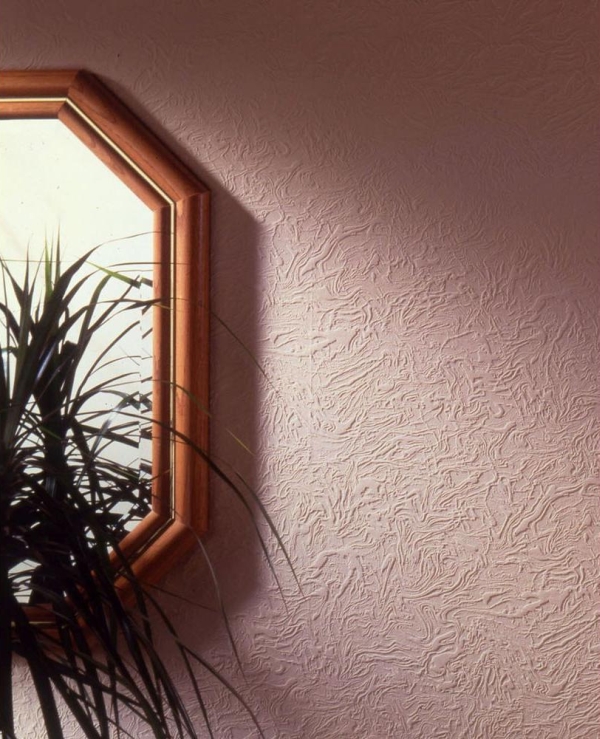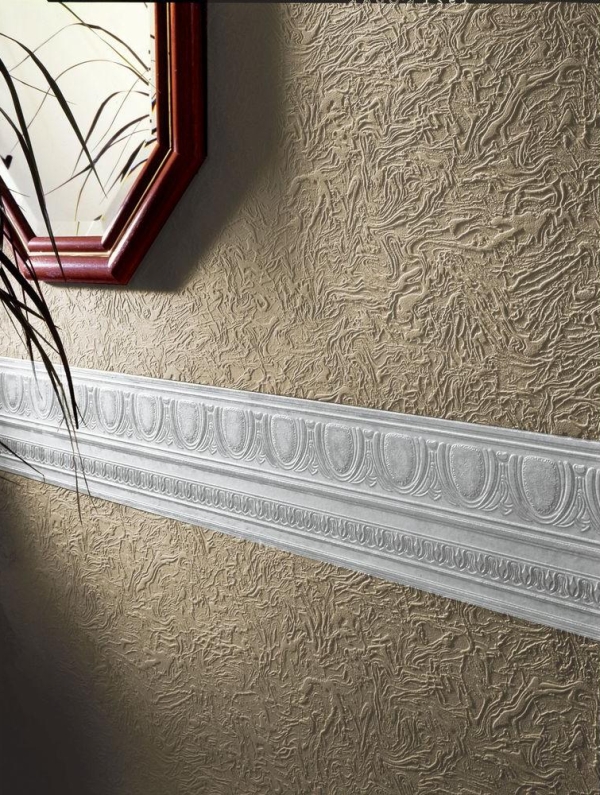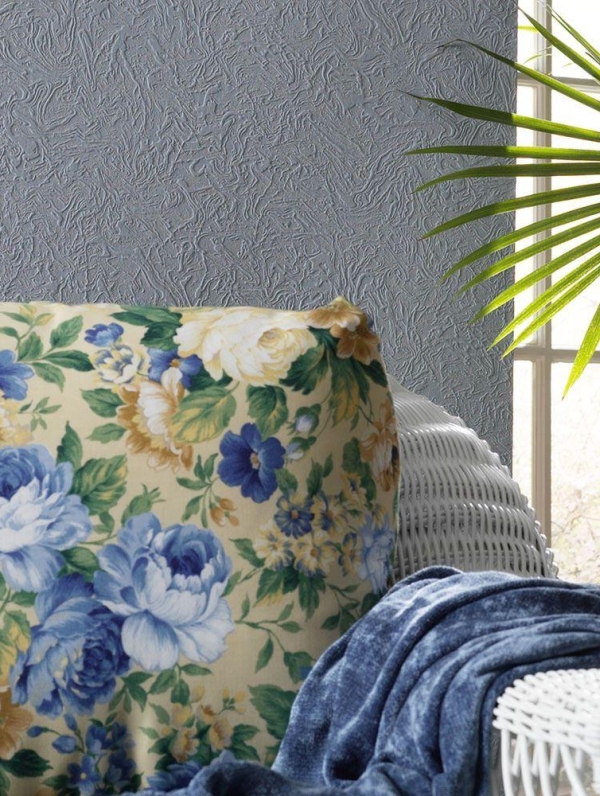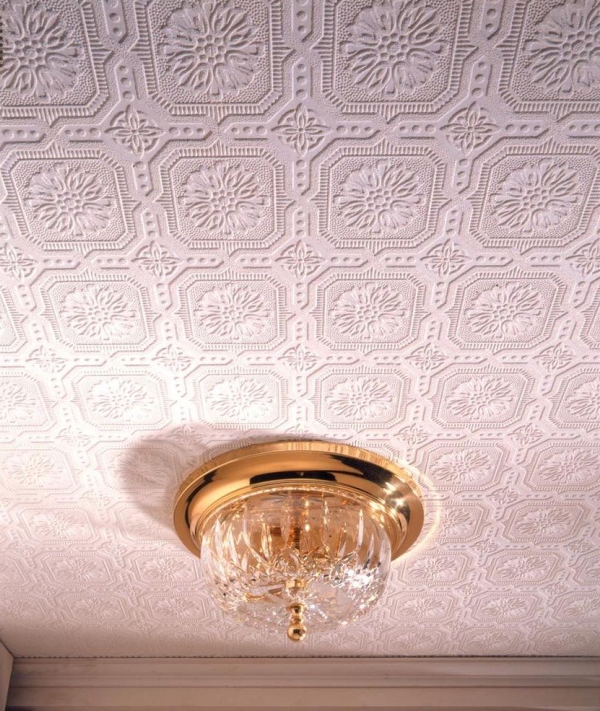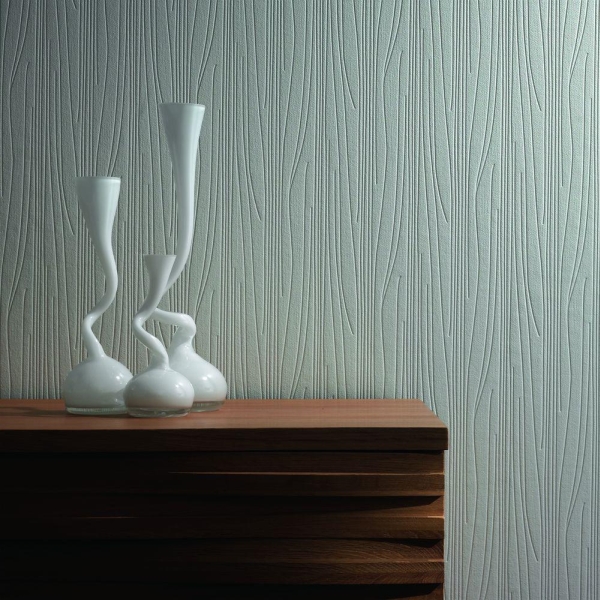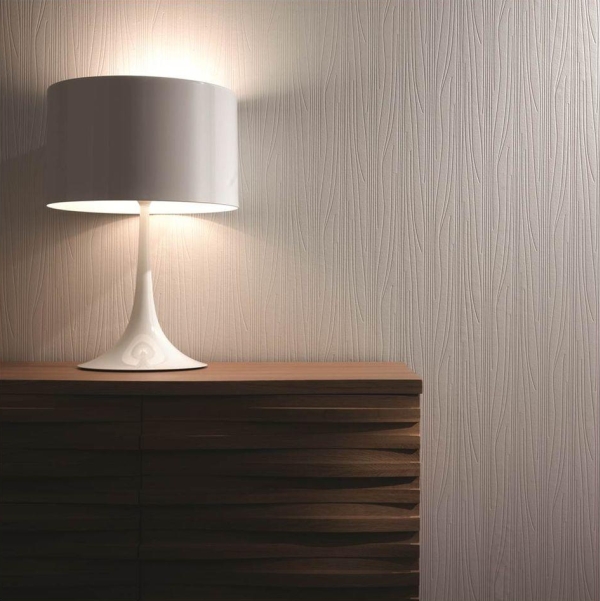Change the interior without material and physical costs - is not it the dream of every homeowner? Having become acquainted with the photo, you will see how you can give the wall texture, regardless of the size of the room, and master many more techniques, using only the wallpaper and paint.
Use the wallpaper for painting, and you will make your life easier
Comparing your preferences and finding cash in your wallet, you can buy any decorating material for the walls. Fortunately, current manufacturers offer a large selection: panels, wallpaper, decorative plaster, liquid wallpaper and other, no less popular options for repair.
Painting the walls in any shade you like, you do not lag behind the trends of fashion, because to pick up a modern color will help you professional colorist right in the salon. You just have to bring the finished material home and get to work. However, you will agree that monochrome, smooth walls do not cause interest. In addition, the paint, even applied in two or three layers, does not carry a soundproof and heat insulation load.
Another way to decorate the walls is to glue the wallpaper. This material is easy to use, making the surface not so cold. But it would be fair to recall the drawbacks of the wallpaper: in the case of a change in the interior, they have to be removed from the wall, which is associated with its mechanical damage. Therefore, before gluing the new wallpaper, you will have to tackle also with shpatlevaniem to level the surface.
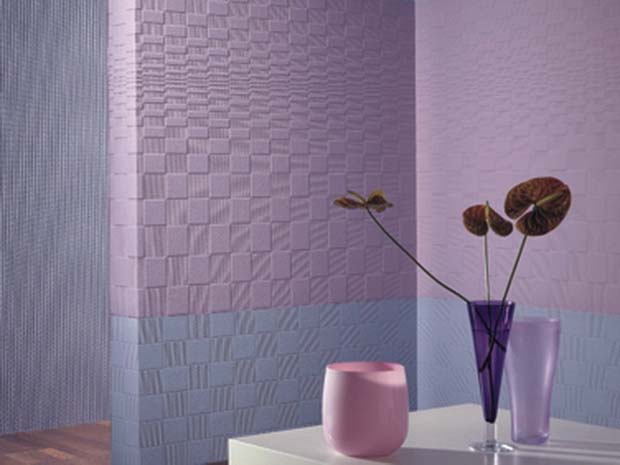
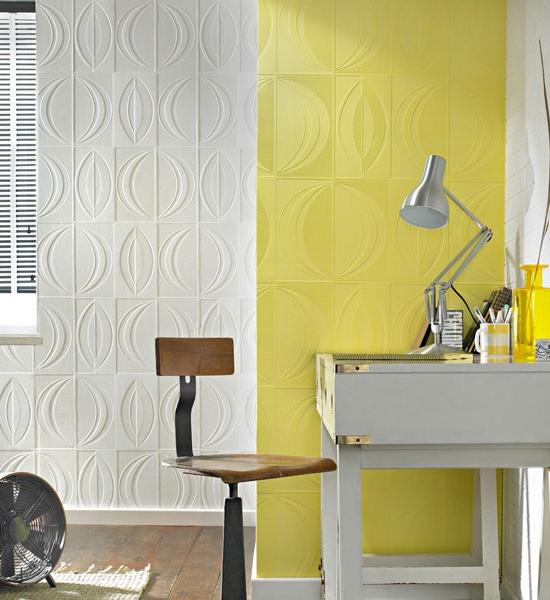
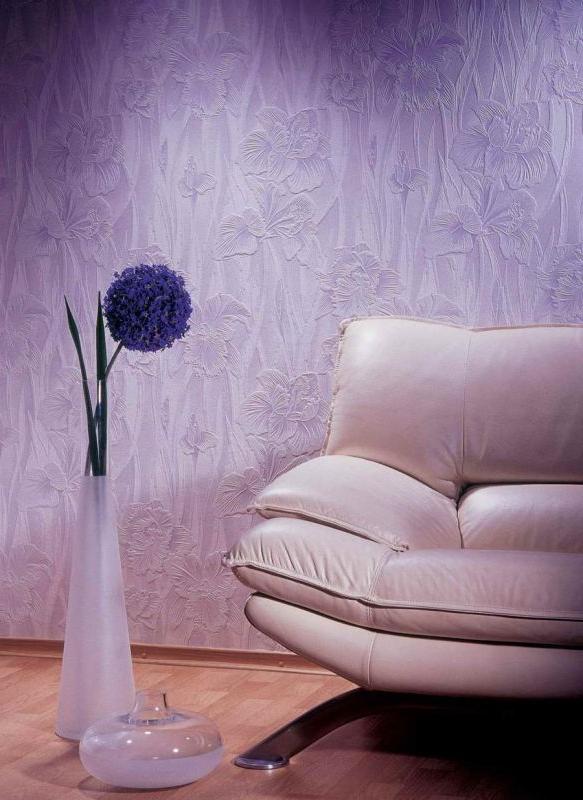
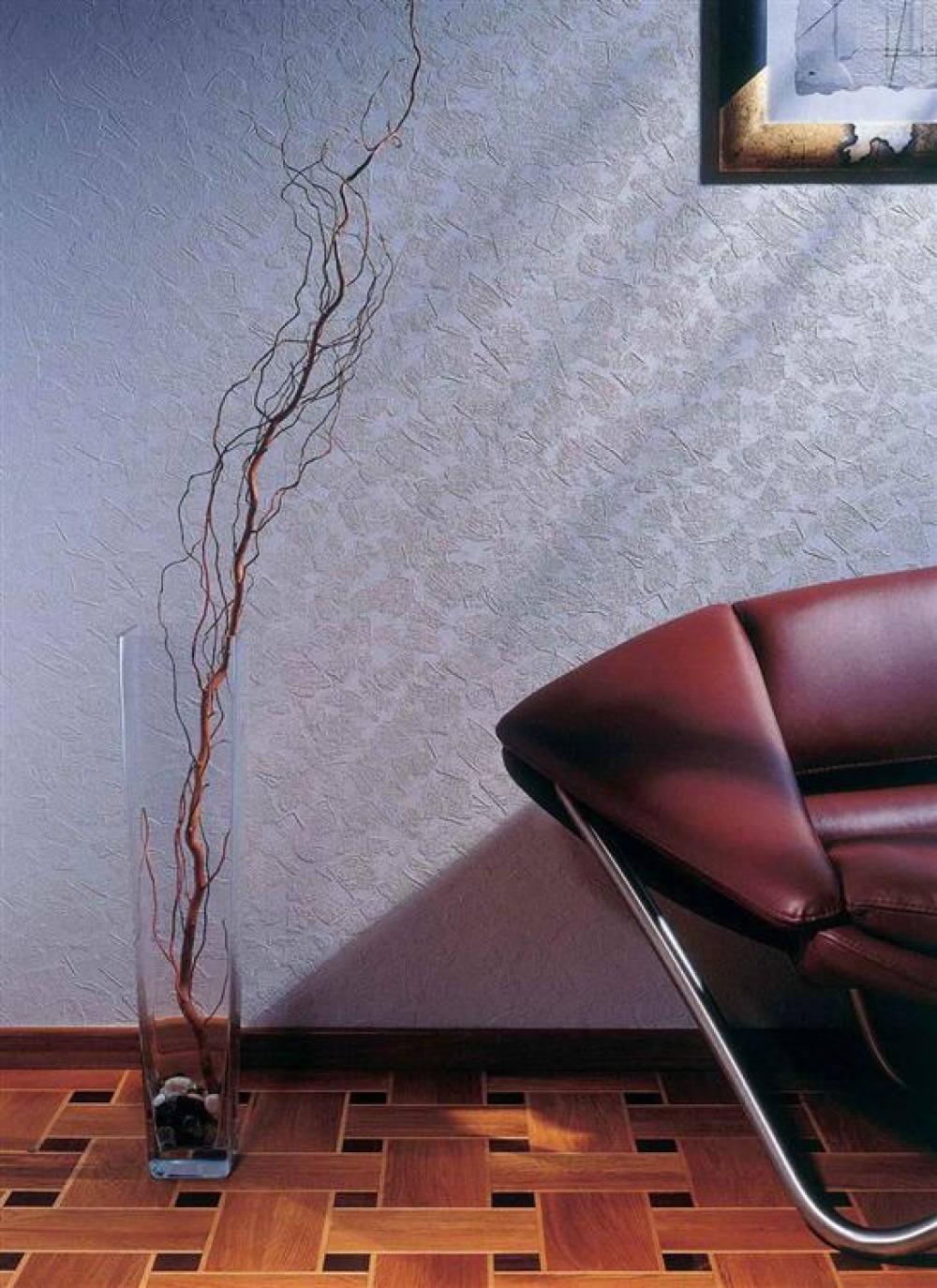
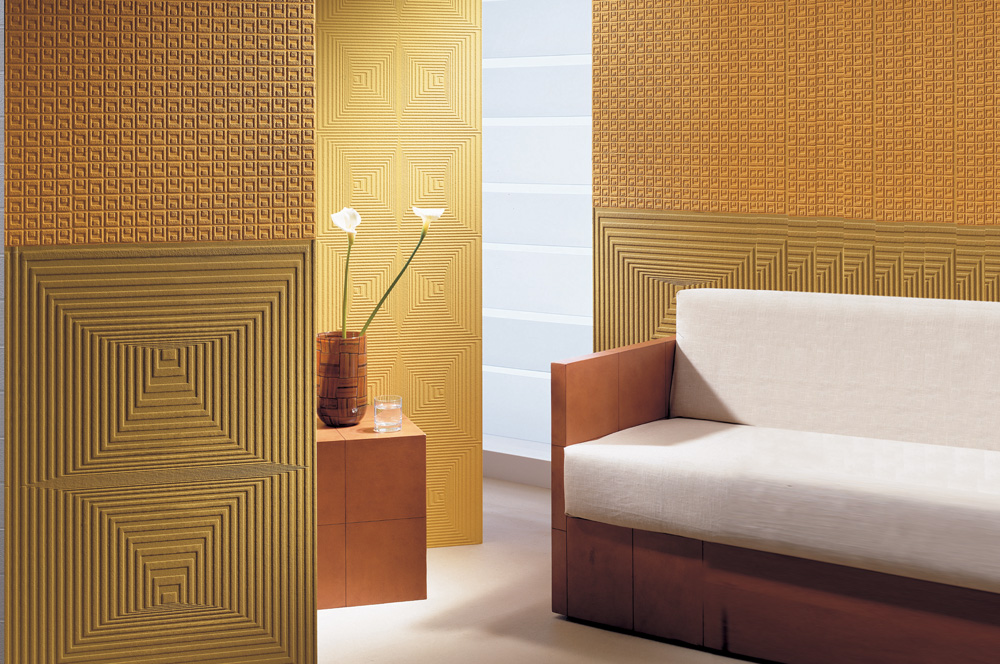
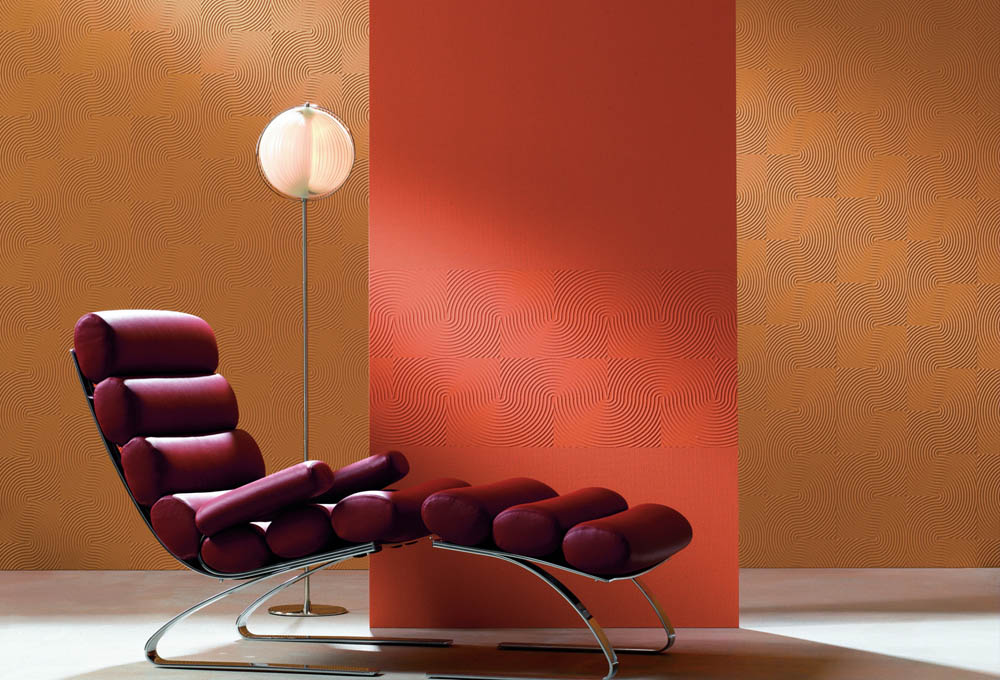
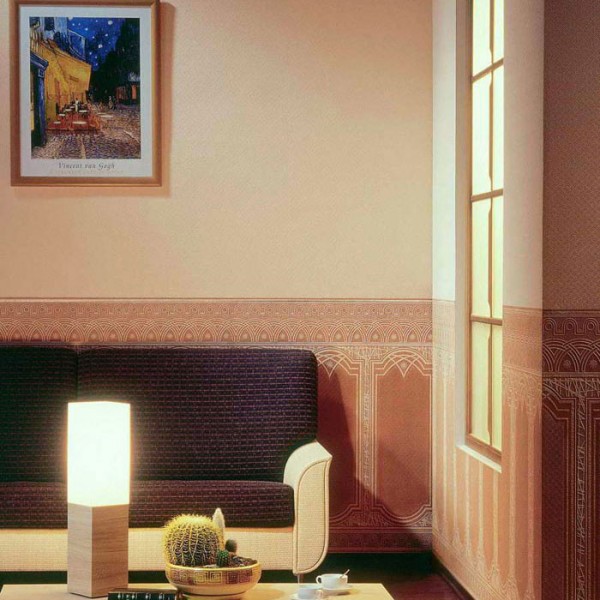
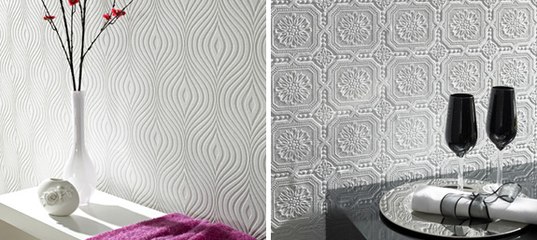
Before starting the repair, you think about which version of the finish to prefer the walls, because there are drawbacks in the first and second cases. There is a way out, and it's called wallpaper for painting.
They solve the problem of rapid design update, they can be repainted up to seven times. In addition, the room is better kept warm by an additional layer on the walls, and an interesting texture of the wallpaper will allow the walls not to be boring and bared.
Which wallpaper are suitable for painting
If someone thinks that you can paint any wallpaper, then he is mistaken. After all, if you try to update the interior with the technique described, the result is a "sad" picture: the wallpaper will begin to sag, peel, and bubbles will appear on their surface.
To avoid being trapped, remember that there are special wallpapers that were invented for subsequent staining. It:
- non-woven,
- glass walls,
- paper.
Traditionally, they are white or other neutral shade, differ from each other by production technologies, using raw materials and tasks assigned to them. Given their differences, you can choose suitable for the price and quality, rolls.
Paper wallpaper base
The first in the section of wallpaper for painting appeared paper. As the name implies, they are based on all known paper, however, to prevent bubbles and other troubles, it is impregnated with a special composition. In addition, these wallpapers are denser and thicker than their usual "brethren", because they consist of two layers. And this makes it possible to glue walls to them, on the surface of which small flaws are found. Water-repellent properties of wallpaper allow to withstand several stains, they decorate not only the walls, but also the ceiling.
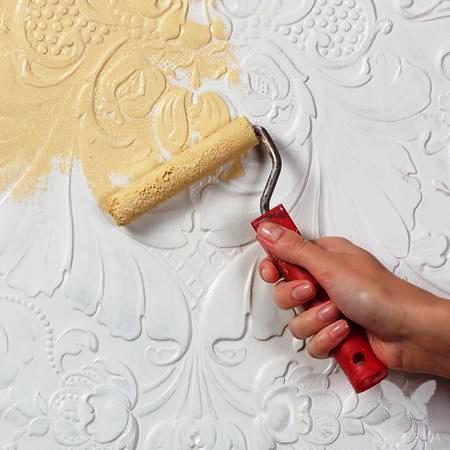
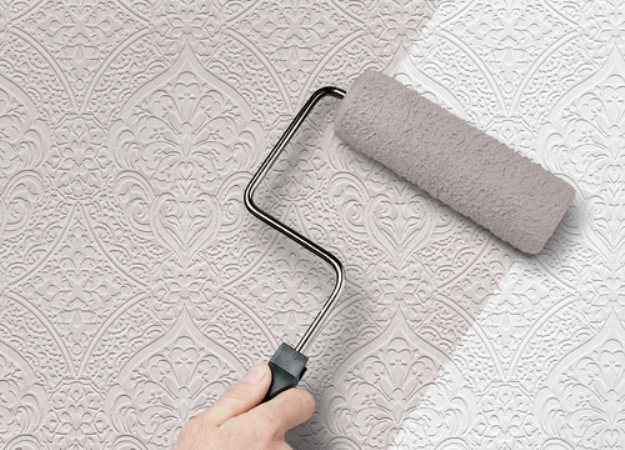
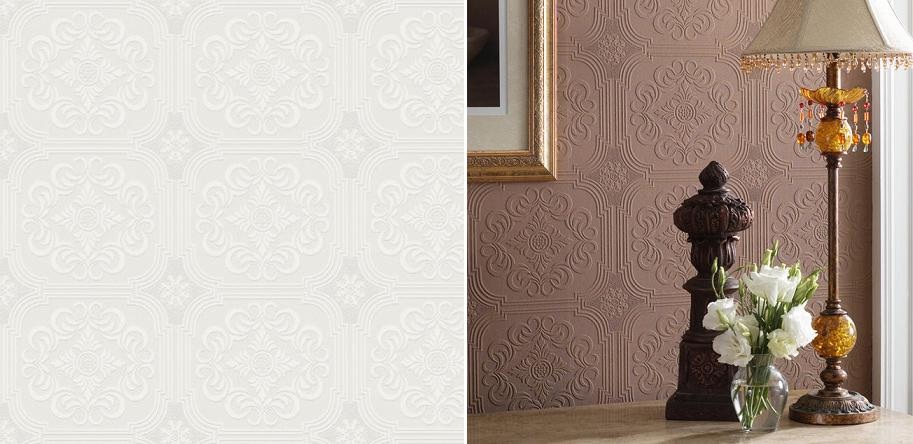
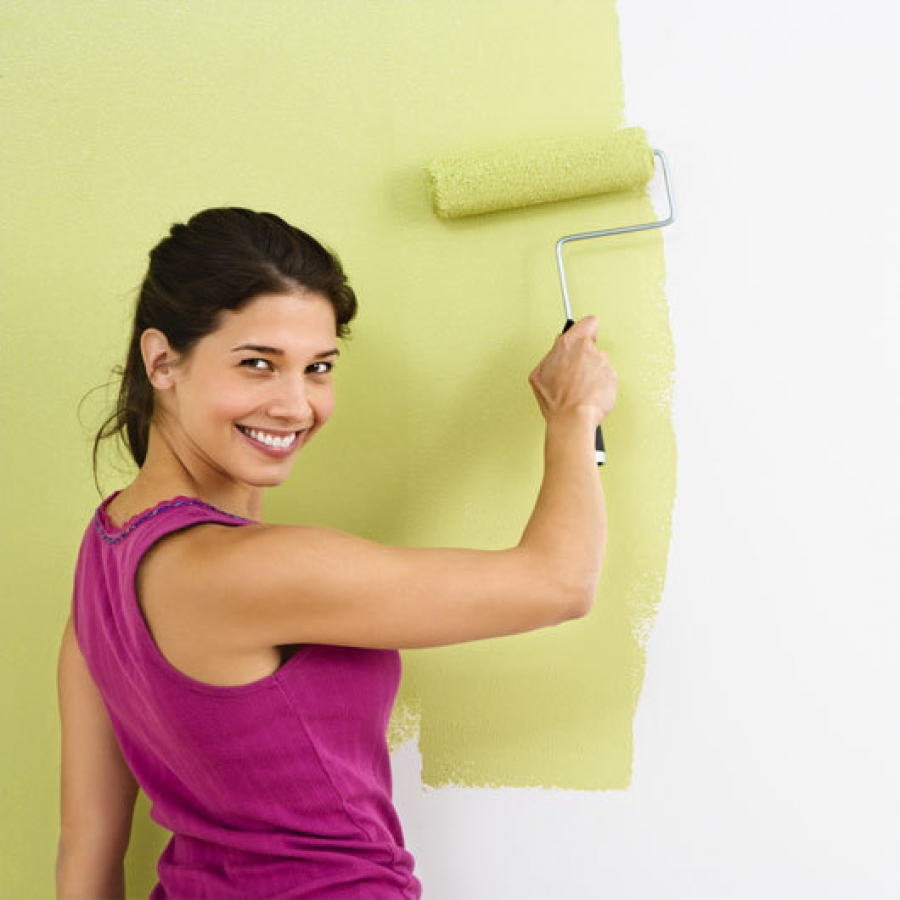
Non-woven base
Increased strength and density of non-woven wallpaper is associated with the peculiarity of their production. It consists in the fact that using a stencil on the base is applied foamed vinyl, forming a variety of reliefs and textures. Another advantage of such wallpapers is that they do not crumple.
When choosing non-woven wallpaper, pay special attention to the quality of vinyl spraying. Refuse to buy if it turns out that it is fragile and does not withstand light mechanical impact. After all, in the process of gluing you will find that there are more flaws, and this spoils the overall appearance of the interior.
- Do not allow to expand cracks on the walls.
- They mask unevenness.
- They are strong.
If you purchased an apartment in a new building, then for wall decoration, you better use non-woven wallpaper that will not allow the crack to break apart as a result of shrinkage at home.
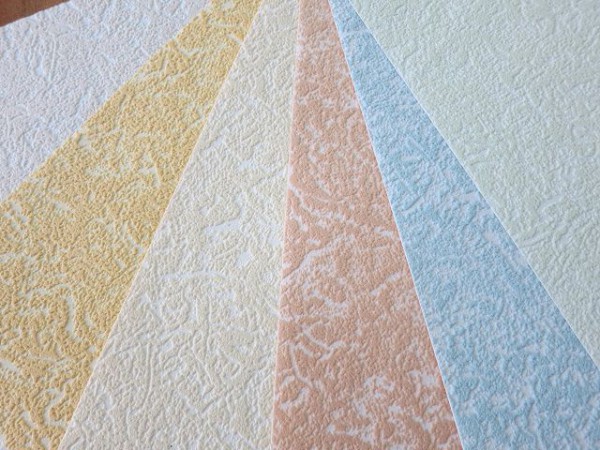
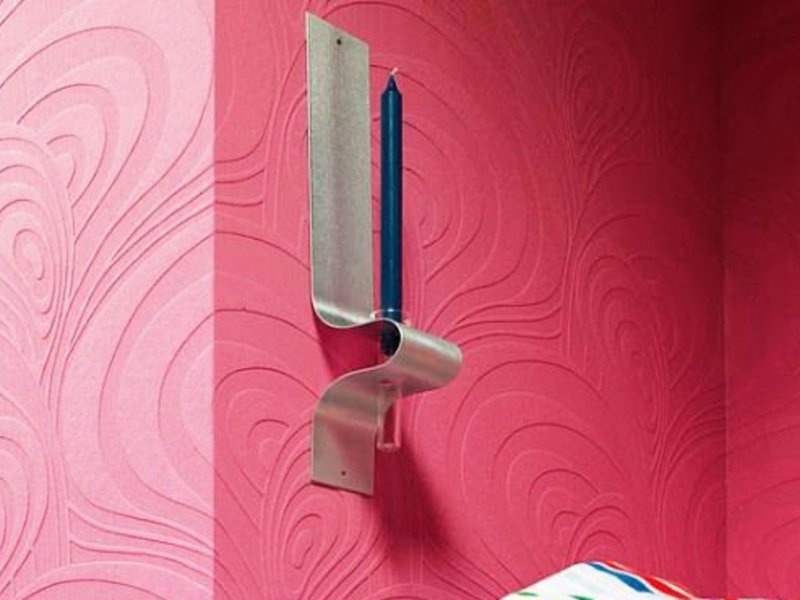
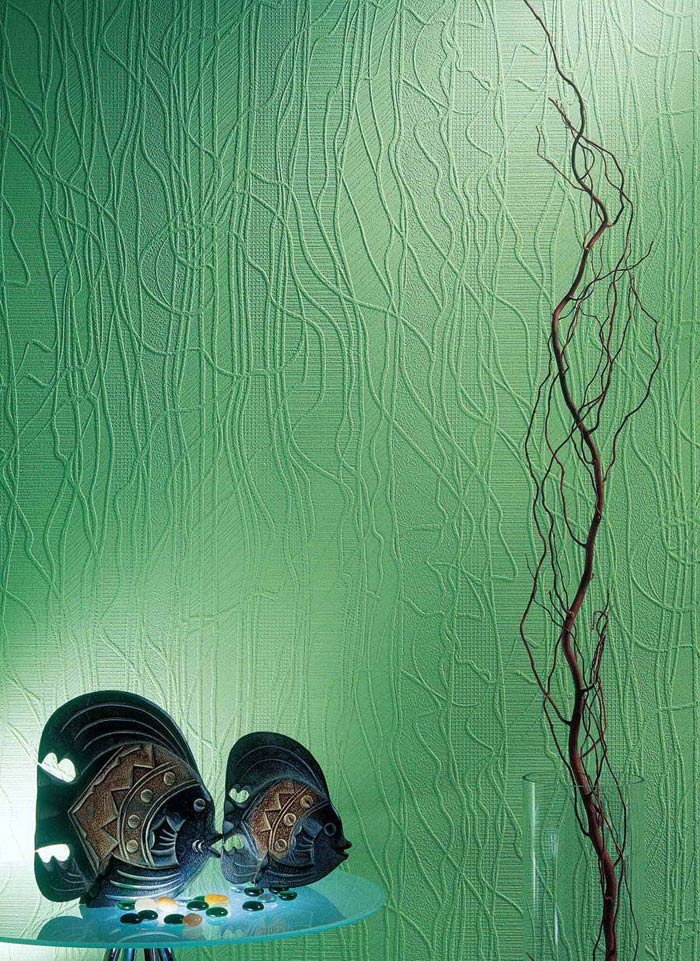
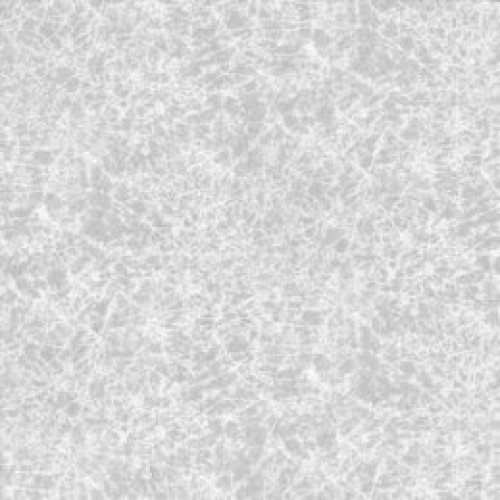
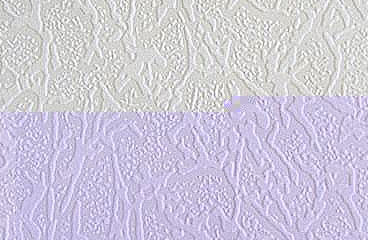
Comparing ordinary non-woven wallpaper with vinyl cover with their "close relatives", but adapted for painting, you can see that the latter are much less prone to scratching.
Fiberglass base
Fiberglass began to be used in the production of photo wallpapers, and only then it found application in another area. In addition to lime, there are also quartz sand, soda, and dolmite. In ready-made form, glass walls have different density and have all kinds of structure. Threads, interwoven, create fantasy patterns, some of them have become very popular among consumers. This: a herringbone, matting, rhombus, spiderweb.
Being in meditation before choosing: to buy or not to buy expensive wall paper, remember how much money you spend each time, buying for repair new decoration materials for wall decoration.
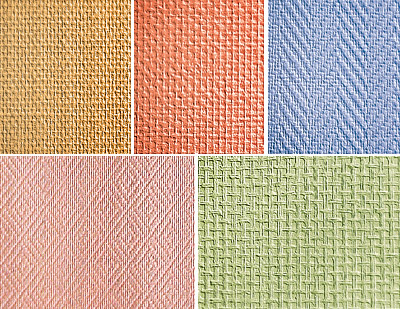
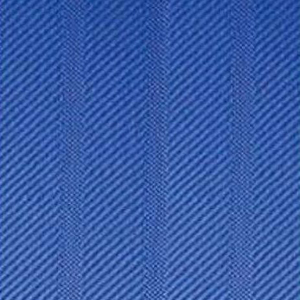
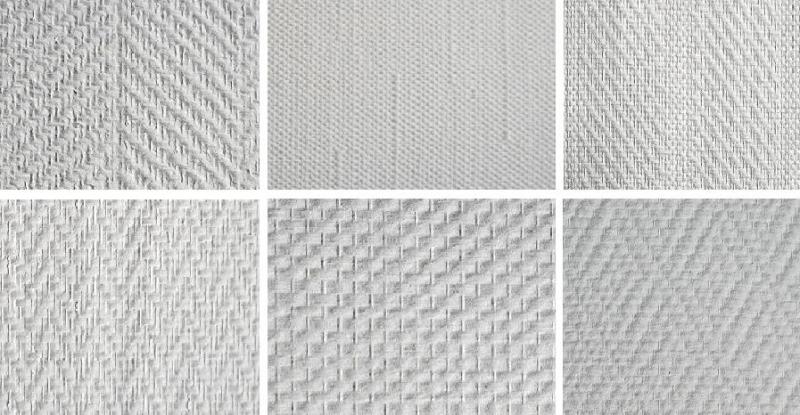
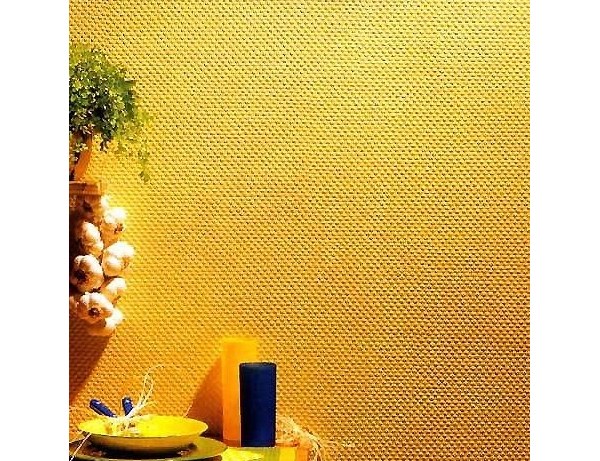
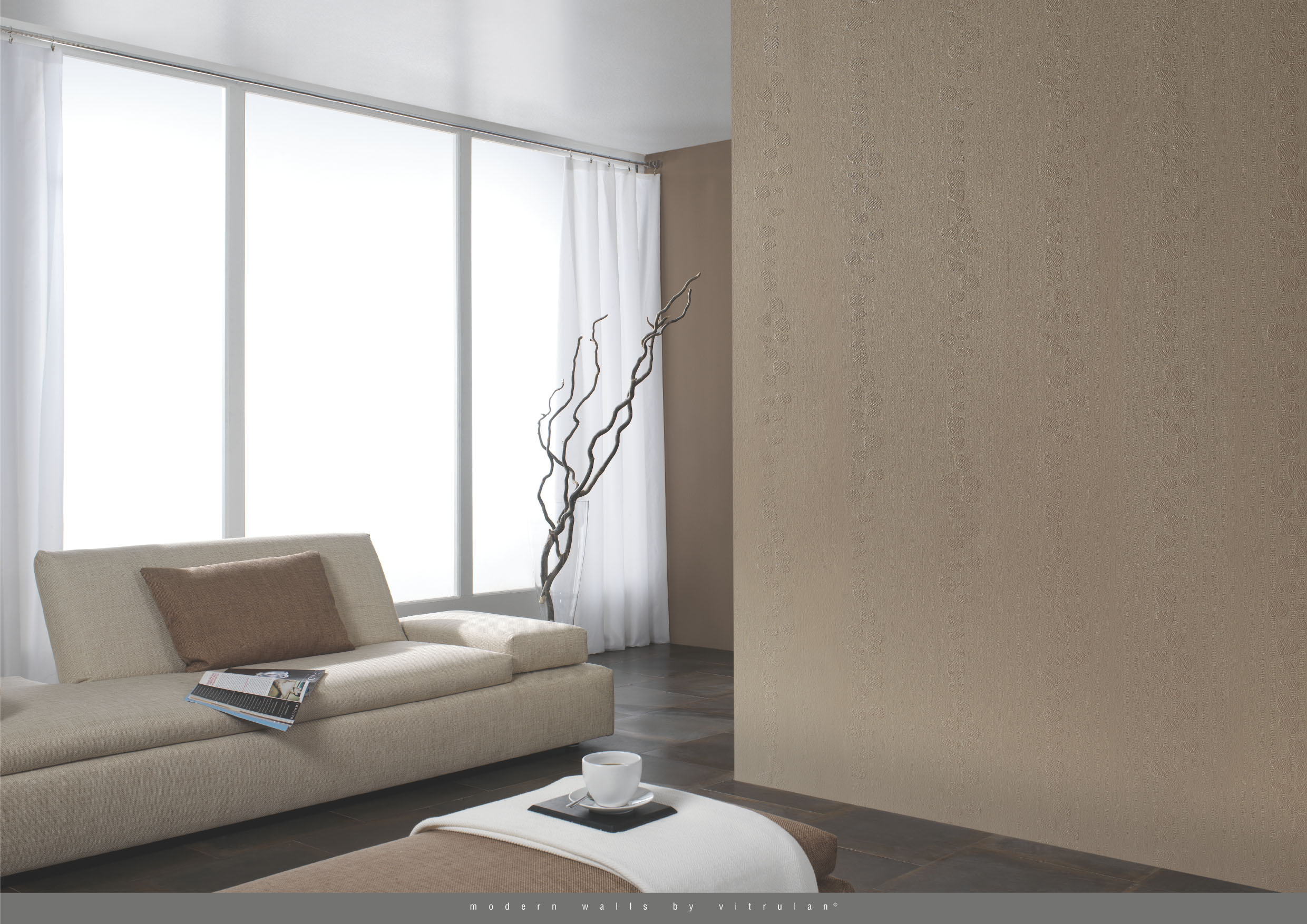
Steklooboi are not afraid of washing with cleaning agents and brushes. They are suitable for living rooms and office space.
Own decoration of the interior with wallpaper for painting
It is unlikely that there is such a work in the world that one could not do with one's own hands. Especially when it comes to repairing the apartment. Starting from the plastering of the walls and ending with the replacement of the tap in the bathroom, the home masters try to perform without hiring a construction team. So why do not you design the room using wallpaper for painting yourself? Especially since you will save your family budget doubly because you can cope with several stages at once: pasting and painting the wallpaper.
After watching the video, you will find that there is nothing complicated in this.
When preparing for painting, prepare the following tools: roller and brush for application, a container for paint dilution, in which the roller, paint tape, polyethylene film is cut to protect furniture and floor from splashes.
As for the paint, each kind of wallpaper requires its own. Steklooboi withstand latex or acrylic, for paper and non-woven fabrics, only water-based will do.
Think about how you will wash the wallpaper, and depending on the type of cleaning, choose the appropriate paint.
The wallpaper should be painted at a temperature of 17-22 *, and the second layer is allowed to be applied not earlier than the first one will dry (after 1 hour).
The texture of wallpaper with time is erased and depends on the number of colors.
If you plan to decorate the walls in a two-color version, use brushes and paint tape.
How to properly paint the wallpaper you can learn from the video.
Color combination
Combining different colors in the interior, we pursue the following goals:
- We add bright accents.
- We show creative individuality.
- We divide the room space into several functional zones.
- Create a certain style.
Trying to find the answer to the question: "How to paint walls correctly?", Remember that accuracy in the work is needed above all. After all, after looking at your "art" made in a hurry, a polite guest will probably remain silent, but will prefer not to enter this room any more.
Take note of several rules, observance of which will please both you and friends:
- Combine similar shades (beige with gray, blue with mint).
- Use a gradient combination when the transition is from the most saturated color to the less intense.
- Combine the opposite colors (purple with yellow, red with blue, green with orange).
If the talent of the colorist has not yet awakened in you, avoid combining more than three colors, for this, it is better to consult a specialist. He will tell you that the saturation, temperature and sound of colors should be similar. After all, orange-orange is in harmony with dark green, and orange with peach tinge gets along only with olive green.
Relying on your own taste, do not neglect the combinations of colors that are found in nature: they are the most correct.
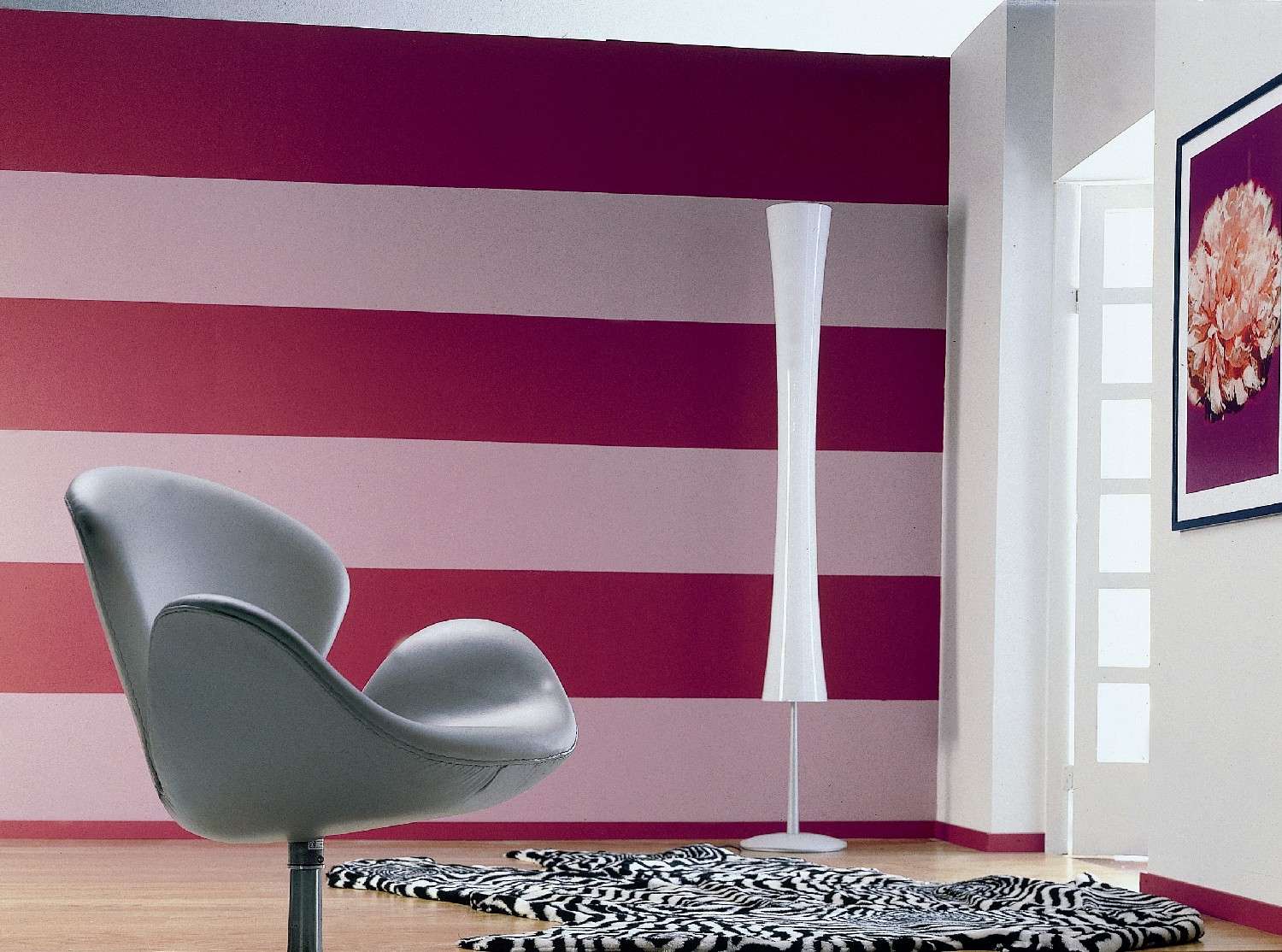
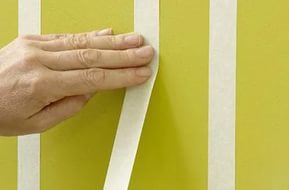
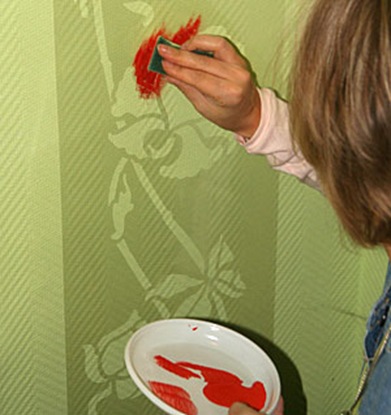
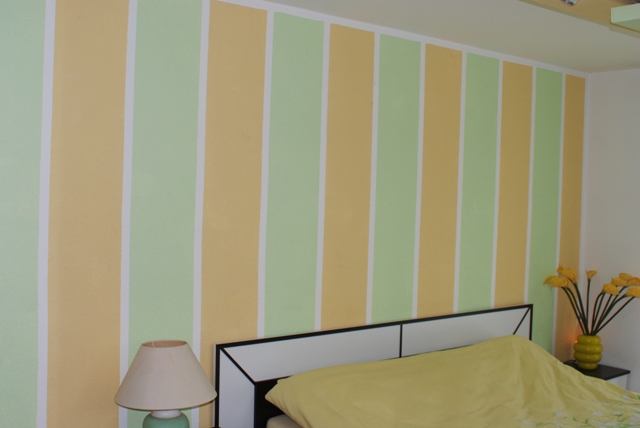
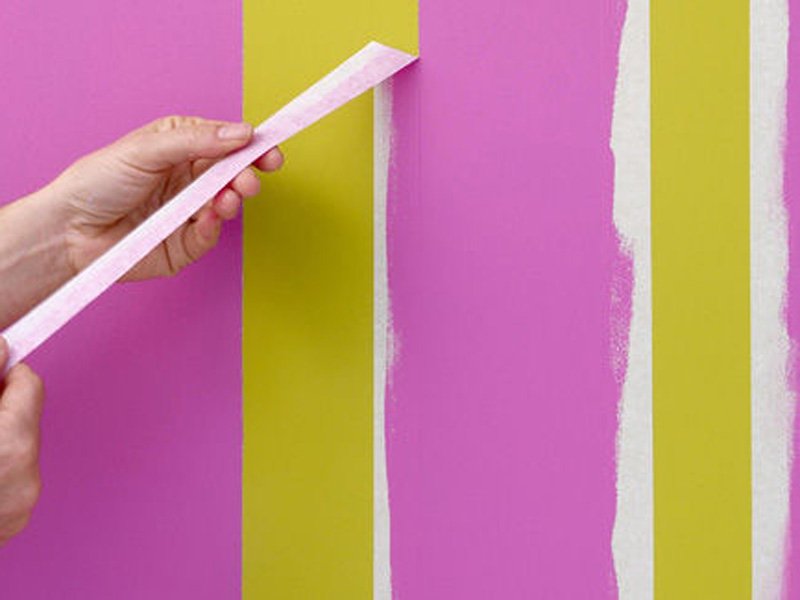
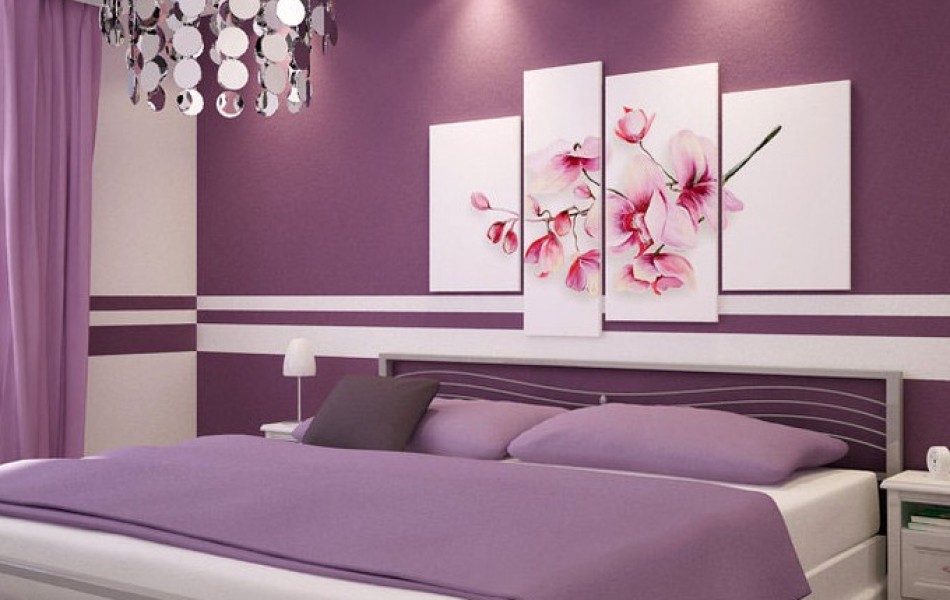
It is very important to think about how the borders of flowers will be formed, that is, the places of their connection.
To give the work a neat look, use a paint tape on the joints, which can be easily removed after the ink has dried. You can draw a border in another way, such as liquid nails "plant" a wooden rail, paper curb, polyurethane molding.
If the colors converge on the protruding corner, the aluminum profile will help to make the joint precise. He will warn the destruction of the corner in the future.
Buying a material with interest will save you from many problems. If you pigment the paint yourself, take care of its stock, because once again you will never be able to achieve an identical shade.
In the world of repair, there are an endless variety of coloring options with two colors. One of the most popular and simple is the delineation of colors horizontally, that is, when one of them is above / below the other. Historically, the lower part of the wall surface is 1/3, and the upper part is 2/3. However, no one prevents you from creating your own division, for example, to draw a line in the middle or to allocate for the top color only 1/3 of the wall.
Do not you like horizontal color separation? Then use the vertical, and you can select individual functional areas in the room. Effectively it looks like a gradient, when the transition from one shade to another is smooth and without clear distinctions. This technique can be used by painting different walls in a separate tone of the same color.
For the presence of protrusions or niches in the room sometimes you want to pay special attention, coloring them in different colors you will achieve the desired result. Arrange accents will help use for niches of a shade that is slightly different from the base in the dark or light side. Fantasize and you will definitely come up with your "chip". For example, we suggest drawing panels in the lower part of the wall that are very light in execution: marking with paint tape on the painted base color of the wall, all sorts of geometric shapes and using the sprayer "walk" along the contour with another paint. After drying, carefully remove the adhesive tape.
It is interesting to color the room with stripes. Multicolored narrow strips, going from floor to ceiling, occupy a lot of time in the implementation, but what a result!
The width of the strips affects the speed of work and the gimp with gluing of adhesive tape.
Creative individuals who try to realize the most unexpected fantasies, come up with original ways to paint their house and make it a unique creation. That only there are drawings in the style of graffiti, the design of borders zigzag or wavy line. From the curly lines it is difficult to refuse? Then decorate the room with multicolored rhombs, huge peas.
Interior using wallpaper for painting in rooms of different purposes
Living room
Being in the living room, your guests will certainly pay attention to its design. It is important that it meets modern requirements and makes a good impression. Not for nothing in the living room is determined by the taste of the owners, and their abundance. In this room it is customary to celebrate solemn events, receive guests, which means that maximum attention is given to its design. Try for yourself and for your friends who will evaluate the design of the main room in the house, relying on the first impression.
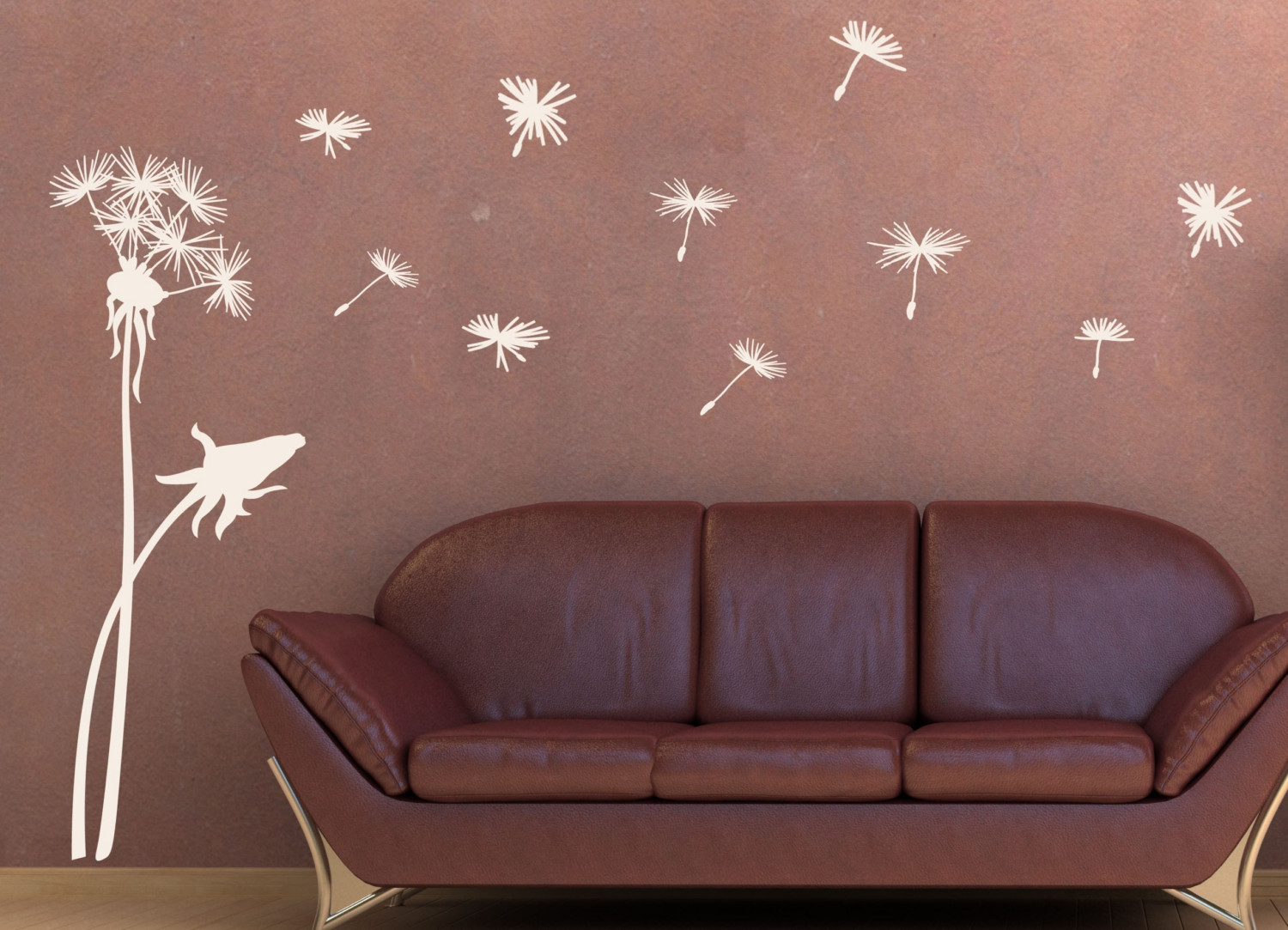
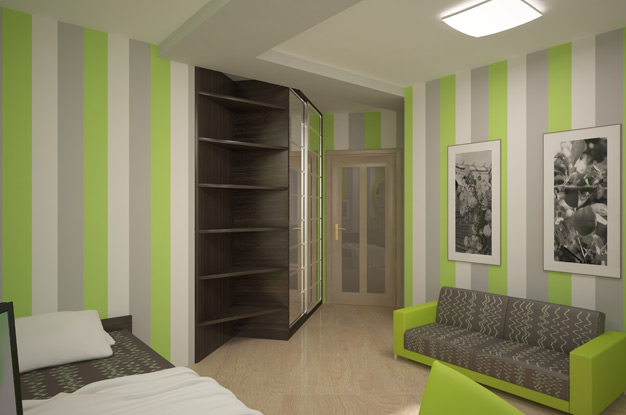
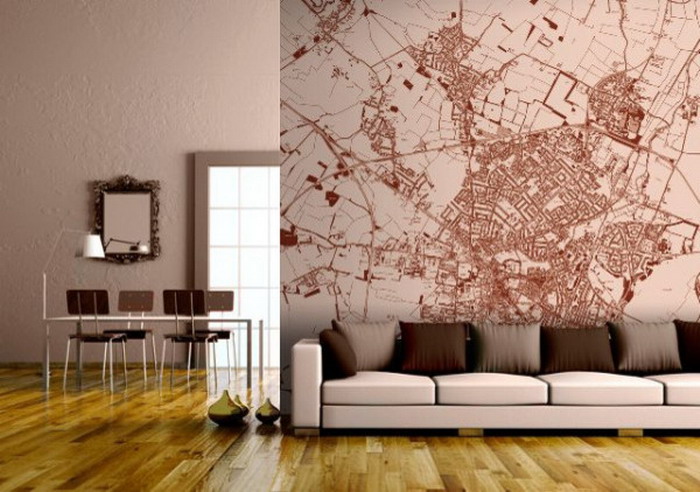

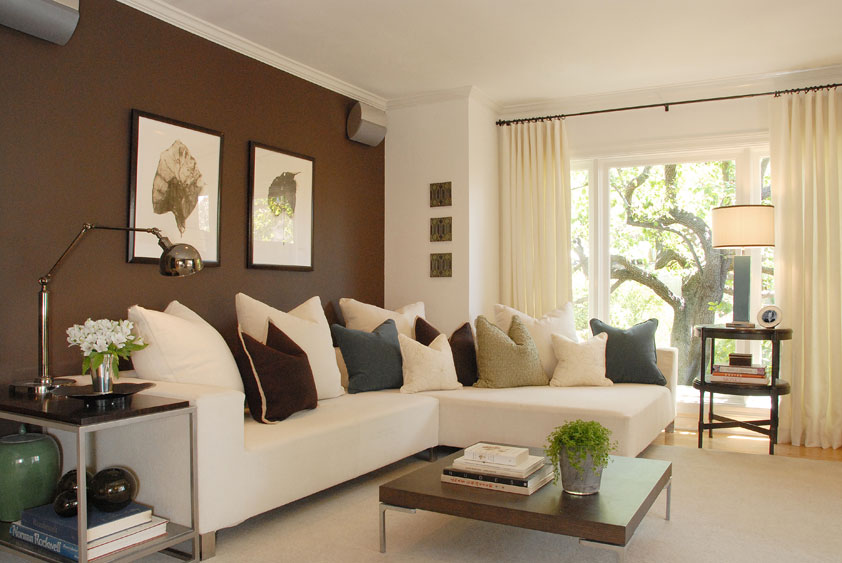
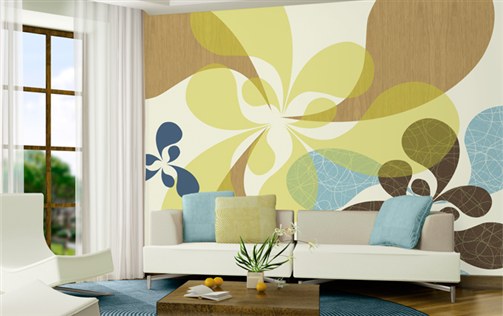
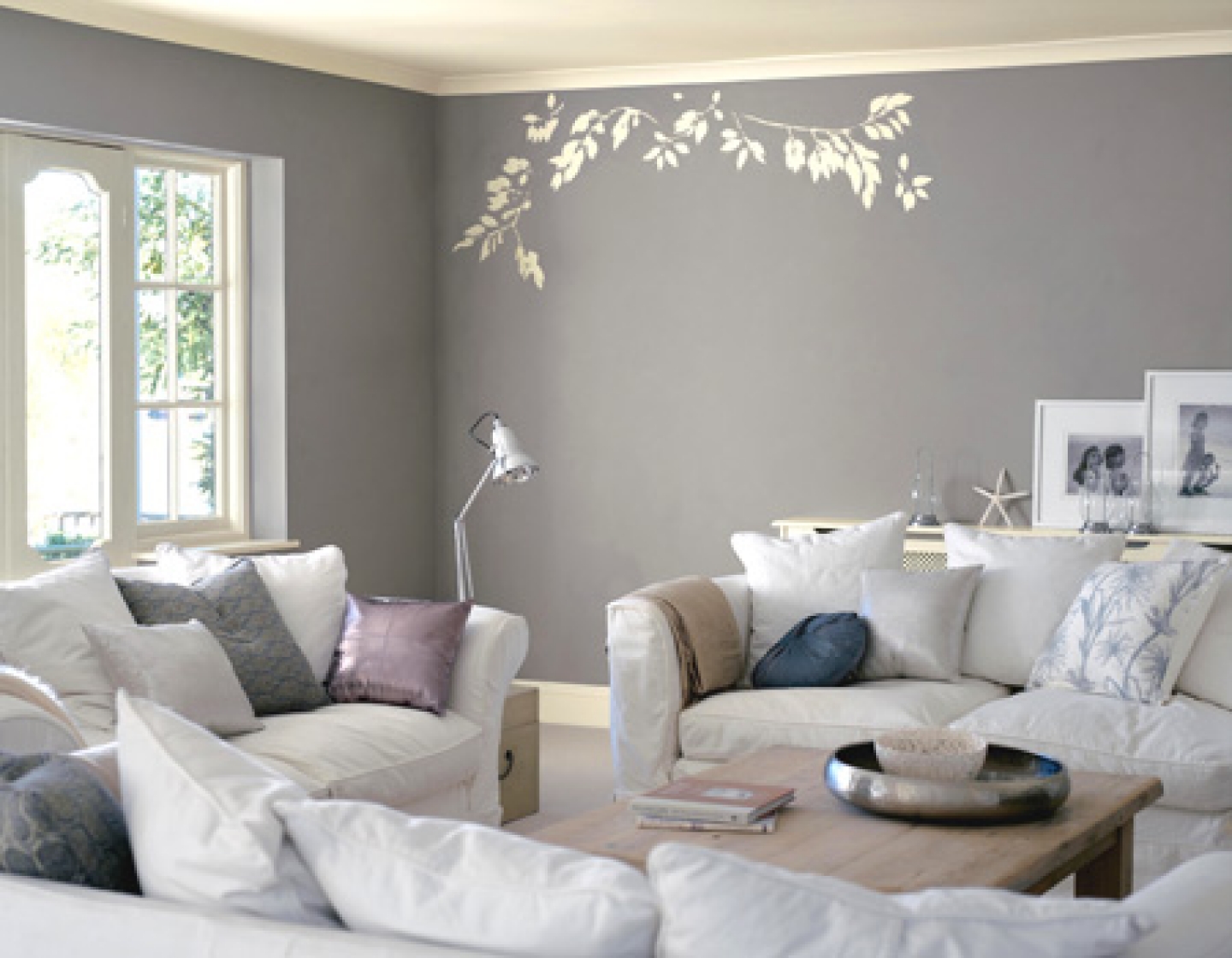
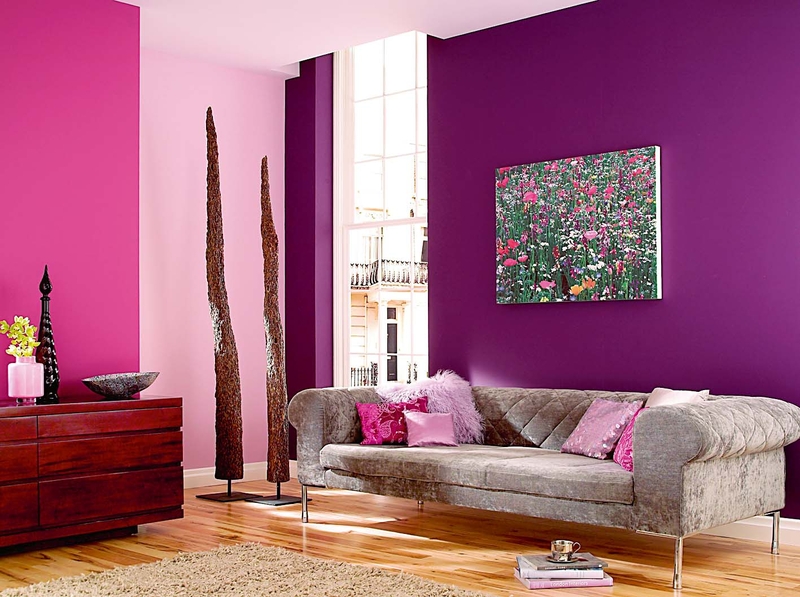
Bedroom
The room in which everything should adjust for relaxation, should be "dressed" in calm, unobtrusive colors. This does not lead visitors to the excursion, so everything in it is subordinated to your tastes and desires. When buying a wallpaper paint in the bedroom, give preference to pastel shades, against which background bright small details (floor vase, painting in a color frame) will look good.
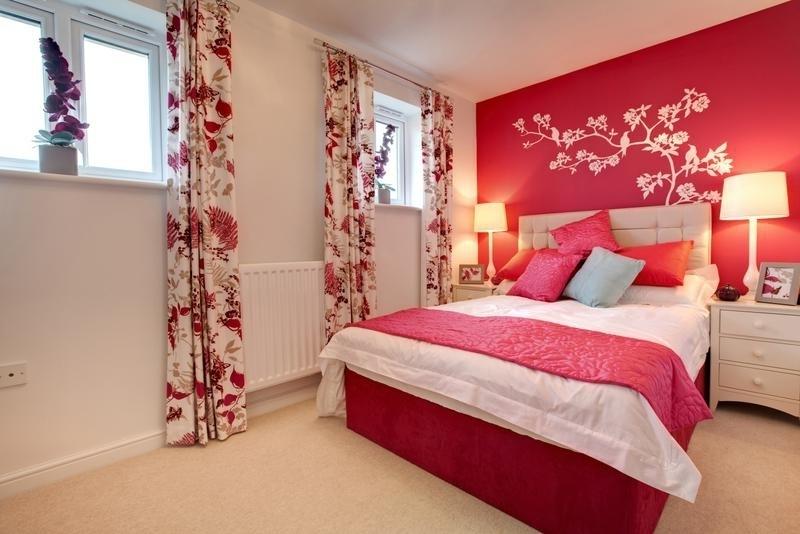
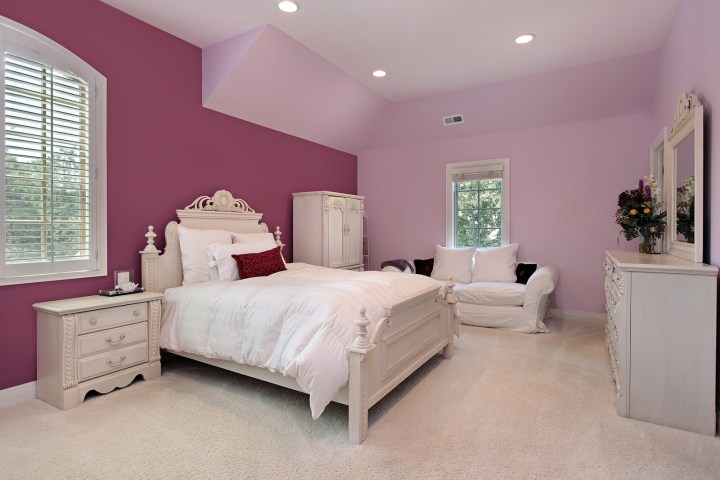
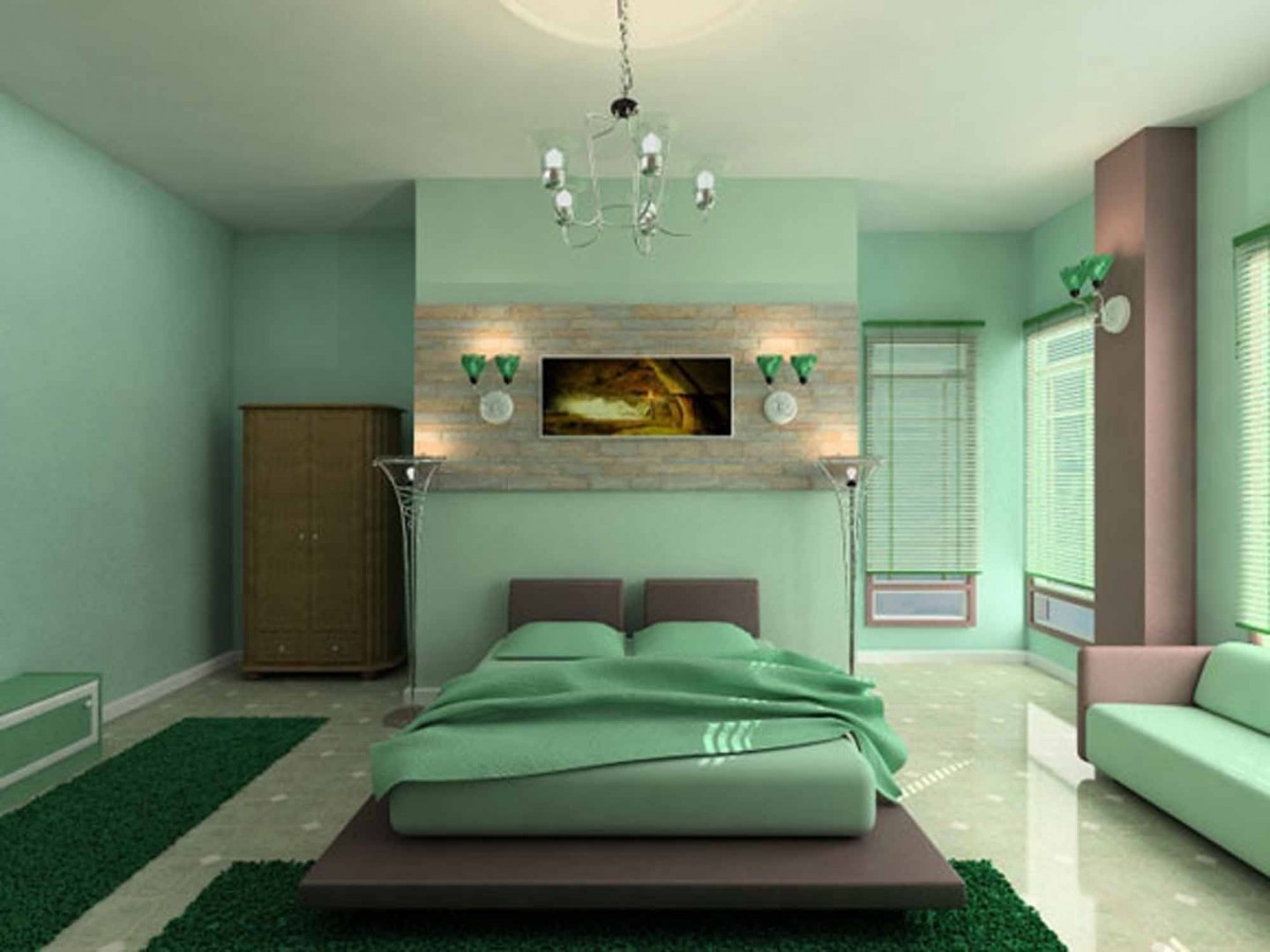
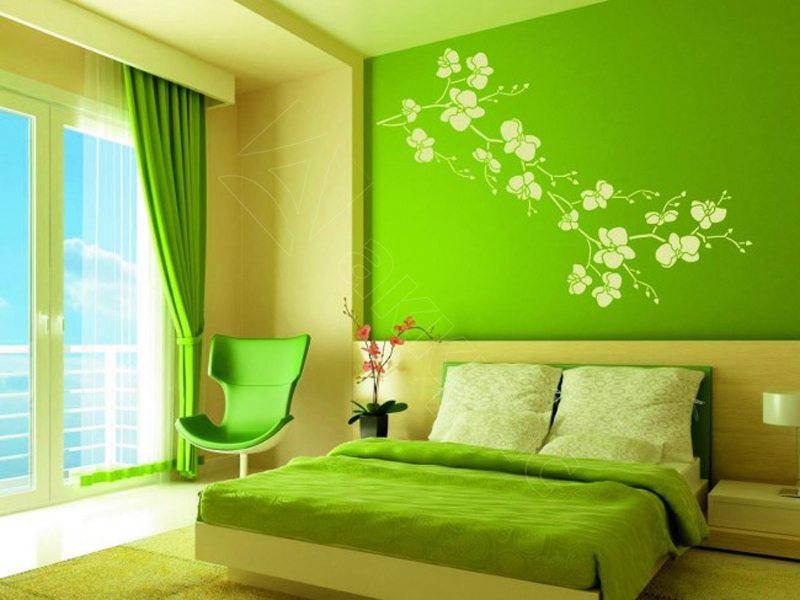
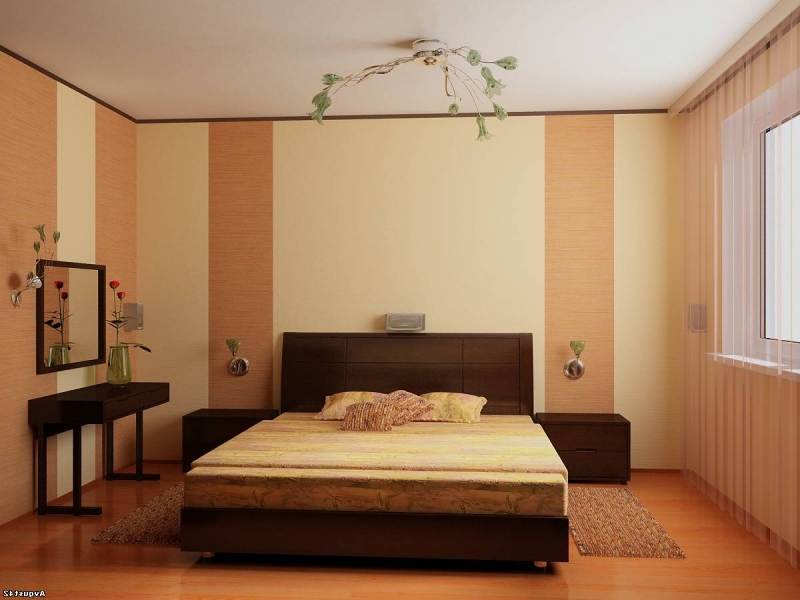
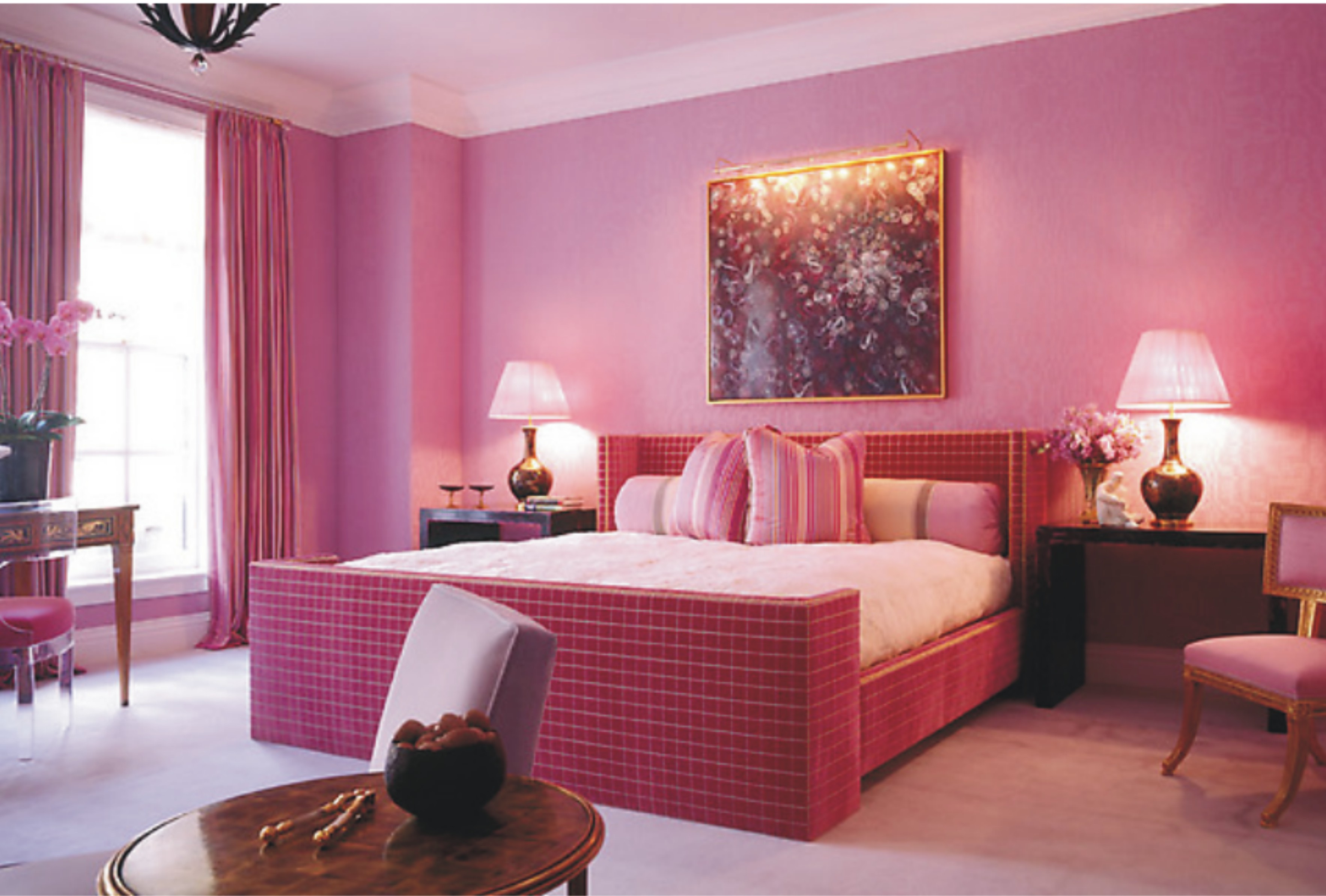
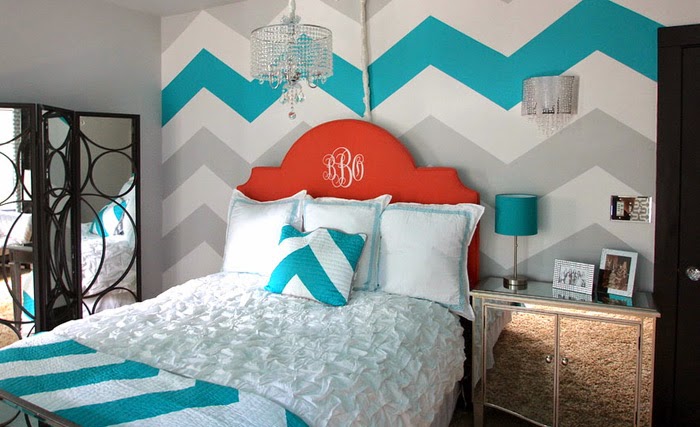
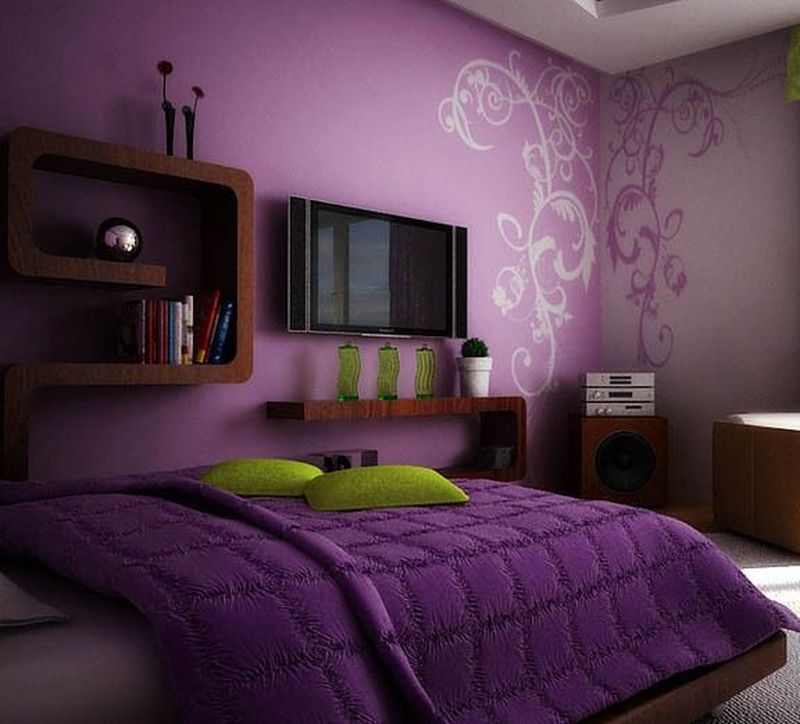
Children's
Where, if not in the nursery, can you realize your most daring inventions? In the game zone, you must do something like that! A variety of painting techniques, incredible shapes, colors, will make the job of organizing an interior interesting and exciting, and it is possible that your child will be able to equip his possessions. Do not deny him this pleasure, because the room created with his own hands, will be especially nice to him.
Pasting wallpaper for painting in a children's room, consider its age. If he likes to draw (and he certainly likes to draw on the walls), give him this opportunity and leave one wall intended for creative pursuits. Such wallpaper will not need to be permanently re-glued, because it's enough to simply repaint them.
There are special wallpaper-coloring with the image of cartoon characters from your favorite fairy-tales. The child, keen on the process of decoration, will forget about everything in the world and will give his mother more time for household chores.
Remember that the nursery requires cleanliness and order, so it is necessary to carry out wet cleaning as often as possible. Choose wallpaper for painting, which withstand multiple brushing and water.
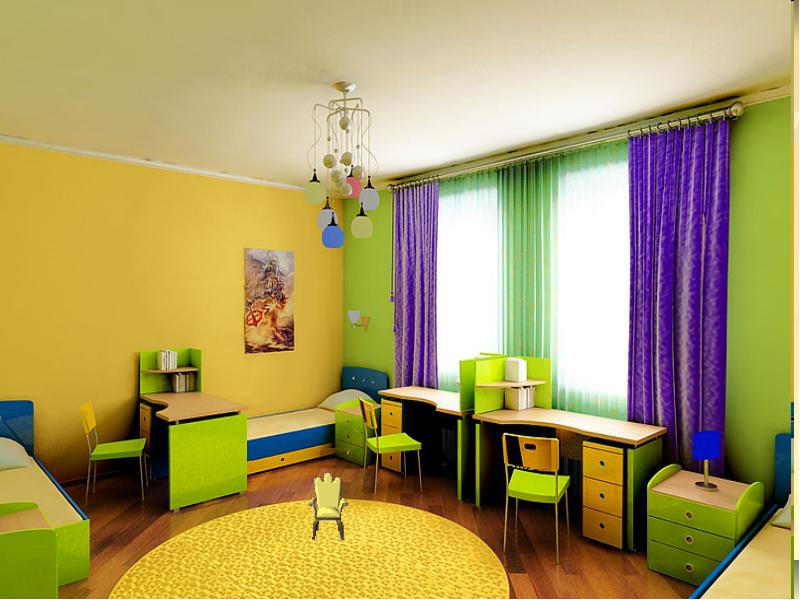
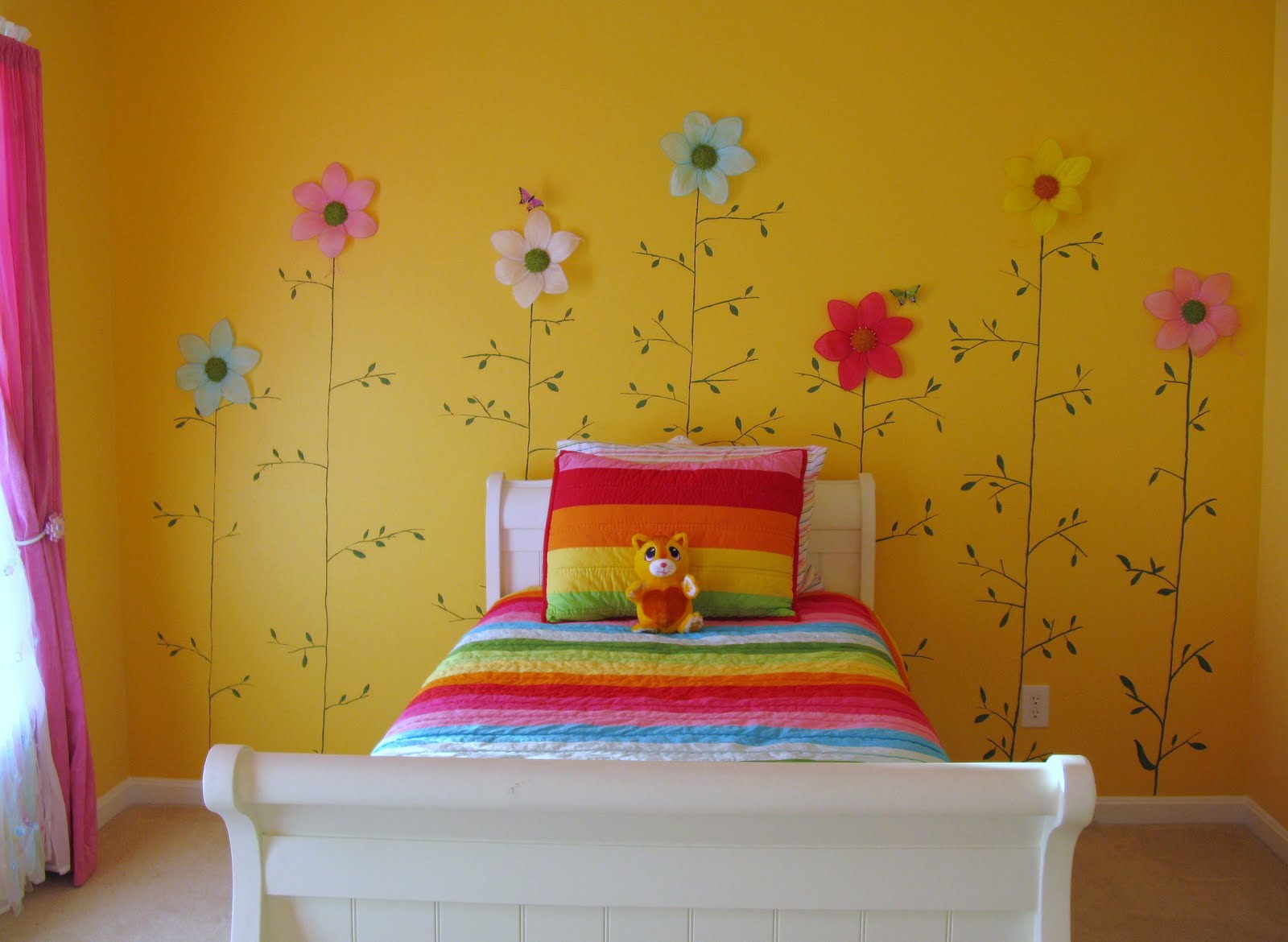
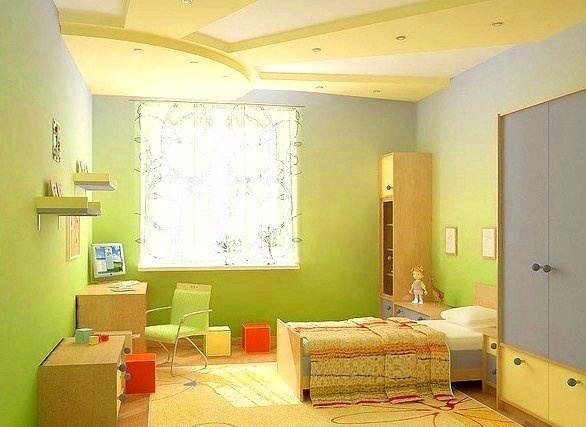
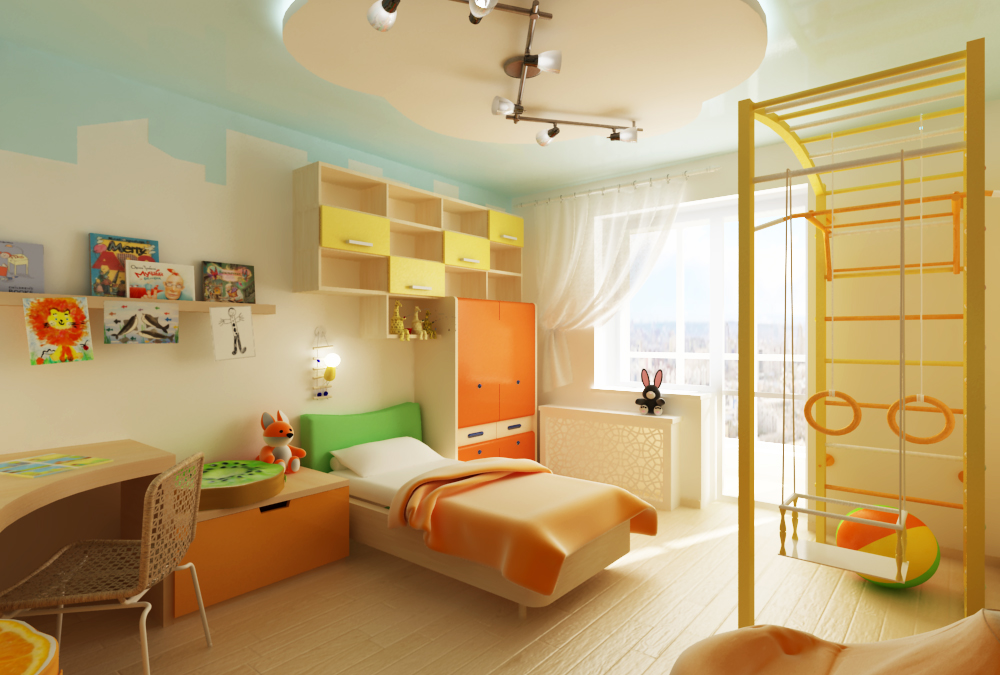
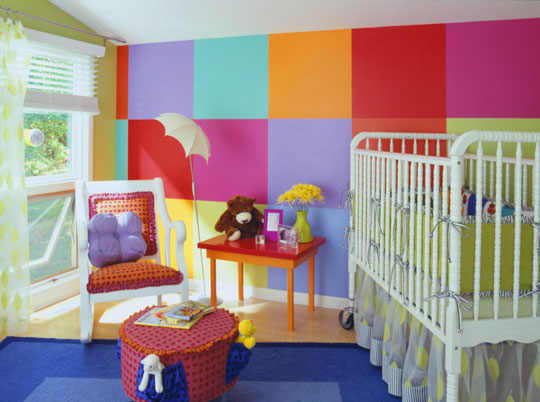
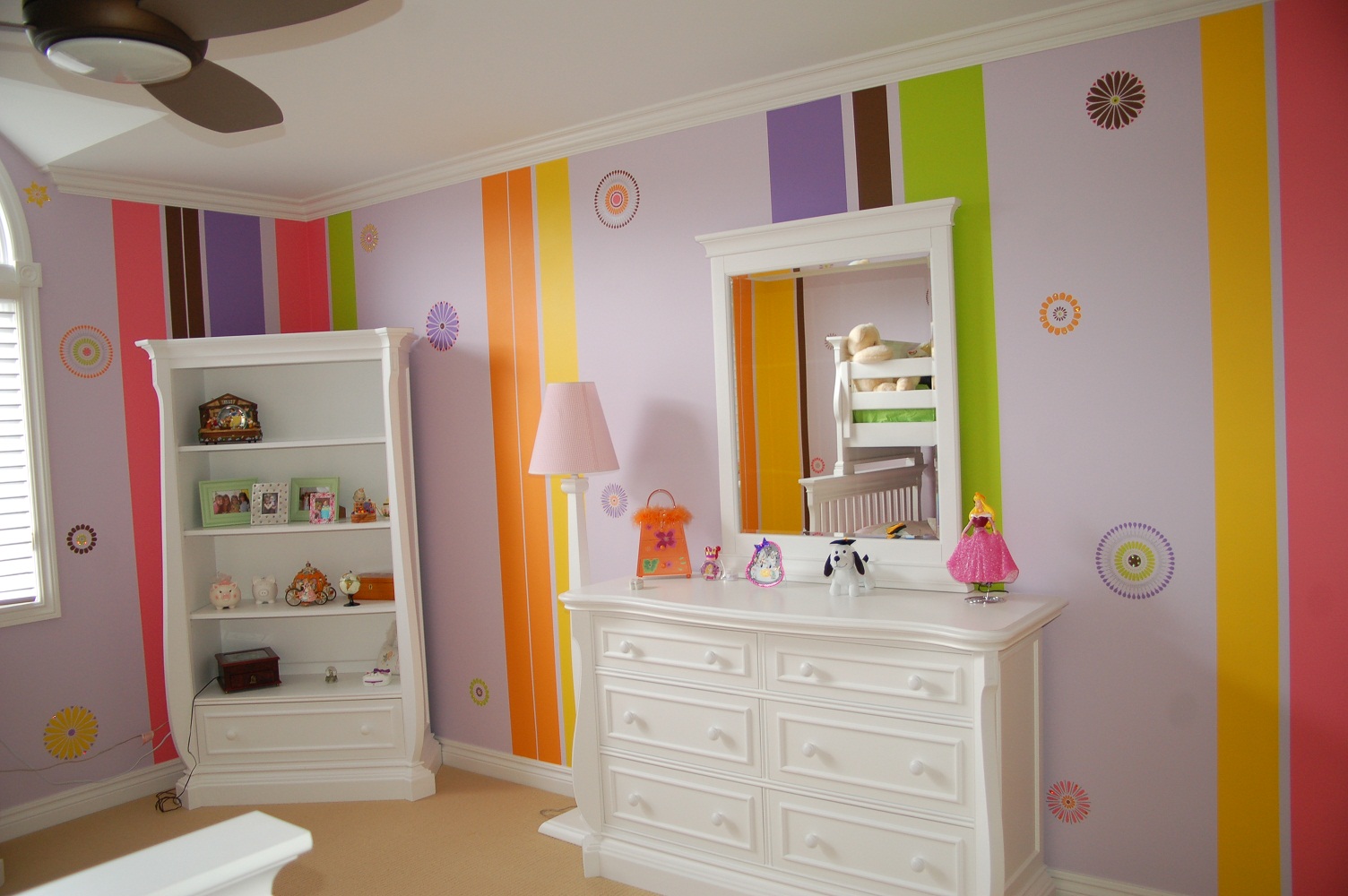
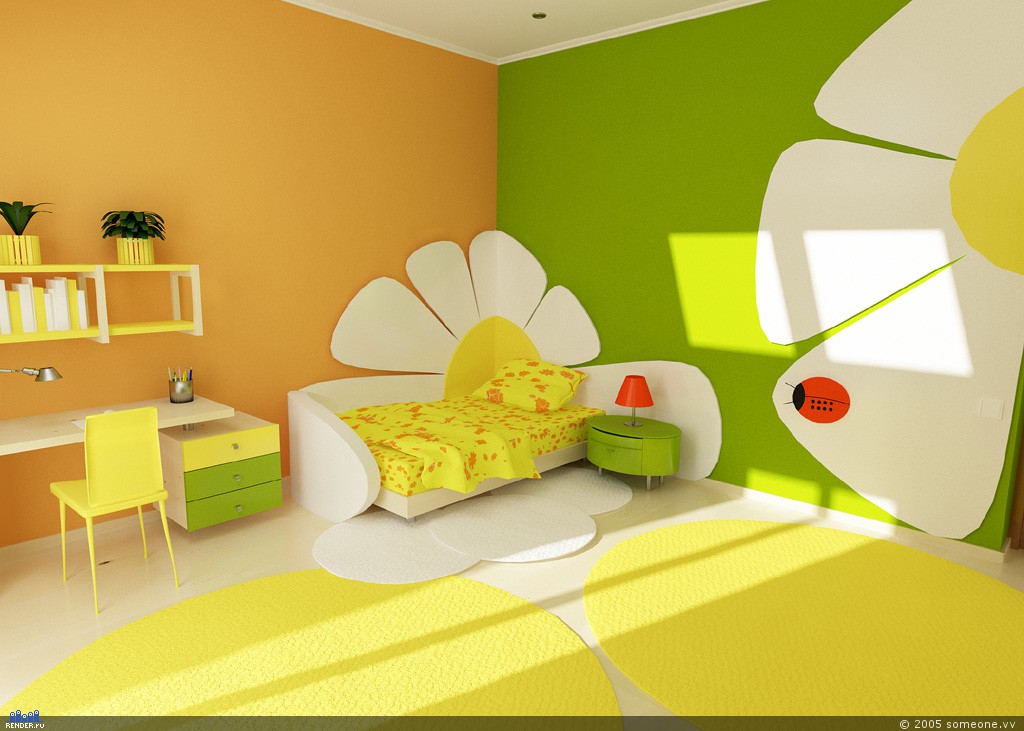
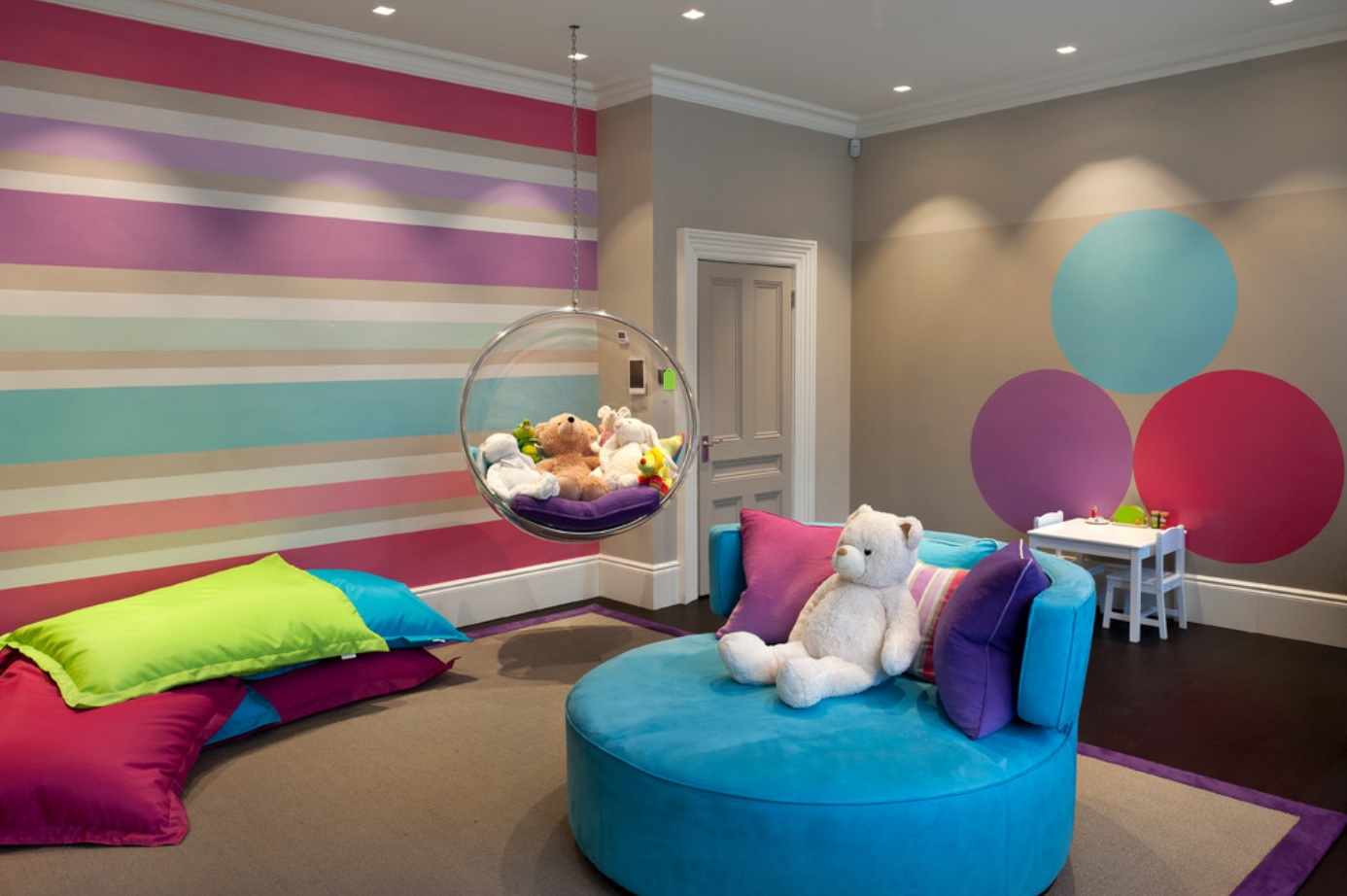
Kitchen
Strength, thermal and moisture resistance - the main requirements for wallpaper for the kitchen. In addition, due to its purpose, the kitchen suffers from falling on the walls of drops of fat and other food residues. This means that the wet cleaning in the room must be done systematically. Finishing material that is capable of withstanding multi-use washing is glass mosaic.
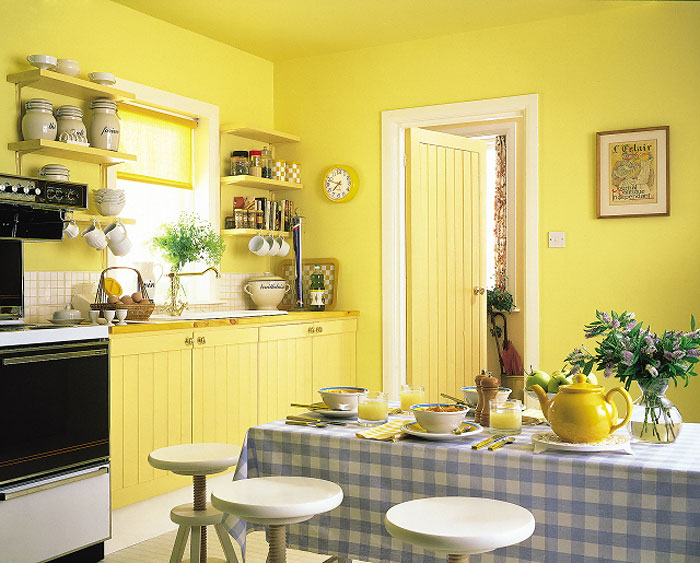
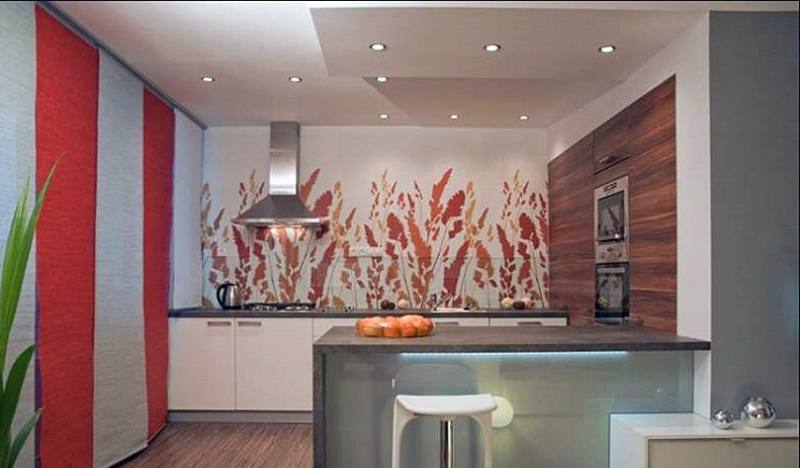
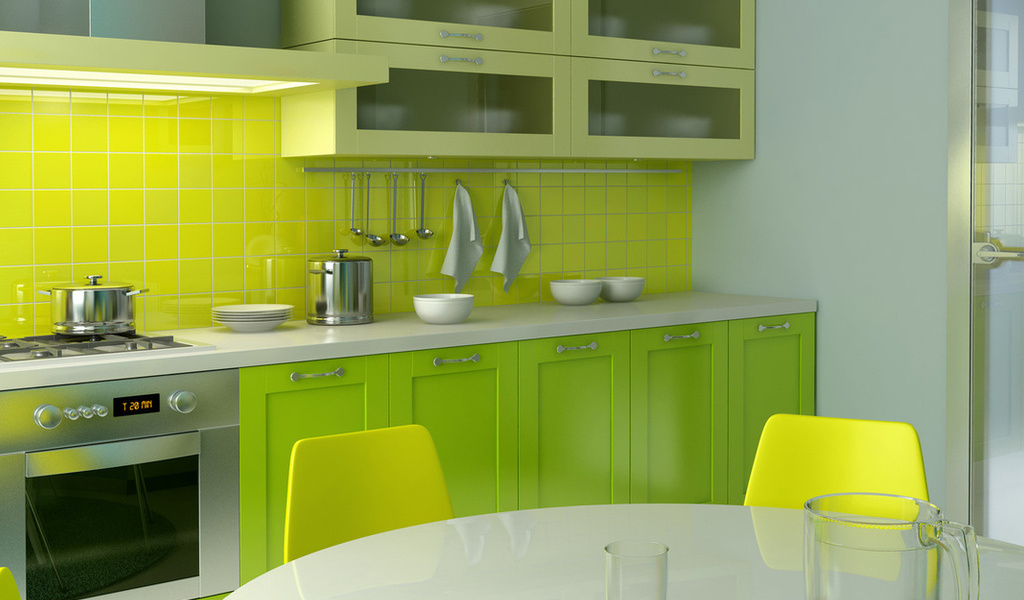
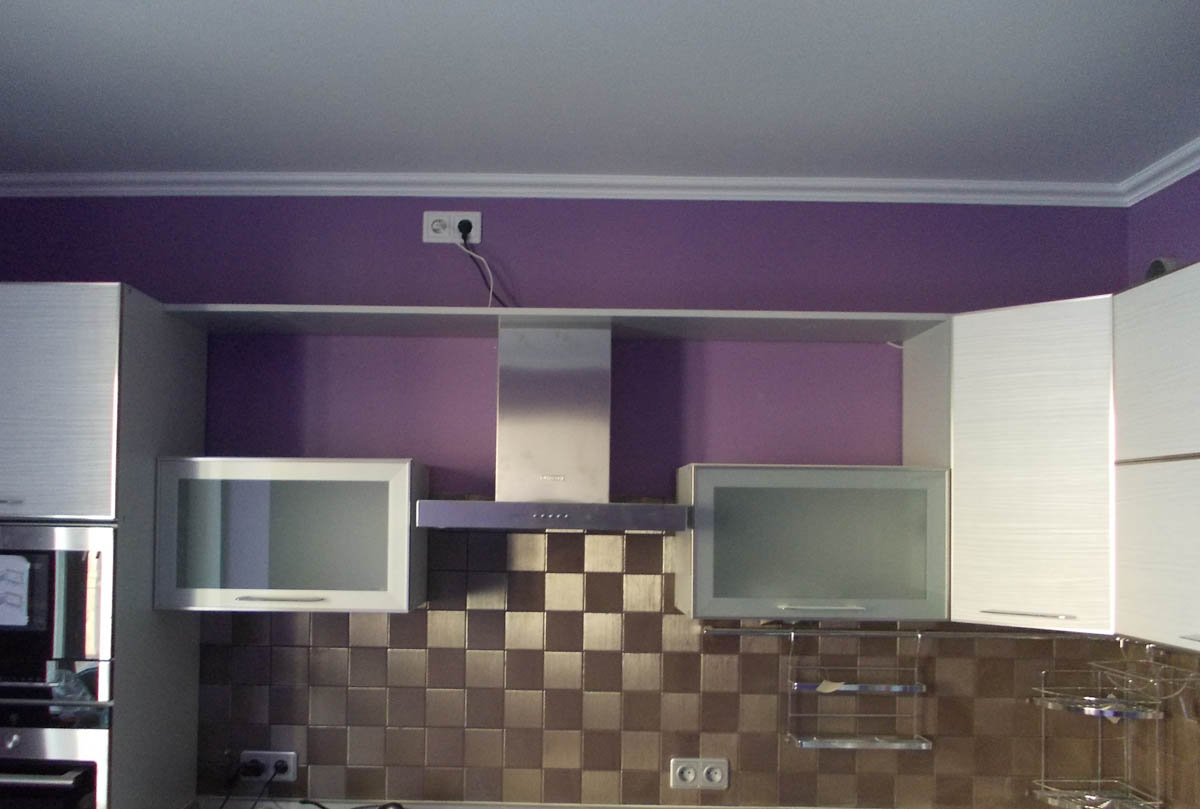
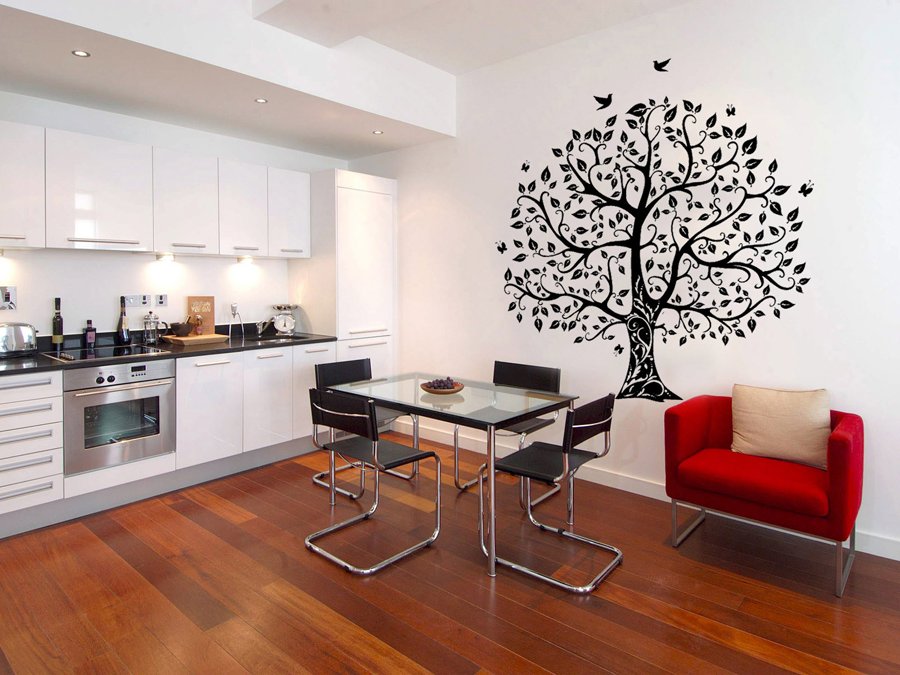
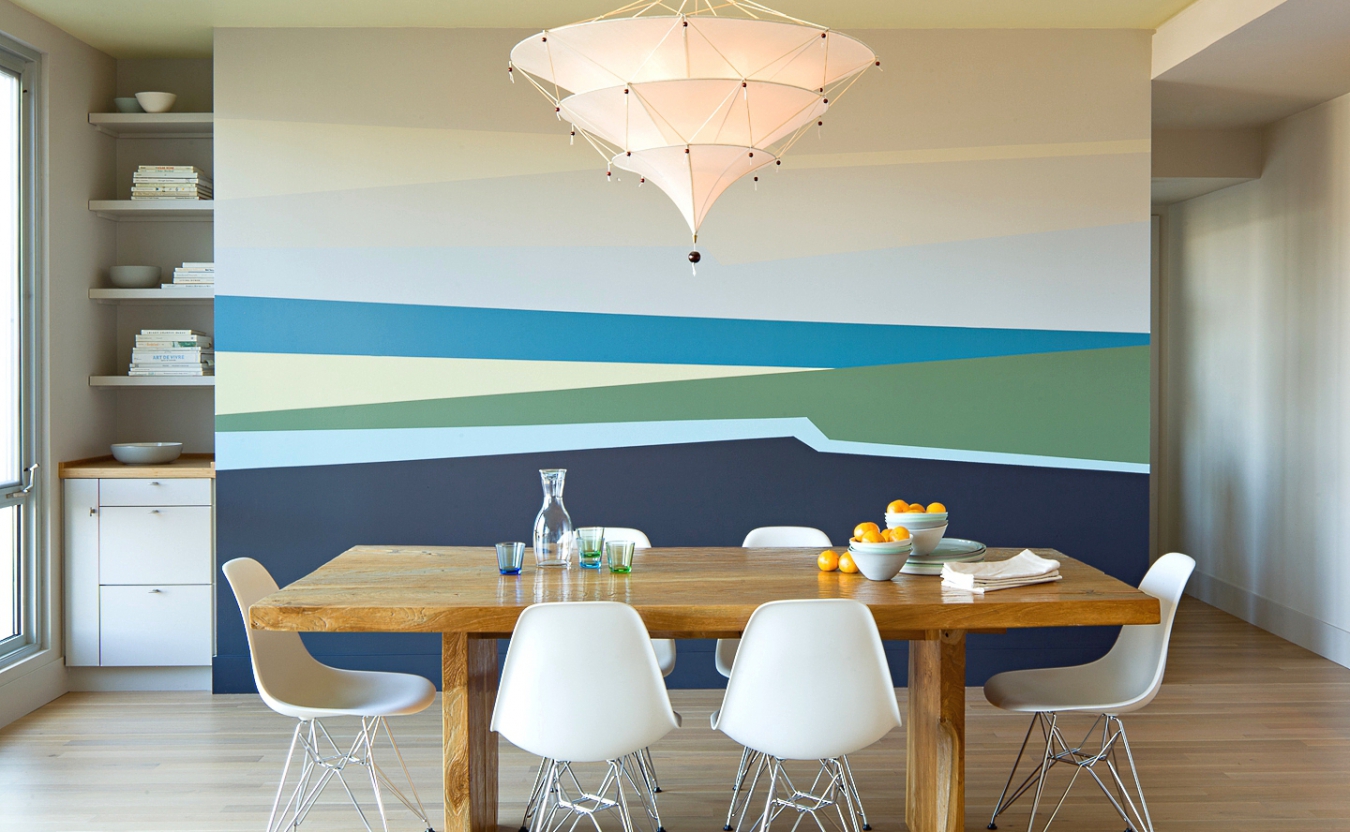
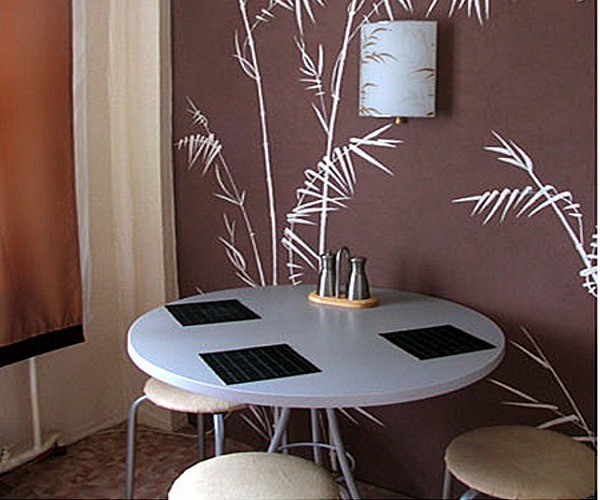
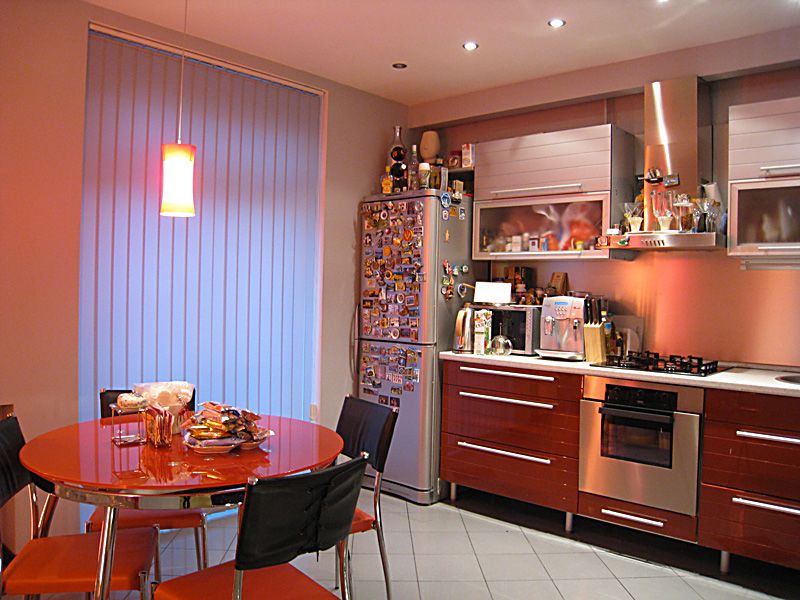
Entrance hall
The walls in the hallway take over all the dust and dirt that you bring from the street. And although they are less affected by steam and heat than in the kitchen, they should be finished with a reliable and durable material. Wallpaper designed for the hallway, must wash easily, and provided that in the room you put the baby carriage, do not get spoiled by accidental hooks.
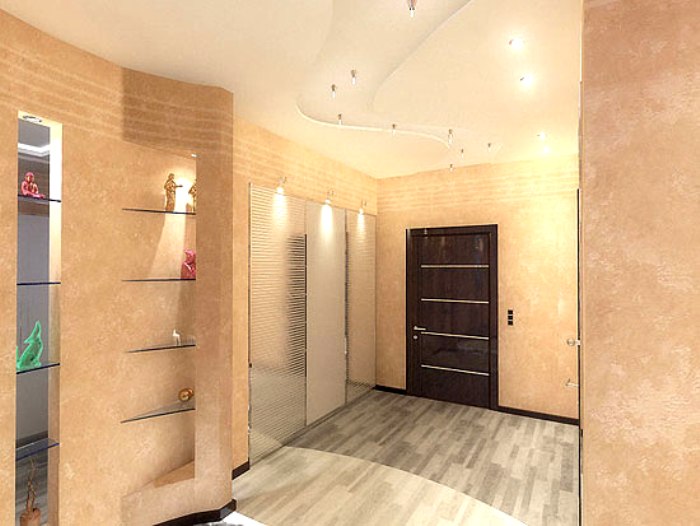
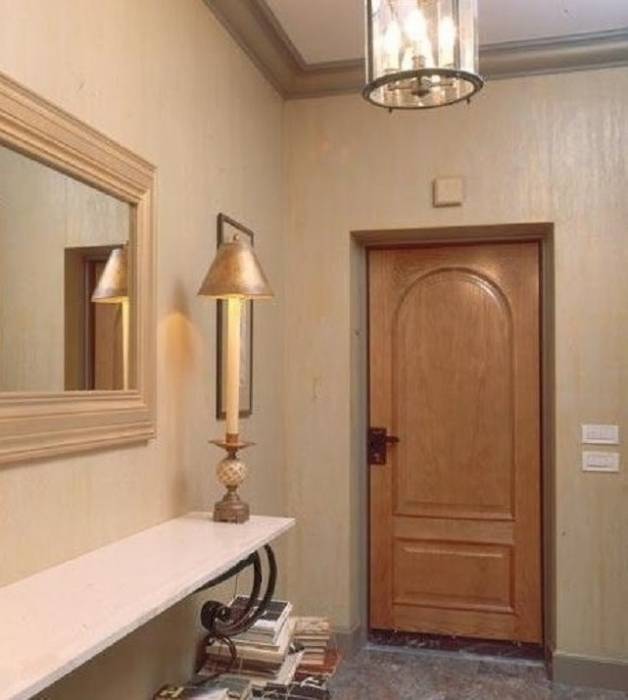
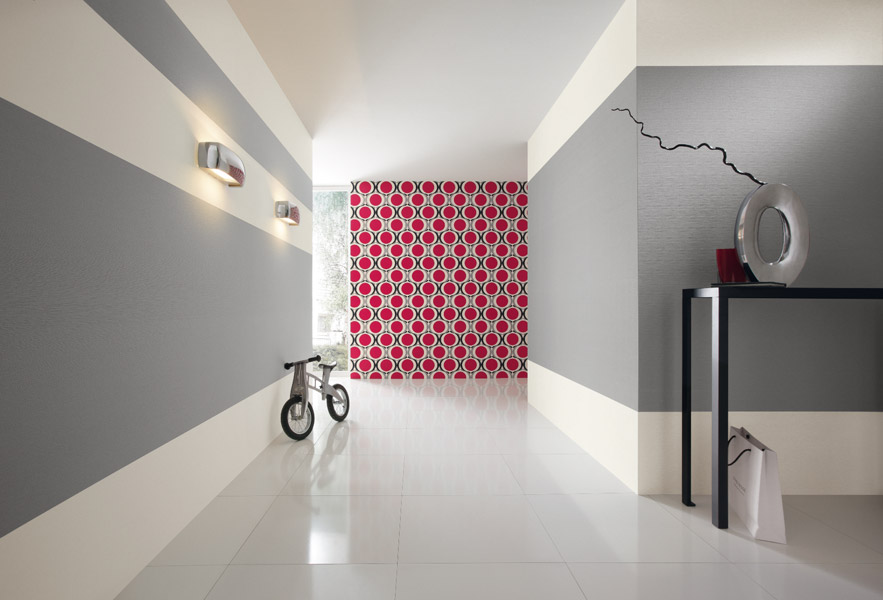
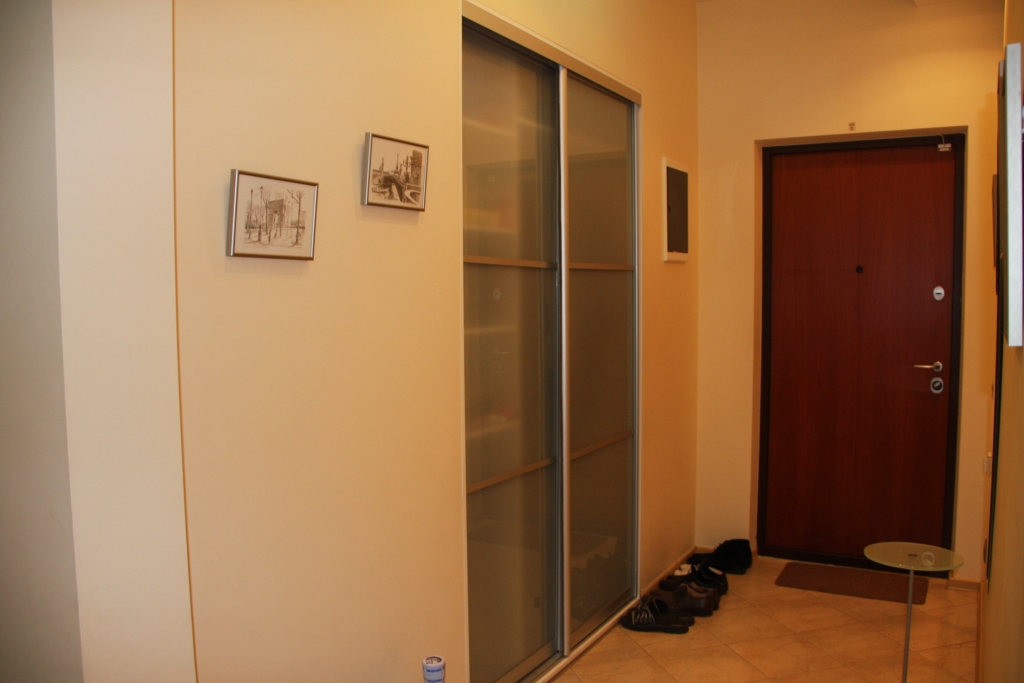
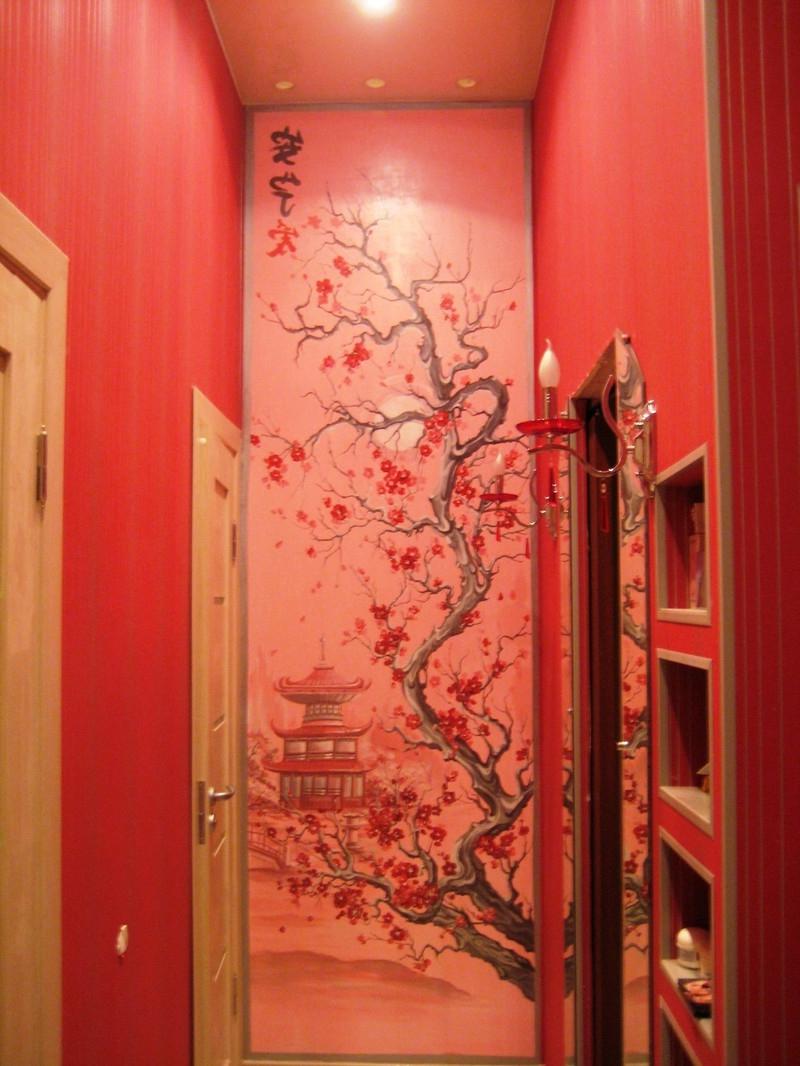
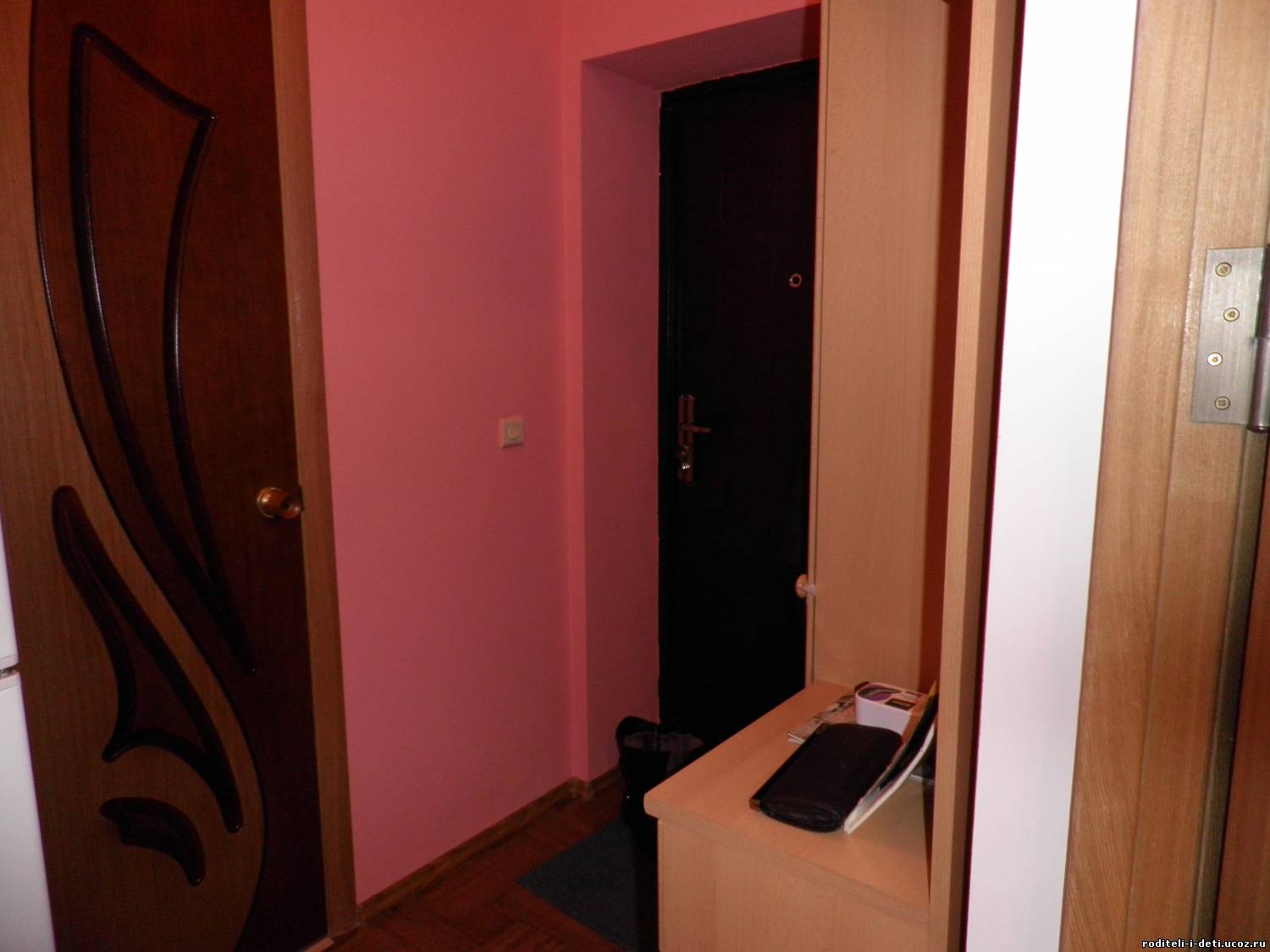
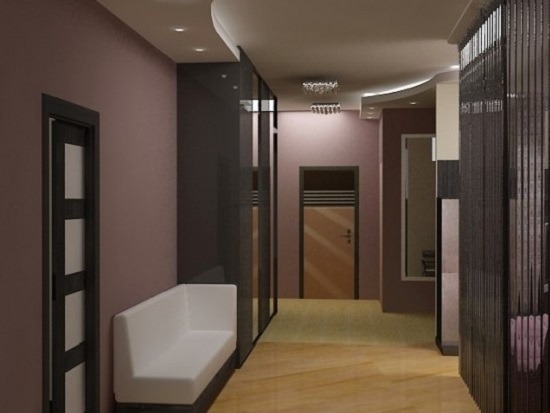
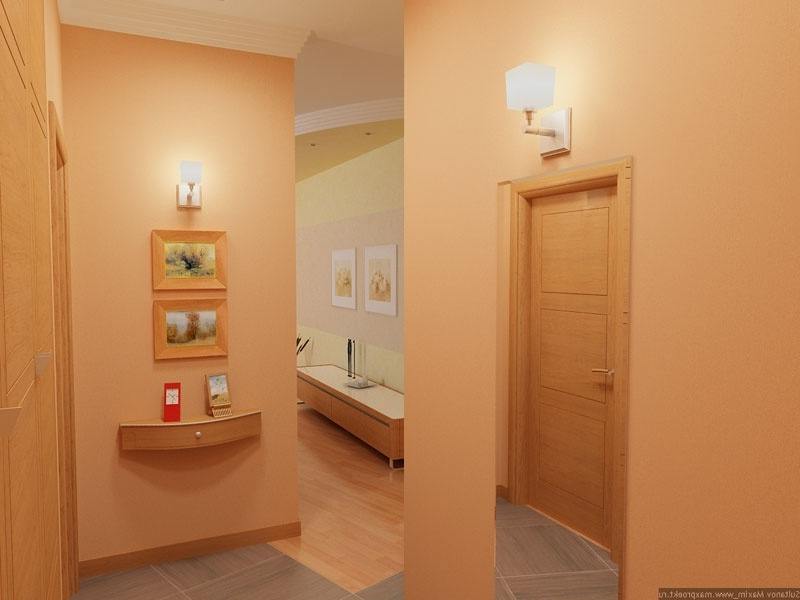
Parade of ideas for interiors with wallpaper
Photos below will inspire everyone who looks at them, to create an unsurpassed interior in any room of their apartment.
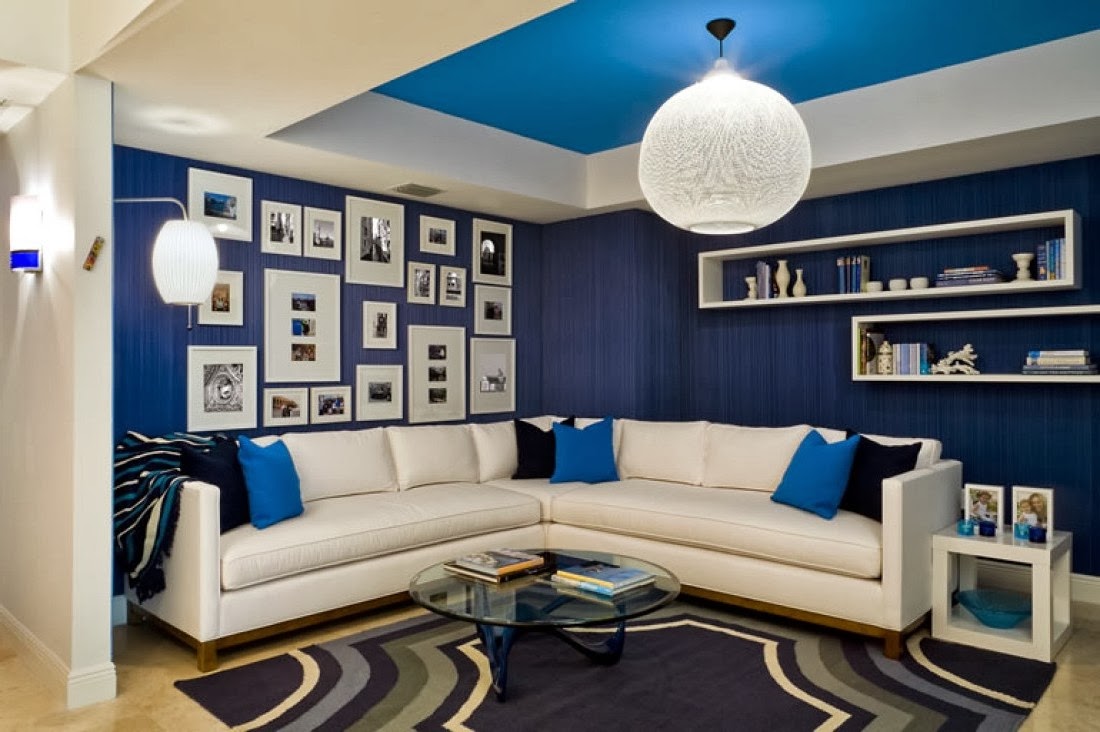
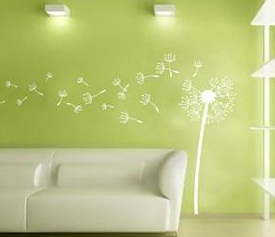
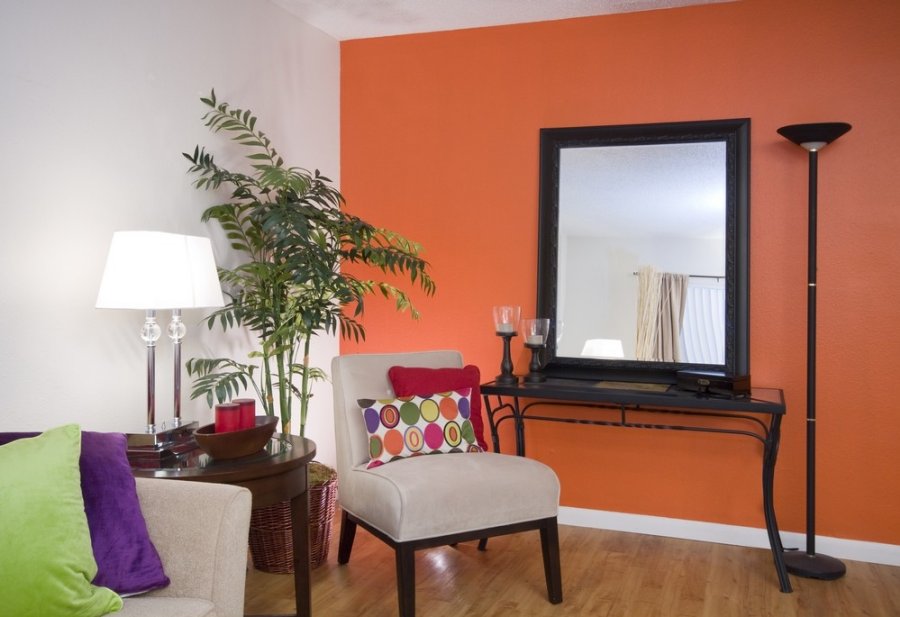
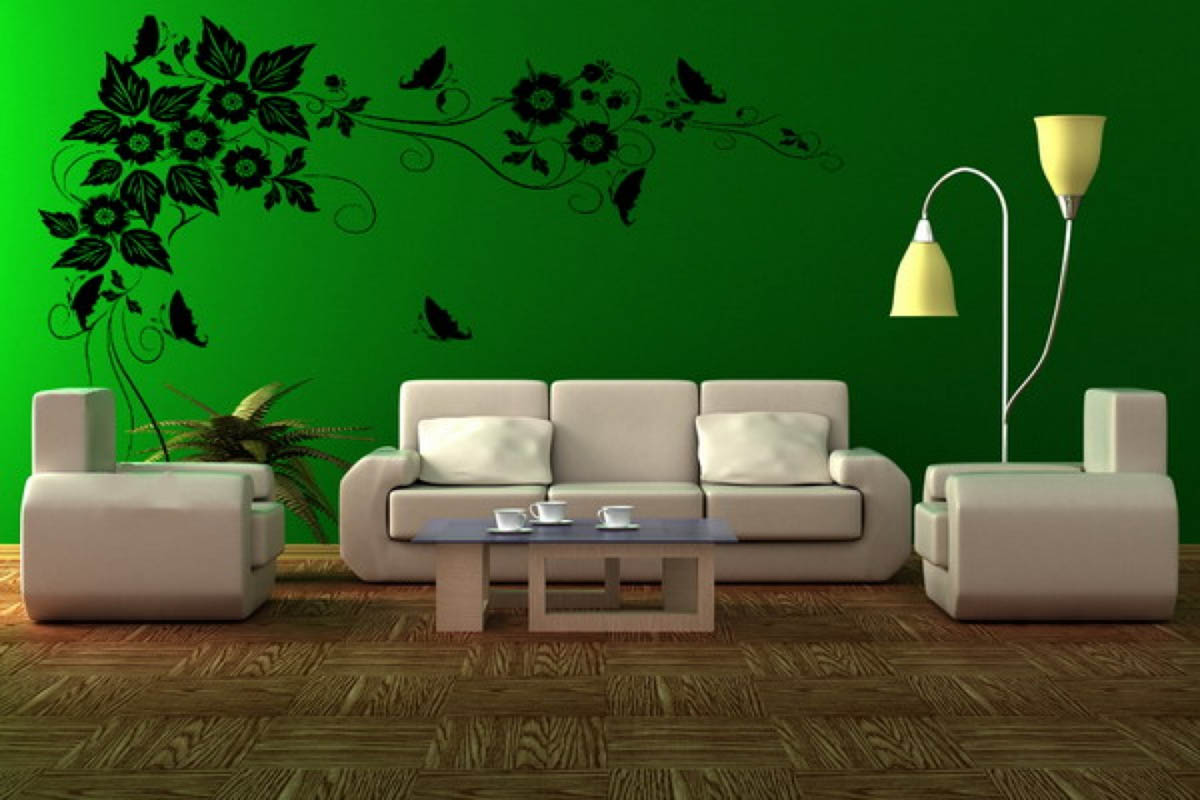
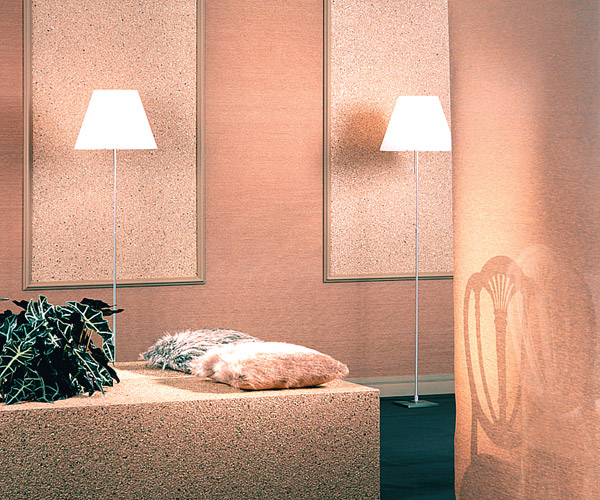
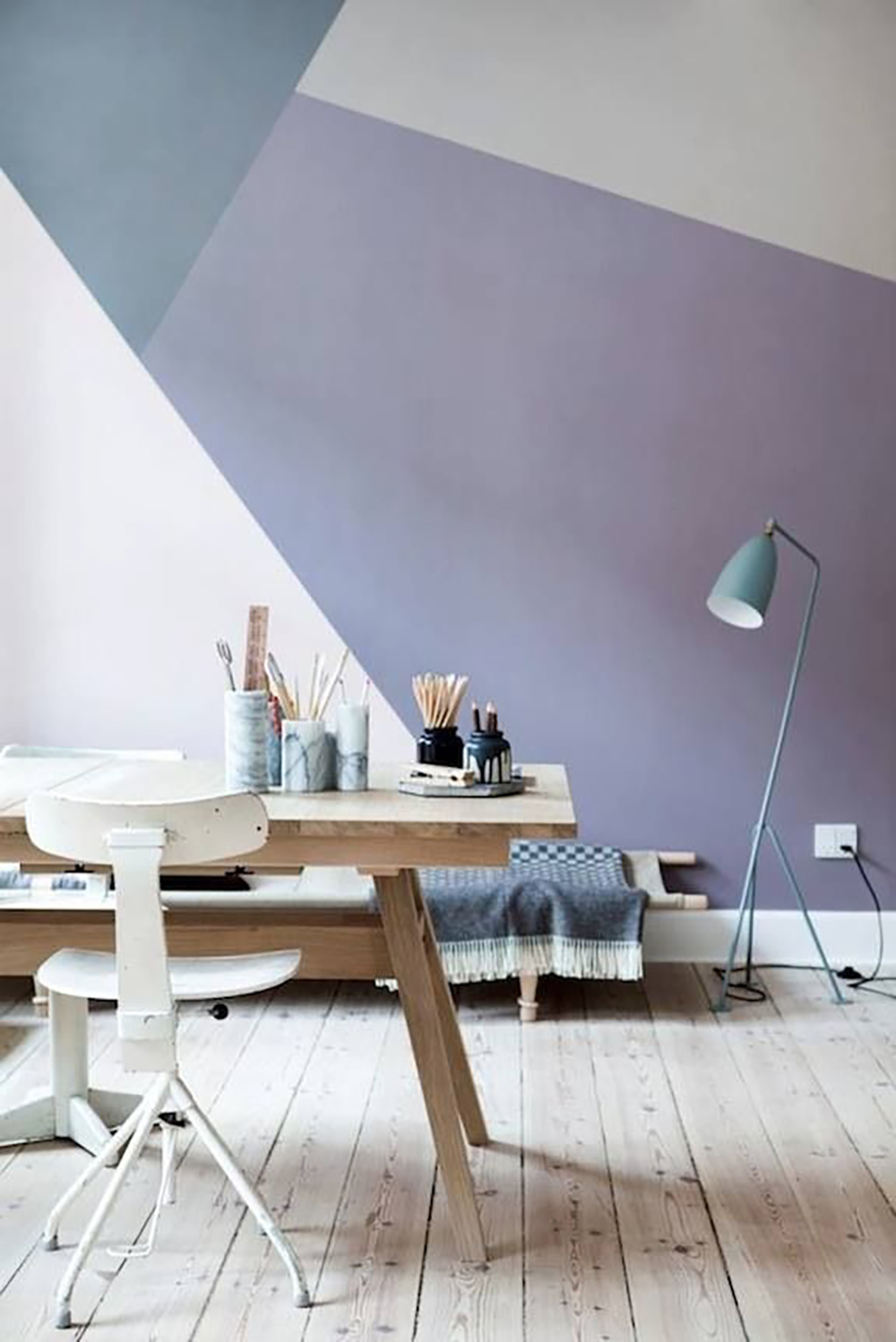
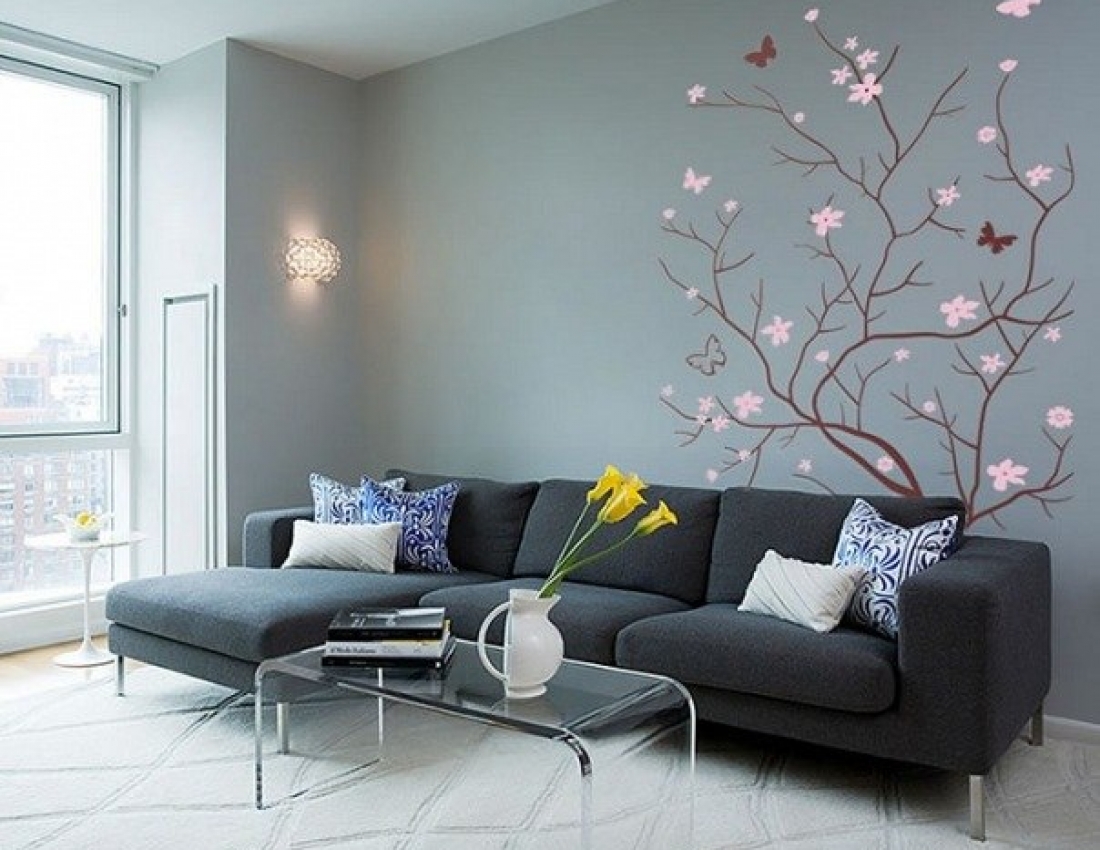
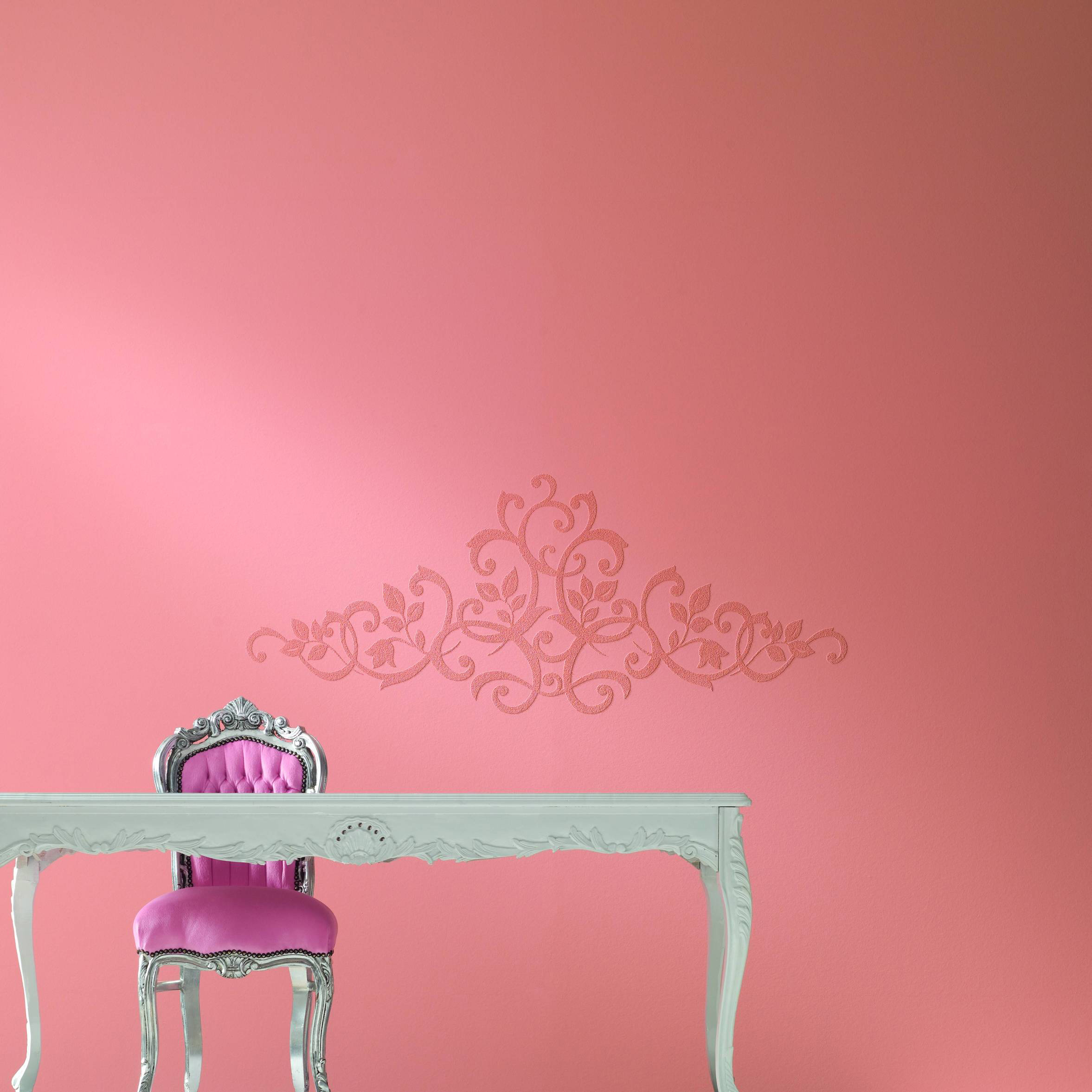
Paint is the most popular decorative coating for walls and ceilings. It is inexpensive and easy to use. And in a symbiosis with textured wallpaper paint allows you to give the room a very spectacular view. And most importantly - it can be done easily and quickly repainting wallpaper in the desired color.
Once decorative effects were the privilege of elite houses. Now, almost every one can decorate his home - the benefit of new technologies and materials allows it. Textured wallpaper plus paint gives an infinite number of options for interior decoration. It remains to choose the one that fits.
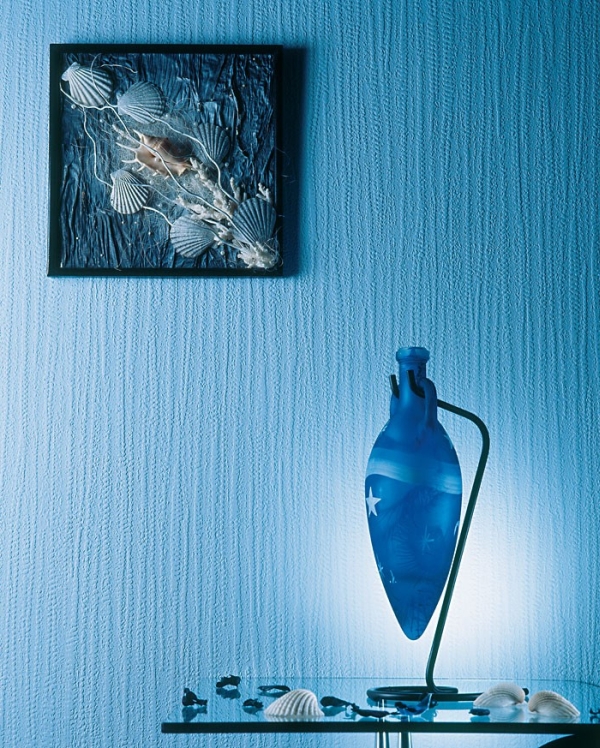
Wallpaper for painting - we create our own color
Think about the compatibility of the background with other interior details. The general design of the room can be solved as -, gray, greenish, and in warm -, orange, beige. Dark walls create an excellent background for bright furniture, but require good lighting. And the walls of beige, light brown, pistachio tones emphasize the beauty and modernity of furniture made of light wood.
|
Wallpaper for painting - we create our own color |
Wallpaper for painting - we create our own color |
Your color, your terrain
It is very easy to convert an apartment. Structural wallpaper for painting, of which today a great many, will make a rich structure of walls, give us new tactile sensations. For different rooms you can choose not only your color, but also your wall texture, individual and unique.
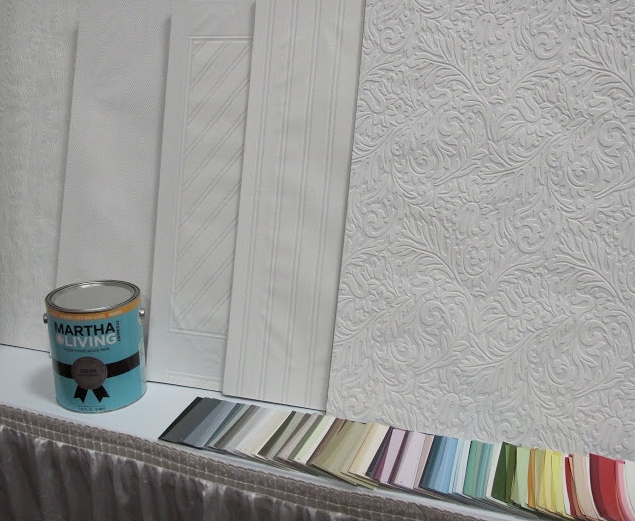
Wallpaper for painting - we create our own color
Here one should think about such a poorly studied phenomenon as the interaction of texture and color. Which color best suits the interlacing type "matting" or "herringbone"? Approaches can be traditional and revolutionary, and it's hard to say which of the directions is better. One thing is clear: everyone can create an interior that warms the soul and improves mood. The old adage "Houses and walls help" today, thanks to new technologies, acquires a literal meaning. Indeed, why not make the native walls pleasant in all respects?
New technologies allow imitating all kinds of fabrics, Venetian plaster, leather, suede, and modern coloring methods make it possible to choose exactly the shade that is most likeable. Special pigments with shine will create an effect of expensive finishing, extraordinarily noble and exquisite.
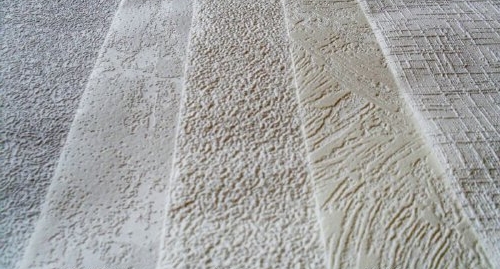
The texture of wallpaper for painting can be any
If we talk about the purely psychological effect of color, a good mood creates a yellow color, it acts soothingly on the nervous system. But too bright shades of yellow, orange, red quickly tire and start to irritate. Blue and green color have a beneficial effect on a person, do not cause fatigue in the eyes. And how great is the range of their shades!
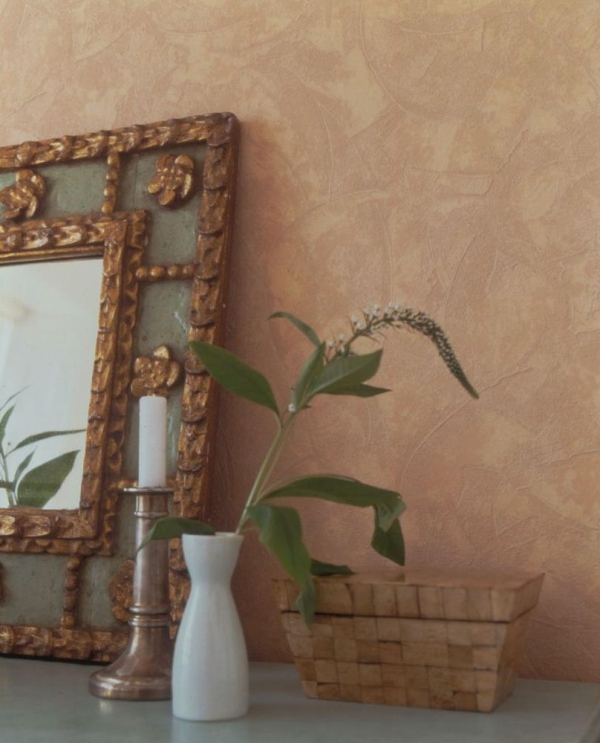 |
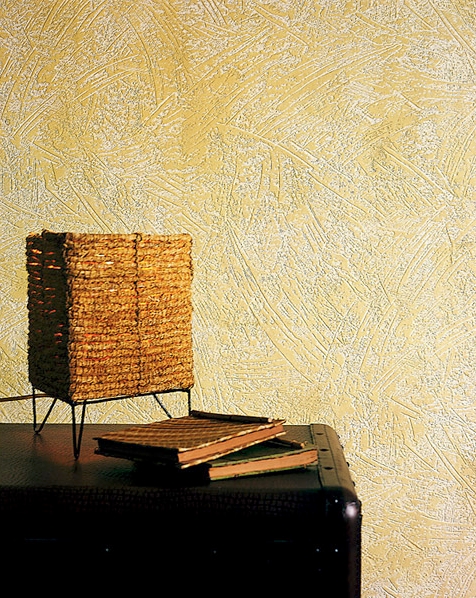 |
Cozy sand, pinkish-beige, pearly-gray and opaline tones fit most of the living quarters. Such colors help to relax and regain strength after a hard working day.
In the initial form, wallpaper for painting, as a rule, white, that is, generally unpainted, there are less often already colored wallpapers. They are mostly pastel colors: tender green, yellow, cream, blue and pink. Color background allows you to get an unusual shade after staining. However, such wallpaper can be used without further processing.
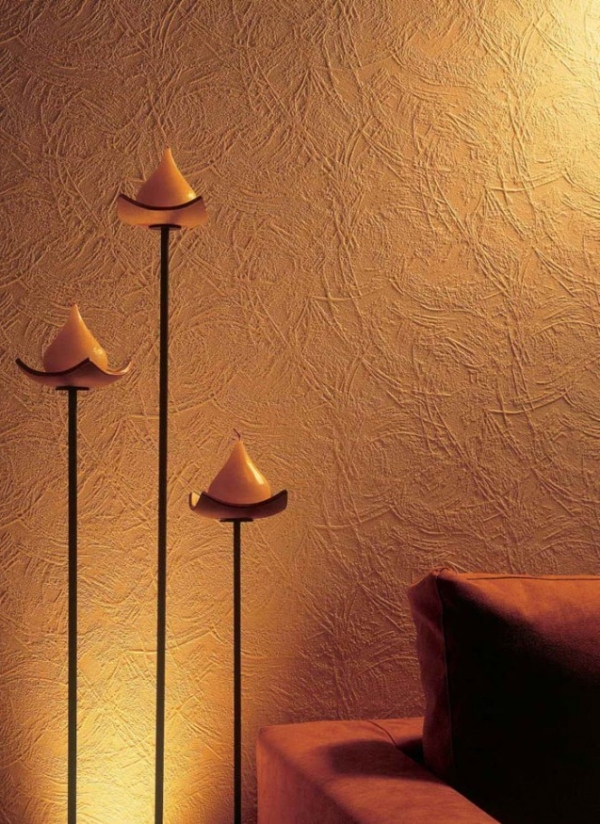 |
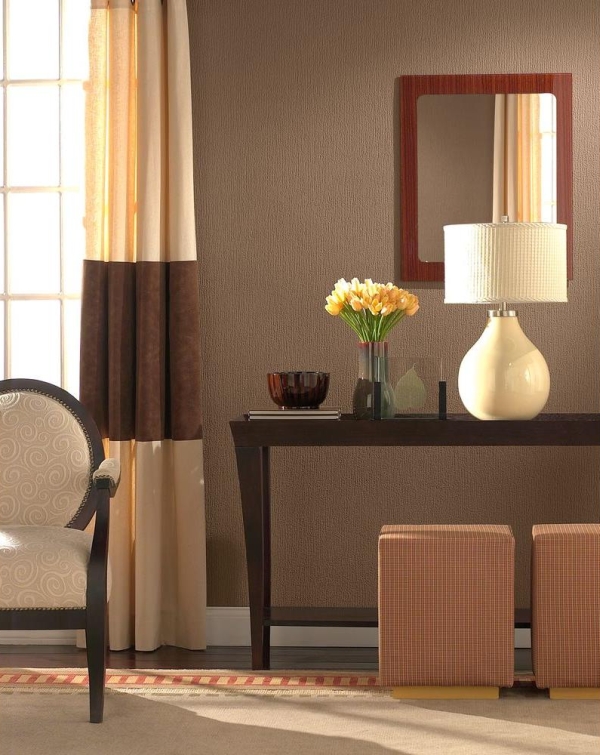 |
Experiment safely: the relative ease and speed of repair allows you not to be afraid of mistakes. New technologies allow you to bring the walls into dependence not only on the time of the year, but also on the mood. The new decor will bring new thoughts and emotions to the house. So do not be surprised if immediately after repairs in life, changes will begin for the better.
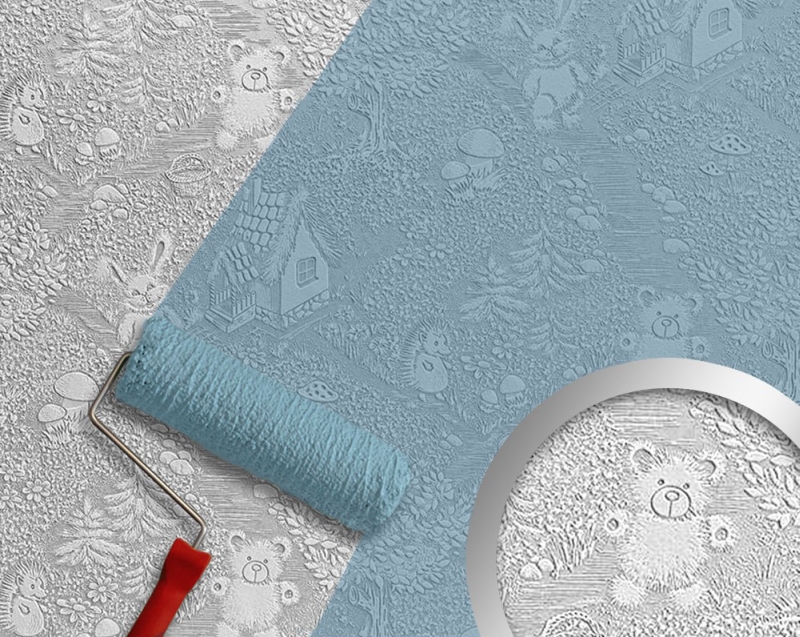 |
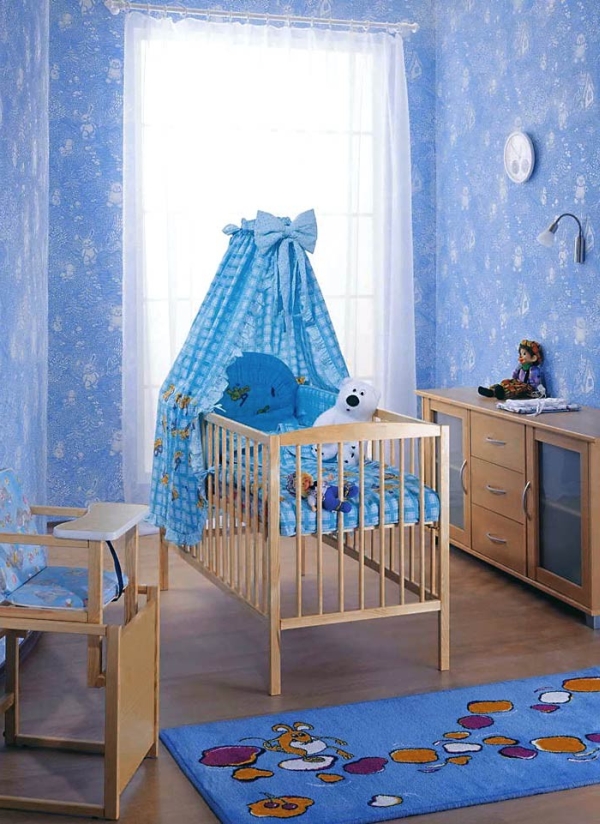 |
Color the wallpaper in your favorite color
The result of the artist's work is determined by the preparation of the canvas. And this fully applies to wall painting. Decorative properties are largely determined by quality. And then there is reason for joy: nothing is easier than gluing non-woven wallpaper. They are easily cut with scissors, do not stretch very much, do not wrinkle when glued. They do not need to be wetted beforehand, but you can glue them directly on the wall covered with glue. This greatly simplifies the process of preparing walls and sticking the wallpaper. When the wallpaper dries, you can proceed to the most important.
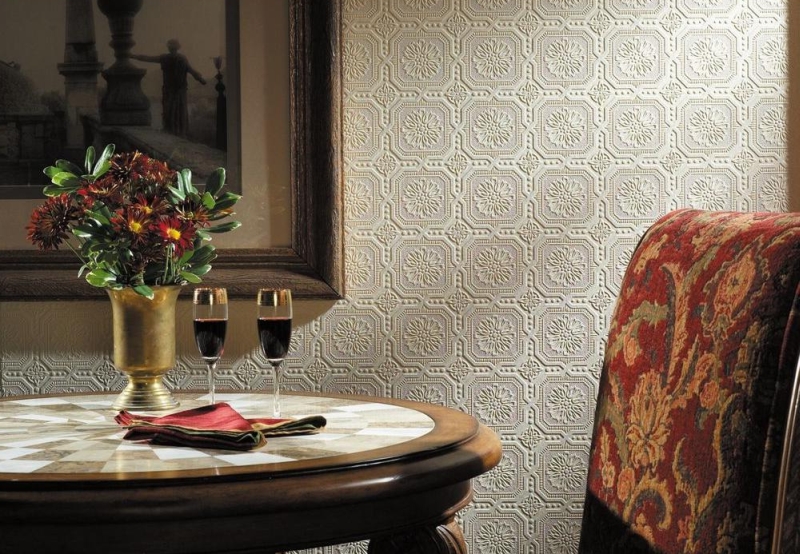 |
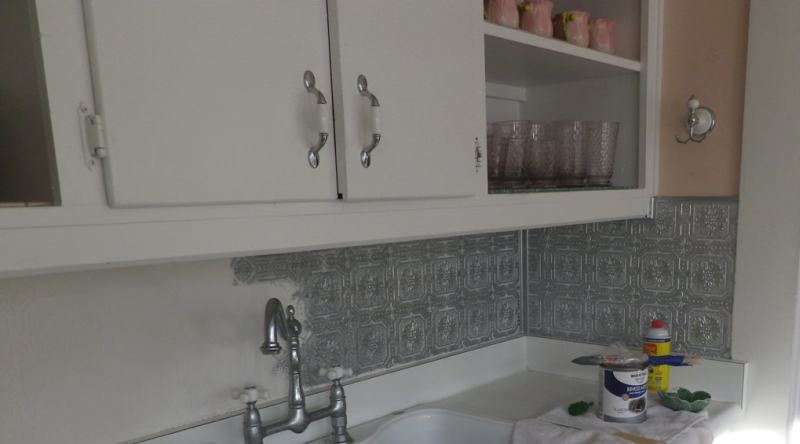 |
Painting wallpaper with water-dispersion paints - the most common and simple form of decorative finishing. Here it is quite possible to depart from traditional solutions and decorate the interior in accordance with its taste. Modern decorative colors allow you to create miracles with your own hands.
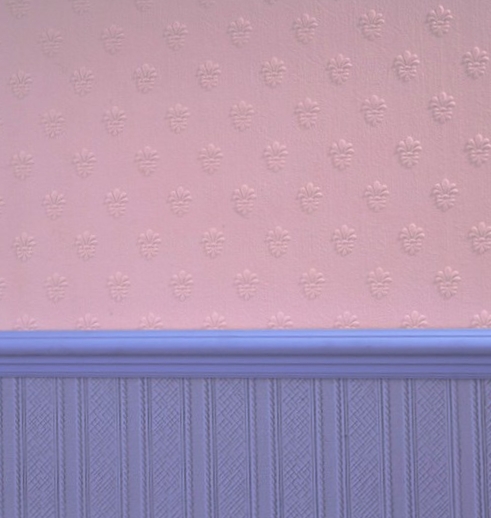
Wallpaper for painting - we create our own color
Now there is a huge variety of water-dispersion paints, varnishes, enamels, which are used for painting the wallpaper. Their decorative possibilities allow you to give complete freedom to your imagination. The basis for the flight of thought is a wide range of materials, as well as an unlimited palette of color solutions, which gives us modern tinting equipment. The whole spectrum of decorative colorful materials, any shades, any level of brilliance!
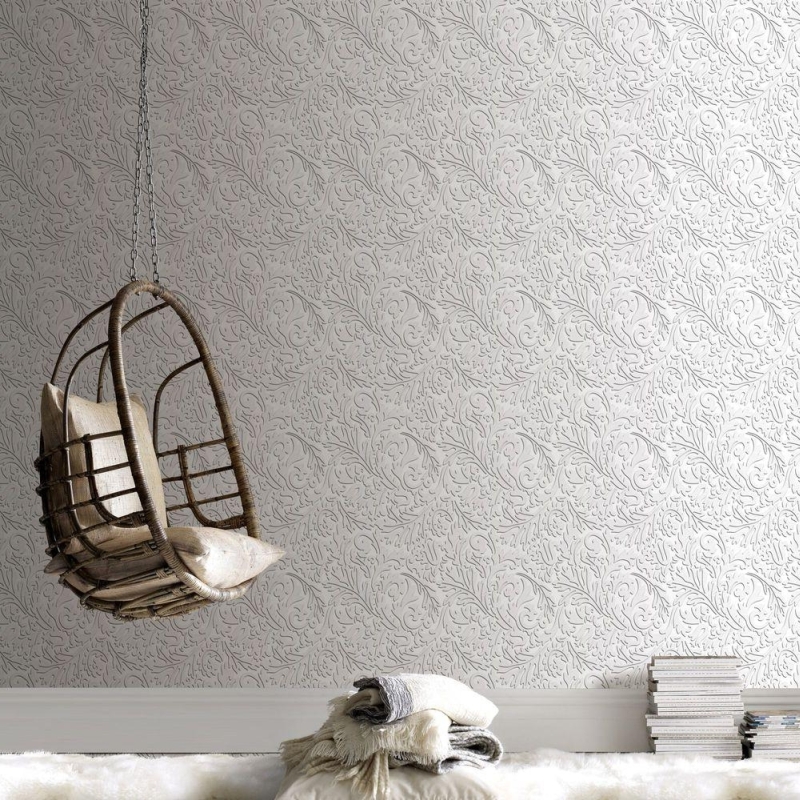 |
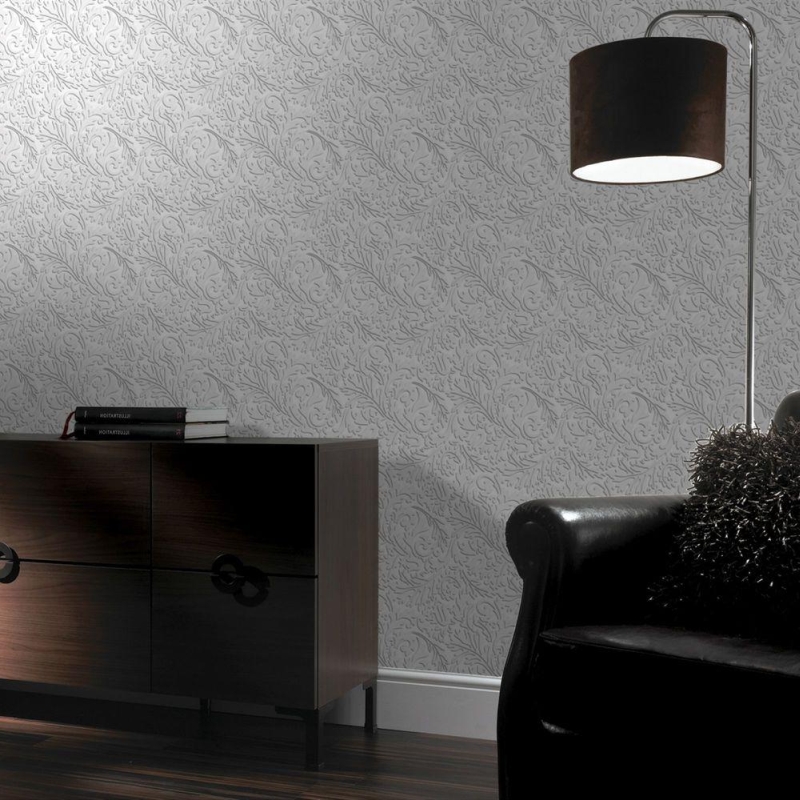 |
In principle, the paint can be applied by any tool intended for this purpose - brush, roller, spray, sponge, paint pad. It should be noted that these tools are of different types and can be applied in many different ways. Using different colors, tools and techniques, you can get a lot of decorative effects. In this article we will consider only the main types of finishes used for painting wallpapers.
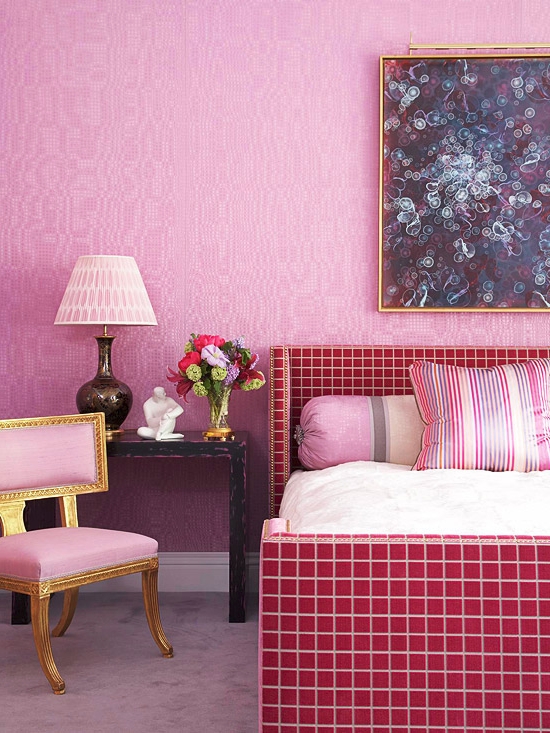 |
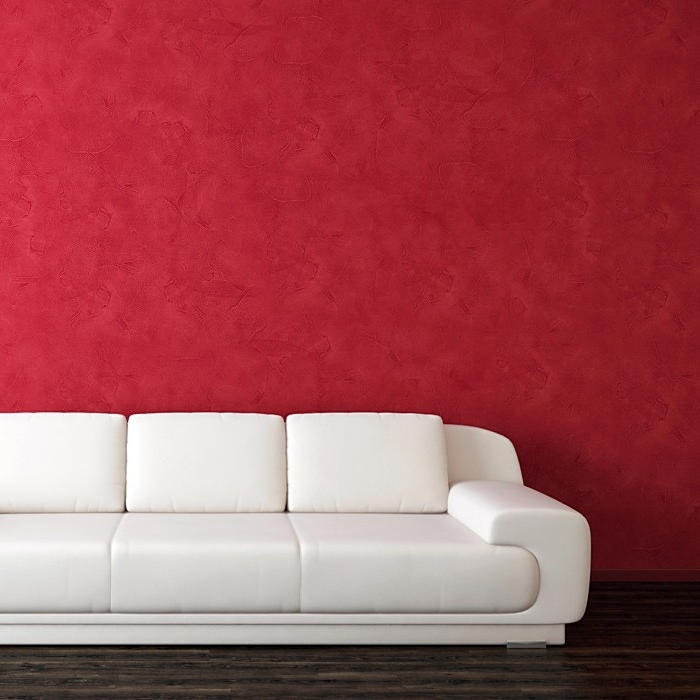 |
Feel the lightness and cheerfulness will help warm colors - pink, crimson, coral. The interior will revive the flowers and bizarre branches.
The homogeneous color of the wallpaper is a simple but popular solution. Perhaps, its success is due to the modern desire for minimalism in the interior? In any case, this approach allows you to focus on individual objects of the interior. The wall in this case serves as a background, and the shade of the cover allows you to lighten or darken the room, create a certain setting, work or soothing.
|
|
|
In comparison with the homogeneous coloration of smooth walls, there are many advantages. First, there is no need to excessively "lick" the walls before painting. Secondly, the painted structural wallpaper looks richer than the even wall. Thirdly, you can choose coatings with varying degrees of brilliance, from matte to semigloss. It is necessary to know that coatings with high gloss have less pollutant and better resistance, but the requirements for surface preparation are even higher.
|
|
|
Halftone technique using several colors of paint. With the help of simple decorating techniques, it is possible to significantly transform the interior appearance of the room. However, you need fantasy, patience and taste. The technology consists in applying paints of a different shade with a brush, a tampon or a natural sponge. Since it uses colors of different colors, it is very important to choose the right shades.
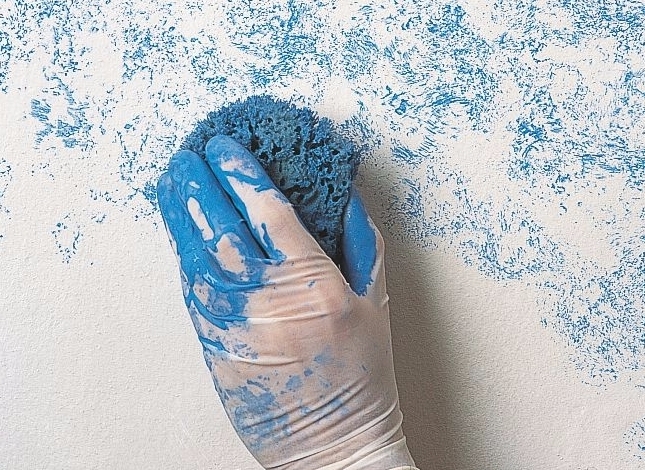
Halftone technique of applying paint of different shades
With this, color palettes created by designers of paint companies can help. An essential advantage of this technique is the ability to vary color solutions. When there are any spots on the wall, the problem is solved with minimal financial and time costs - fragmentary cosmetic repairs will take a minimum of time.
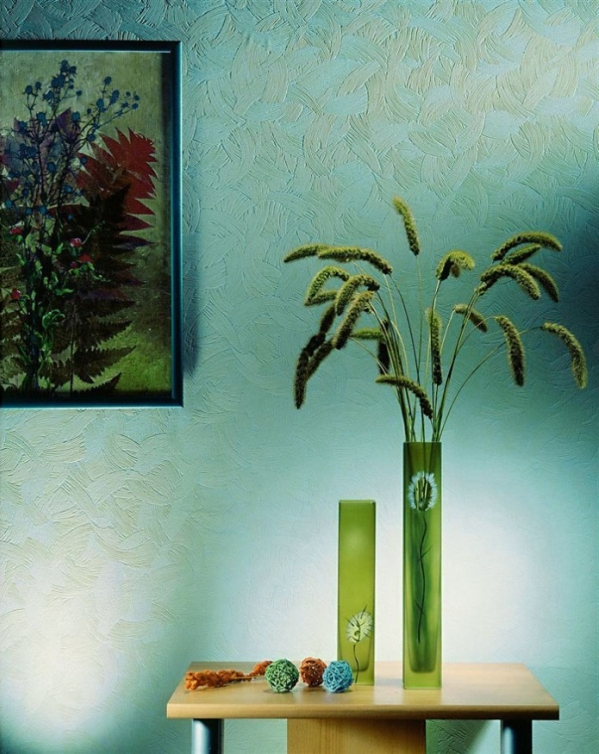 |
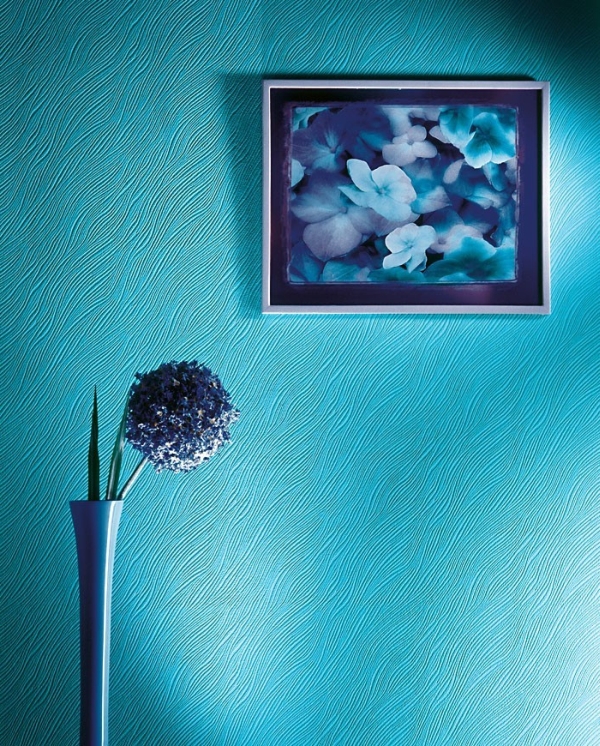 |
Combining textures and colors
Very unusual and spectacular interior can be obtained, taking full advantage of the opportunities provided by structural wallpaper. For example, a cloth with a width of 106 cm with a large texture can be glued horizontally to form a distinctive relief panel. The upper part of the wall is covered with wallpaper with less pronounced relief. Color these two areas can be contrasted or in different tones of the same color. An interesting option is obtained in the case when a horizontal panel on one wall is combined with a contrasting vertical panel on the other. This is especially harmonious when the color and texture are supported by a certain architectural element - a niche or a column.
Principle of abrasion
An interesting result is also obtained when painting the wallpaper with a very diluted paint. In this case, the paint composition is applied to the front side of the wallpaper. After that, the surface is wiped with a soft cloth that partially or completely (if desired) relieves the relief from the paint, leaving the background intact.
The principle of translucency
A bright spectacle can be obtained using semi-transparent fleece wallpaper. Painting them on the back of the paint with a rich tone, we get a nice background in the pastel colors on the front side. If after sticking such wallpaper go through the bumps of their texture with a roller, slightly moistened in white paint, the spectacle will turn out to be completely enchanting. Associations that cause such walls can be very different: apple blossoms, a storm in the desert, green noise ...
Sgraffito
Another method of painting imitates the decoration of walls with colored cements in the "sgraffito" technique (scratched). The canvas is painted on the reverse side. The paint composition impregnates the fleece through, and the vinyl relief remains unpainted. After the paint has dried, the wallpaper is pasted onto the wall.
Camouflage
The cut canvases can be painted on the underside not completely, but irregularly shaped patches of different colors (for example, light brown, dark green, purplish red). If then, after the sticker, on the front side, walk golden-yellow paint, you will get a unique color combination of the forest. It is important to remember that the color spots should not touch the edges of the panels, in order to avoid the appearance of straight lines at the joints of the panels.
Blurring method
The method of washing is that at first the wallpaper is completely painted with a background paint and allowed to dry well. Then, on the dried surface, paint is applied to the pattern and decorating is performed on the still wet paint. As a rule, fresh paint is "washed off" from the previously painted surface with a brush, sponge, cloth or polyethylene bag. In the surface paint must be added special scaling additives, which slows down its drying. The spreading compound should not be applied in a thick layer, therefore it has a liquid consistency.
The sizing gives the time necessary for decorative painting. Nevertheless, it is necessary to work rather quickly. If the surface to be painted is large, it is recommended that you work with an assistant who slowly applies the paint to the substrate with the roller, while the master processes the painted surface behind it, creating the desired pattern. Do not forget to periodically flush the instrument!
Azure
On the still fresh first layer, lasures of a different color are applied by strips. This stage of work must be done very quickly. With a wet sponge, fresh azure is shaded on the surface of the non-woven wallpaper. Thus, the plot behind the plot, paint all the walls of the room. When applied over matt paint coatings, the effect of iridescent colors is created.
There are water-soluble azures that give the wall a two-color pearl effect. Since the azure is translucent, the color of the background paint greatly affects the final result. The impression strongly depends also on the lighting and the angle, under which they look at the surface.
Tip: Do not use cheap paint. Decoration is a rather laborious process, and if the paint quickly loses its appearance, then all the work will go wrong.
Paints for wallpaper
As already mentioned, any colors of water-dispersion paints are suitable for painting wallpaper.
Water-emulsion paints do not contain solvents, are practically odorless, easily applied by brush, roller and spray, have excellent adhesion to almost all building materials and have high performance characteristics. Manufacturers offer high-quality water-dispersion paints for interior work. Acrylic water-dispersion paints, made on the basis of acrylic dispersions and based on acrylic copolymers, are significantly better than non-acrylic analogs in their consumer qualities. Acrylic binders have a high moisture resistance and do not fade. And most importantly - they do not form continuous films. These are porous, vapor-permeable coatings. Therefore, in a room painted with acrylic water-dispersion paints it is easy to breathe. And finally, they almost do not smell and dry quickly.
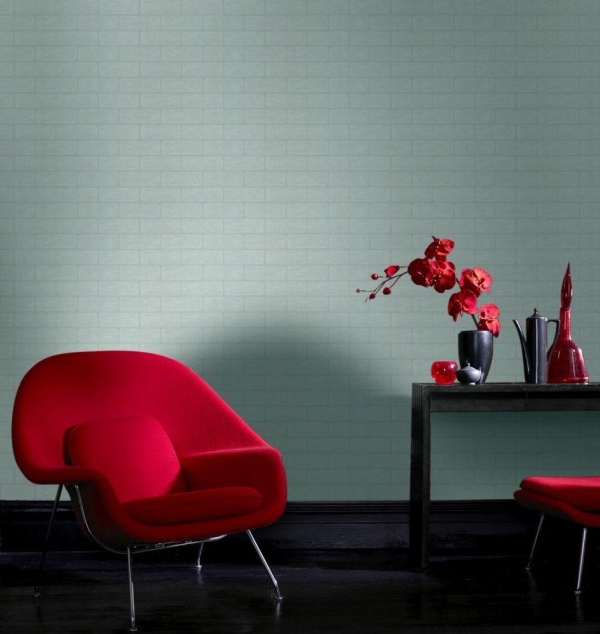 |
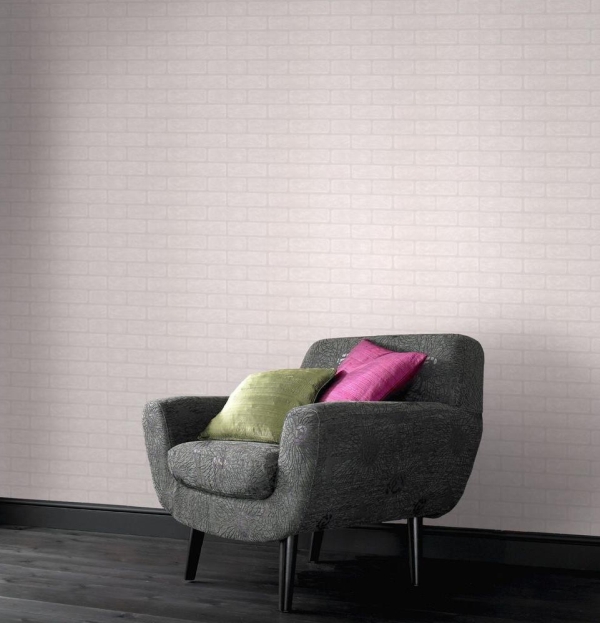 |
Stained glass mosaic can be latex, acrylic dispersion silicate paints; acrylic lacquers; varnishes from alkyd resin: gloss; polyurethane lacquers. Paints for glass mural are matte glossy. Glossy colors better emphasize the texture of the wallpaper.
Wallpaper for painting walls is made from many materials, their dignity depends on the properties of the ingredients, but there are positive sides that are the same for all models:
- The canvas is able to even out small wall irregularities (for example, cracks).
- Painting walls using heavy wallpaper is cheaper than painting putty walls due to the lack of surface refinement.
- The canvas is treated with special substances, so the moisture of the product is not terrible. When gluing, the sheets do not deform and do not shrink.
- The material is steam and air-permeable, which guarantees that there is no mold behind the sheets.
- There are no elements harmful to humans in the composition of the material.
- Heavy wallpapers have soundproofing properties.
- Many models are well tolerated by sunlight.
- Damaged canvas is easily replaced in a dry state, it is enough to tear off any corner and put a load on it. Pre-soaking before dismantling the sheets is not required.
- Minor damage can be masked with paint or putty.
- The wallpaper can be repainted many times, the main thing is that the texture remains visible.
- At the construction market, there are models of various colors and textures, the most demanding user will find the goods to taste.
- The paint under the wallpaper is selected for the color of furniture or basic elements of the interior.
- Walls with painted wallpaper can withstand up to 2,000 wet cleanings.
The main varieties of wallpaper for painting
You can apply paint only on paper, non-woven wallpaper or fiberglass wallpaper, with special manufacturer marks. The fabric after manufacture is rolled up into rolls, its sizes usually differ from standard models. The stores have sheets of 17x0.53 m, 25x1.06 m, 33.5x0.53, 125x0.75 m. Large dimensions reduce the amount of waste, and the number of joints on the wall also decreases. If you do not know how to choose wallpaper for painting on walls, familiarize yourself with the features of the most common types of coatings.
Paper wallpapers
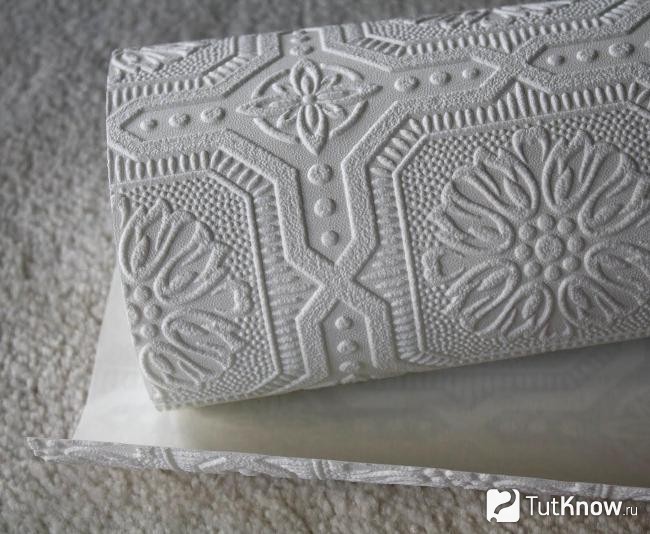
Paper cloths are considered cheap samples. They consist of two layers of paper and filler from sawdust in between, so they are thick and dense. Thanks to the middle layer, the sheets have a beautiful relief surface. Paper wallpaper is produced with pictures on the front side or without them. Images are created by embossing on special equipment. Usually paper wallpapers are white, there are fewer patterns of light pastel shades.
Wallpaper without drawings can be quickly pasted onto the wall. Partitions after finishing become visually seamless and homogeneous. The wallpaper is impregnated with a special liquid that does not allow steam and water to pass through the sheets. Users should be aware that the paper wallpaper is fragile, with time they may sag or stretch. Color the coating 5-7 times.
Fluffy wallpaper
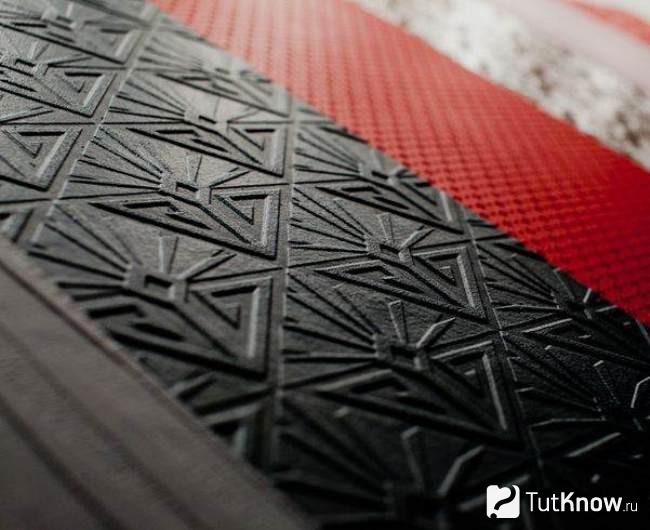
Non-woven wallpaper are the most common of all kinds of coatings for painting. The material consists of a non-woven base and an outer vinyl cover. Flizelin is a non-woven material made of cellulose and textile fibers with a polymeric binder. In the production process, the material is heat treated, the front side becomes embossed, and the opposite side remains smooth.
Vinyl - is fragile enough, and without protection very quickly crumbles, therefore sheets after staining necessarily paint. Another option is to buy already painted products. The wallpaper is available in white or in color. Painted wallpaper can be repainted over time in a darker shade.
The material withstands a significant mechanical load, it is difficult to crumple and break. Often these walls are covered with walls in new buildings that can shrink and deform - the wallpaper can hold cracks. They are more capable than paper ones of concealing wall defects.
The disadvantage of non-woven wallpaper is the fragility of the face layer. It is recommended not to put furniture, which often moves, close to the walls.
Some tips for choosing non-woven wallpaper: do not buy thin samples, when they are pasted, they can stretch, which interferes with the work; The inexpressive texture after a few painting will not be visible on the wall.
Wall-papers
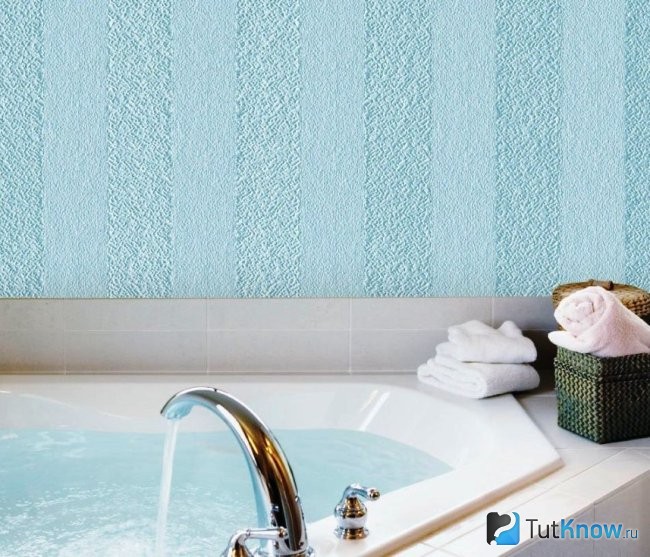
The material is made of a glass filament, which is melted from dolomite, lime, quartz sand and soda. Steklooboi stand out special strength, do not burn, otherwise have properties similar to other types of wallpaper for paint. The coating has a high wear resistance, the walls can be washed even with a brush. It is recommended to use in offices, hotels and other public places with a lot of people where walls are often washed.
The width of the panel is larger than that of other similar materials, which reduces the number of joints on the walls. The front side of the canvas has a specific relief surface in the form of rattles, cobwebs, rhombuses. Wallpaper can be glued no more than 10-12 times, otherwise the paint will close the pattern of the cloth.
Choice of paint for wall decoration wallpaper
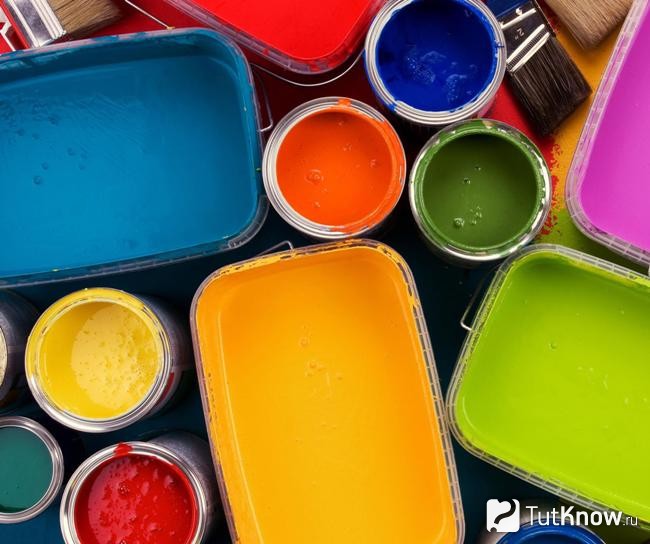
The paint for wallpaper is chosen depending on the functional purpose of the room, the type of wallpaper and taking into account the wishes of the person. The paint can be purchased in the original packaging or ordered from the seller of any volume with a tint to your discretion. On a special machine the ingredients are mixed, and the color you like is obtained.
Each type of wallpaper is covered with its paint. Flizelinovye and paper wallpaper paint with water-based paint, fiberglass - latex or acrylic. At the first painting, the surface is covered with two layers, with an interval of at least one hour. After a few years, only one coat is applied.
Water-soluble means for painting wallpaper on walls are cheaper than other coloring agents and allow to save significant funds. However, such solutions easily erase from the surface and are afraid of moisture.
The most popular wallpaper paint is acrylic. It is made only matte, but the number of shades is huge. Acrylic paint is not afraid of water, it has a high resistance to abrasion, so you can use it in any room.
Latex paint is characterized by high performance characteristics, which ensures high quality coating. This is the only paint that creates a glossy finish. The degree of gloss is indicated on the box with the solution.
When calculating the number of cans of paint, we suggest to focus on the following values: 1 liter of paint cover 10-12 m 2 of non-absorbent wallpaper and 7-8 m 2 of absorbent.
Correctly chosen color and texture of the paint favorably influences the person and forms a comfortable atmosphere in the room. When choosing a paint, use our tips:
- Matte paints with a rough texture are used in large rooms and halls.
- Semi-dry colors give a faint gleam, they look good in bedrooms and rooms with a small number of people.
- Semigloss paints paint the walls in children's rooms, kitchens, bathrooms. They give a good flare and wash quickly. To obtain a high-quality surface, the walls must be carefully leveled.
- Glossy inks are used in dark rooms. They have excessive reflective properties, so in bright rooms glare will cut eyes.
- Satin paint covers the walls in the kitchen and bathroom, it is distinguished by its durability.
- Beige-red scale is recommended for quiet people, cold tones are preferable for people with a mobile psyche.
- White color visually increases the size of the room, erases the corners, but the decoration may seem boring.
- Blue gives the room a strict appearance, also visually expands the space.
- Light green color calms, lowers arterial pressure.
- The dark green color of the canvas and the light furniture creates a cosiness in the living room.
- Yellow color positively affects the well-being, creates a joyful atmosphere.
- It is recommended to paint the walls in several colors, then the interior becomes stylish.
- Cover small rooms with light tones (white, lemon), they expand the boundaries of the room.
- Vertical stripes on the sheets increase the height of the room.
- Cloths with large pictures reduce the area of the room, with small - increase.
Types of adhesive for wallpaper under the paint
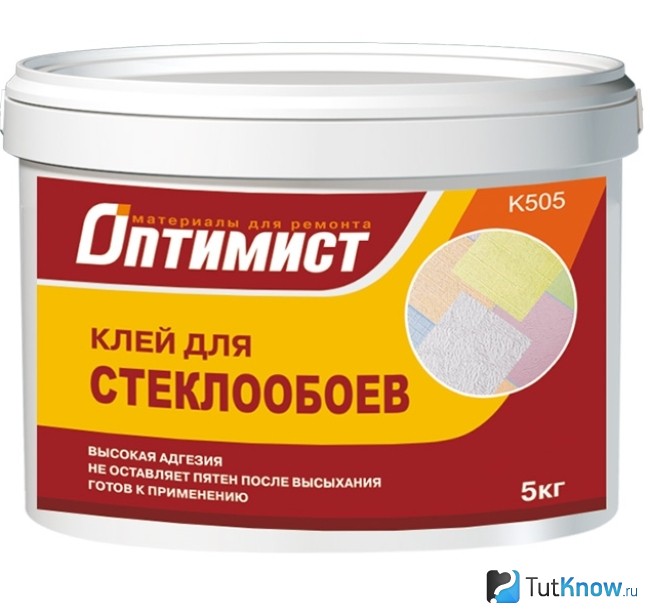
In the market of building materials there is a huge selection of glue solutions for wallpaper. At first glance, they can get confused, but not everything is so complicated. In most cases, manufacturers produce glue for a single type of coating.
Features of the choice of glue:
- Adhesive composition should ensure a good adhesion of heavy wallpaper with walls, so the usual for vinyl sheets will not work.
- Paper wallpaper is fixed only with special vinyl adhesive. It dries a long time and allows you to re-paste sheets with a recent fixation.
- Steklooboi put on the glue for fiberglass. It is designed for heavy sheets and provides a strong fixation to the wall even in damp areas.
- For glass mural with a color pigment often get glue Oscar. Glues Pufar, Kleo Ultra - frost-resistant, they can be used anywhere.
- Some samples, for example, Virtual Aqua Plus, are sold with an adhesive layer, before application, the back side is moistened and pressed against the wall.
- Flizeline wallpaper is glued to a special non-woven adhesive. It is not recommended to use products that do not interact well with non-woven fabrics.
Usually, the glue is released dry and sold in a package or by weight. The amount of material for work can be calculated, based on a calculation of 250-300 grams of the finished mixture - per 1 m 2 of wallpaper. The exact flow rate is fixed on the package.
Prepare the mixture is simple, enough to dilute the powder in a certain proportion in a bowl of water. The solution is prepared from the calculation of 200 g of dry mixture for 3-5 liters of water. In the container pour the permissible amount of water and pour a thin trickle of powder with constant stirring. After rinsing the entire mixture, leave the liquid for 5-10 minutes. for swelling, and then mix again.
Preparatory work before installing the wallpaper for painting
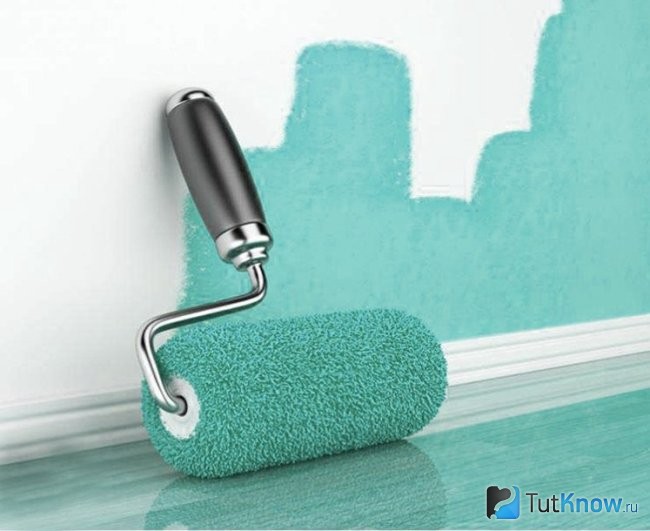
Obtaining a quality coating without special tools is impossible. Before you paint the wallpaper for painting on the wall, stock up the following items:
- For painting, find a fur roller, to create a drawing - a brush.
- Presser trowel to smooth the wallpaper, with its help squeeze the air from under the sheets.
- Soft roller for smoothing the joints of wallpaper.
- A soft brush with soft fibers for smoothing sensitive wallpaper.
- Brush for applying glue to the canvas.
- Roller of synthetic material for applying glue to the walls.
- Paint knife for cropping wallpaper near the floor and ceiling.
- Completely remove the old wallpaper from the wall, so dampen them with water and leave for a while, so that they are soaked. Use a spatula to clean the surface from the coating.
- The wall, painted with water-based paint, should be carefully wiped with a damp cloth.
- Oil paint from the wall is removed mechanically, for example, with a drill with a special nozzle.
- Close up on the wall with putty, deep nicks and cracks and primrutuyte overlap. In damp rooms, the walls should be impregnated with a fungicidal compound.
- On the floor, prepare a level surface that is a little longer than the height of the room wall. Such a site can be found in the corridor.
- Thoroughly clean the floor on a selected stretch of dirt. On it will be laid sections of wallpaper for applying glue. You can also assemble a table of two goats and a sheet of chipboard.
- In the cold season, install heaters in the room and heat it to a temperature of + 18-25 degrees.
- Take care of good lighting to ensure that the sheets fit each other.
- Remove the wall outlets, switches and other electrical accessories from the wall. Before work, turn off the electricity on the line, which runs along the wall with the dismantled devices.
How to glue wallpaper under painting on a wall
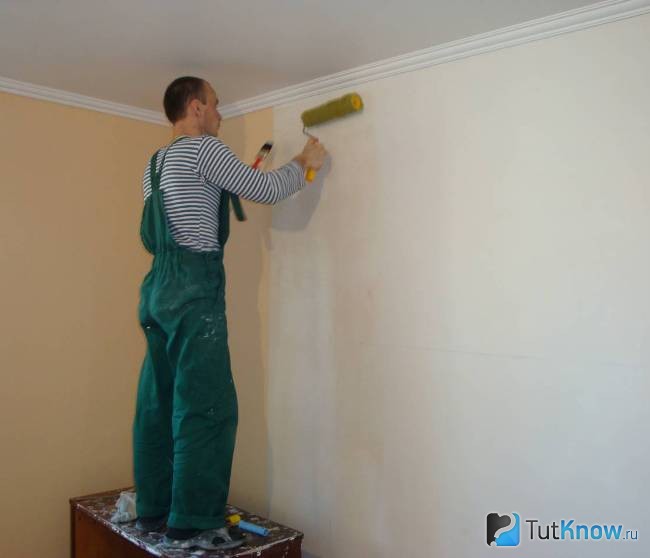
Finishing the walls with wallpaper under the paint differs little from the work with ordinary wallpaper, but the density and thickness of the sheets makes their own adjustments to the coating technology.
Close the windows and doors indoors to avoid drafts. The movement of air can cause the products to peel from the wall. Using a plumbline, draw a vertical line on the wall, which will serve as a base for sticking the first cut. The line is better to hold near the window or in the corner.
Measure the distance between the ceiling and floor in several places on the wall, increase the size by 5 cm. If there are no drawings on the canvas, cut out the necessary number of strips from the blanks. In the presence of drawings, the strips are cut after pasting the previous piece, taking into account the location of the images.
Steklooboi cut with sharp scissors or a model knife. Cut carefully, because the fiber can crumble and get on the body. It is advisable to wear a respirator when working with glass masks.
Put the first sheet on the floor with the front side down. Apply the brush with the brush from the middle of the sheet to the edges, well coating the corners and edges. Paper wallpaper does not like a thick layer of glue, sheets can tear. Fold the processed part in half. Apply glue to the second half of the wallpaper. Leave the cloth for impregnation for the period specified in the instructions.
When gluing paper wallpaper, the adhesive is applied to wallpaper and to the wall. The width of the treated area should not be much greater than the width of the sheet.
When working with non-woven wallpaper and fiberglass wallpaper, glue is applied only to the wall, which significantly reduces the working time.
Spread the top of the wallpaper, press it against the wall, aligning the edge with the vertical line applied. At the top and bottom provide a stock of wallpaper up to 2 cm. Smooth the wallpaper with a soft brush from the center to the edges and expel air from under the sheets. Gently lower the lower part of the folded wallpaper and repeat the procedure for gluing to the wall.
The next sheet is aligned on the edge of the pasted. Cloth glue only buttock, the lap joint will be allocated on the wall. After gluing, go through the joints with plastic ironing.
Remains of glue remove immediately, after drying, remove them will be difficult. The corners of the room are covered in such a way that the wallpaper moved to the next wall by 2 cm. After a couple of days, cut off excess parts of the wallpaper near the floor and ceiling.
When glued non-woven wallpaper can be glued parallel to the floor. This arrangement of sheets gives the room a perfect look.
Before painting the walls with wallpaper for painting, check the smoothness of the angle.
Technology of painting wallpaper on the wall
![]()
After drying the wallpaper, you should decide on the need to paint the canvas, because many products look so good. In most cases, manufacturers recommend immediately painting the walls, except for models that are processed during manufacture.
The most convenient way of applying paint - with a roller. The tool, impregnated with paint, must move along the sheets and evenly distribute the paint. Do not run the roller one place a number of times, wait until the first layer has dried for 1 hour. During staining, bubbles are not allowed to form. If they appeared, cut them, slide them over the roller and paint the area again.
Flizeline wallpaper can be painted in several ways. To obtain an unevenly painted surface, the sheets on the back side are covered with water-dispersion latex paint before the gluing, which will appear from the front side on a non-woven base. After drying, the panel can be glued to the wall in the usual way, and then cover the front side with the main color. As a result we get two-color wallpaper.
Another option for finishing the walls with wallpaper for painting to obtain a multicolored coating: after the wallpaper is pasted, the canvas is painted in the main color, and then the paint is removed from the embossed surface of the sheet with a sponge. The cleaned surface is painted in a different color.
Also, you can paint the base wall in the desired color and glue the wallpaper on top. Flizelin is transparent, and the wallpaper will acquire a light tinge of the painted wall.
The painting of fiberglass is slightly different from the treatment of other types of wallpaper for paint. The material absorbs the paint well, so before working it must be primed with dilute wallpaper glue (50-70 g for 5-6 water). Primer is applied with a thin layer of paint roller. After priming, the surface is painted in 2 or 3 layers. The rate of paint consumption: 500 milliliters per square meter.
Glass mural in the kitchen is covered with acrylic paint, which is easy to wash. When repainting, you can use paint with a deep texture, in this case, the initial layer can not be deleted.
How to glue wallpaper under the painting on the walls - look at the video:
Pasting the walls with wallpaper under the paint is a good option for decorating the interior of the room. The technique of covering the walls is simple, but it requires an accurate adherence to the sequence of work.
Wallpaper for painting in the interior helps without additional effort and expense to make positive changes in the interior. For example, appropriate wallpaper for painting in the interior of the living room, bedroom. This is especially true in those cases when the decorated room has small dimensions.
In the photo - the decoration of the living room with the help of wallpaper for painting. They give an amazing result, help to translate into reality the creative ideas of the interior designer.
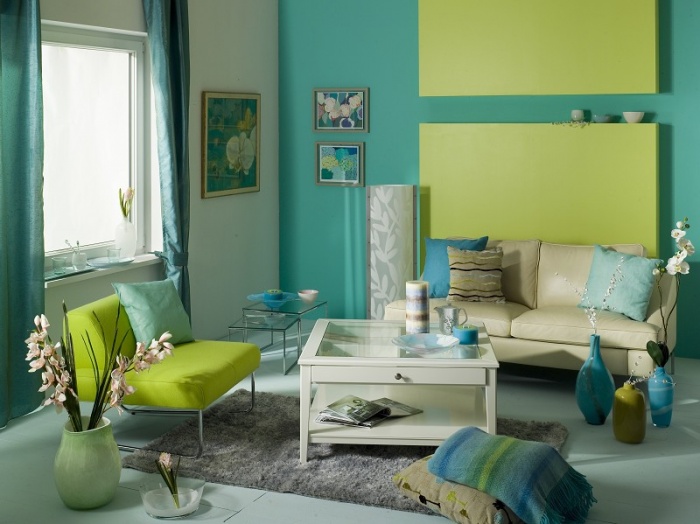
Varieties of materials for wall decoration
In the modern construction market, you can choose a variety of wallpaper for the cosmetic repair of walls. Any buyer can choose wallpaper for painting. Photos in the interior of the wallpaper for painting can be viewed on the designer sites.
![]()
A fashionable trend in recent years among decorators are painted after wallpapering the wall in the apartment. Those who plan to use paint in the apartment, must take into account certain subtleties.
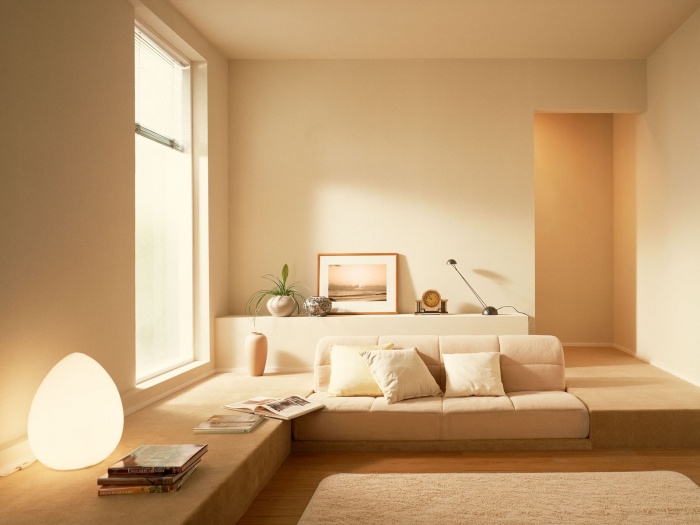
Advice! To ensure that the chosen color scheme helped create an ideal interior in the room, it is advisable to consult a professional decorator.
What is good wallpaper for painting. Reviews (photos in the interior below), only positive from those who have already tried this option in his home.
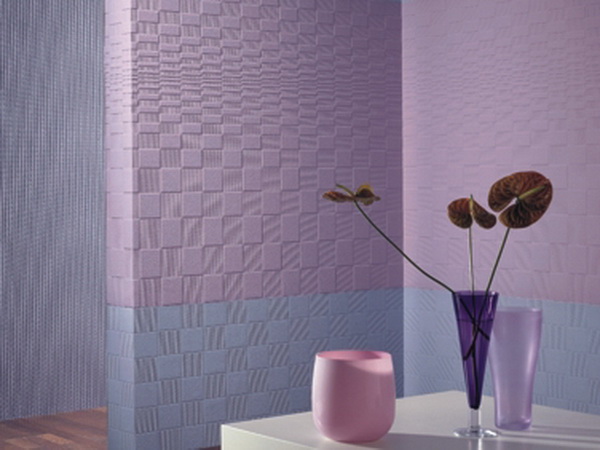
Attention! When painting textured plaster, you will not only become the owner of painted walls, but you will also be able to enjoy the relief texture.
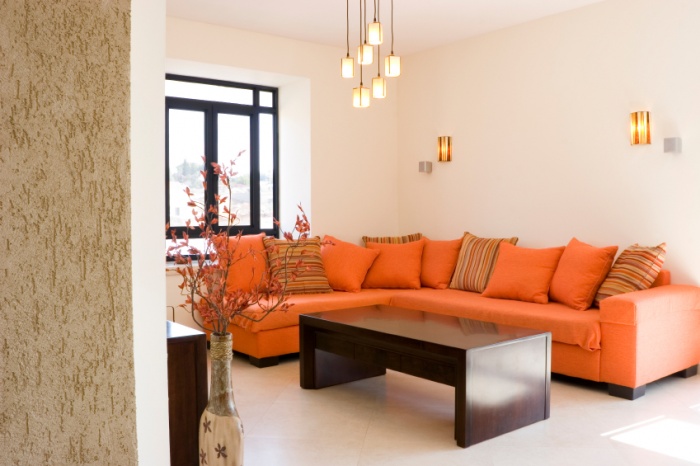
In addition to excellent aesthetic characteristics, the paint has excellent sound insulation and thermal insulation characteristics.
Wallpaper for painting, reviews about which only the most positive, have certain positive and negative characteristics, we will identify them together. In the photo - a variant of decorating the walls in the hallway with the help of wallpaper for painting.
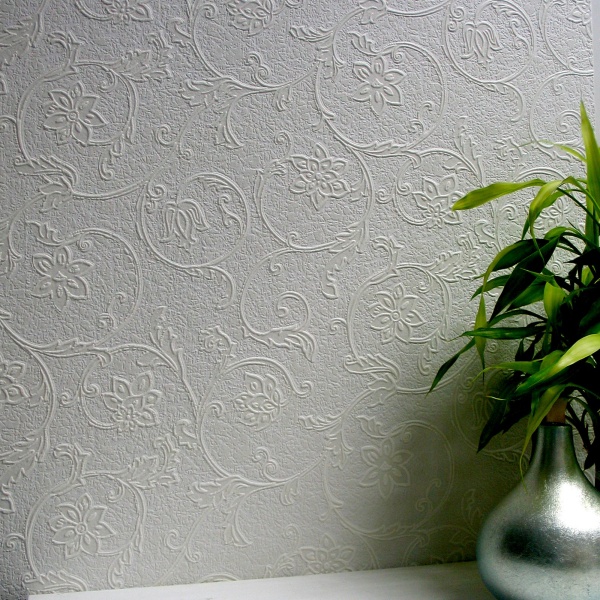
Speaking about the advantages of such decorative materials, we first of all note the rate of change in their appearance. If you want to make changes to the color scheme of the room, you do not have to tear off the old wallpaper, re-prepare for wall gluing, just pick up a new paint color, and do the painting work.
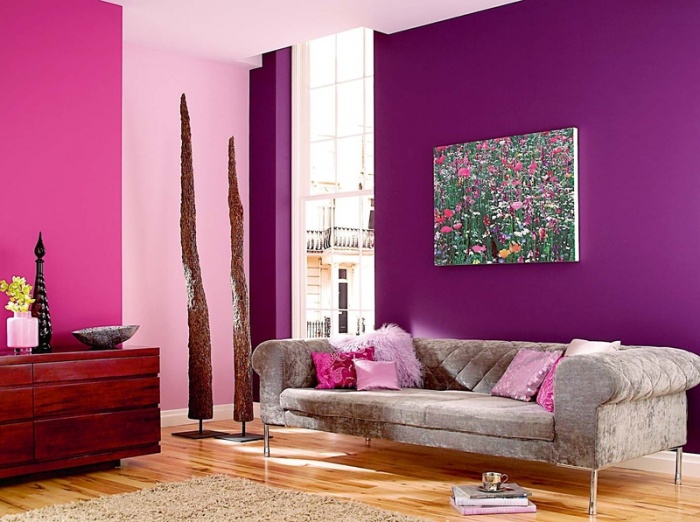
Attention! With proper use, the wallpaper for painting can withstand 5-7 transformations without changing their appearance.
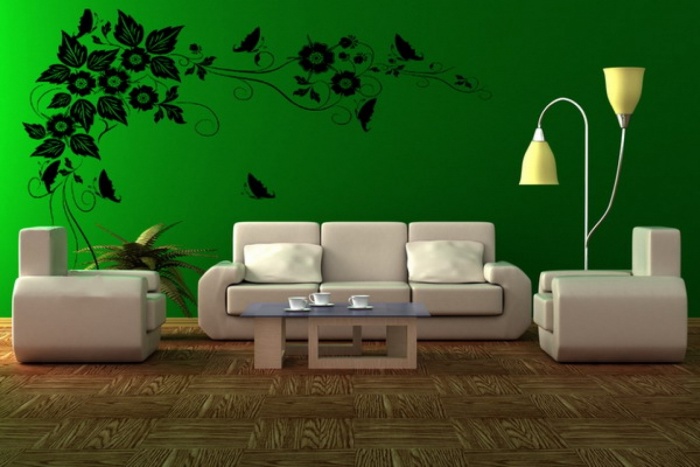
Rules for choosing wallpaper for painting
In the photo there is a variant of the interior created with the help of wallpaper for painting. To begin with, not all wallpapers are suitable for painting. In many cases, after application to the wall, pasted with wallpaper, bubbles appear on the surface, the materials begin to exfoliate, lose their original aesthetic appearance.
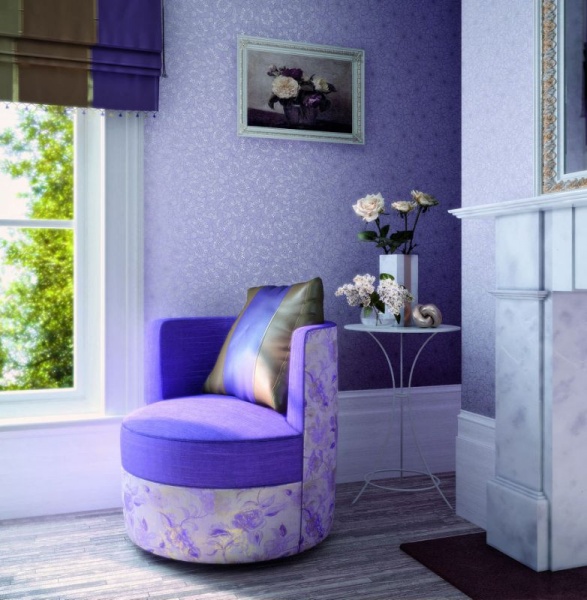
It is necessary to choose for painting only certain types of wallpaper: glass, paper, non-woven fabric. Manufacturers initially offer buyers materials of neutral shades or white. The buyer, depending on personal taste preferences, can choose a shade of paint, or use several different colors for repair work.
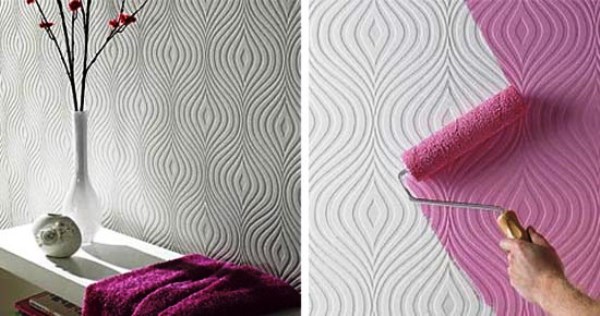
The technology of creating a variety of canvases for painting has significant differences, so you need to consider when selecting wallpapers and their density.
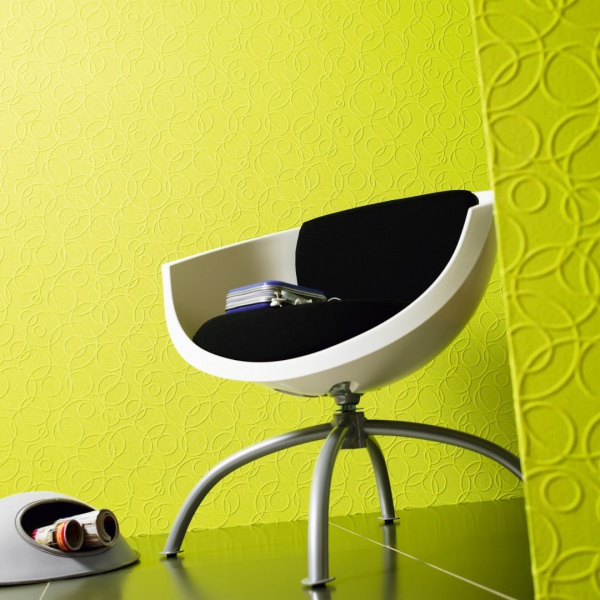
The video fragment contains original photos, as well as useful tips for those who decided to make cosmetic repairs using wallpaper for painting
The most affordable among the interior professionals are paper wallpapers. They can be glued to any kind of surface. Basically, such materials assume a two-layer structure. They are denser and thicker than classic finishing materials.
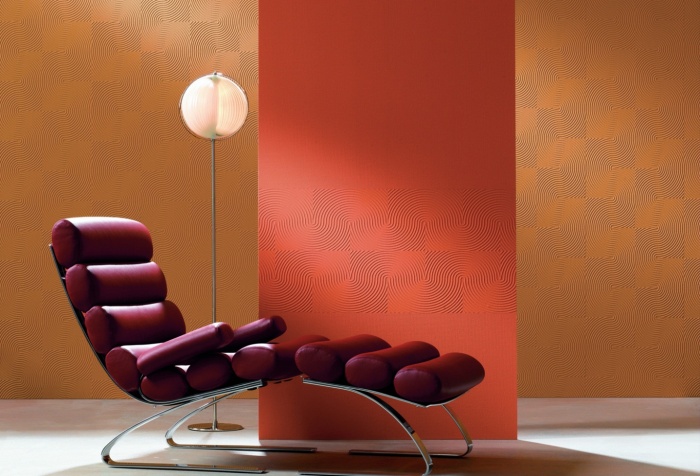
Advice! In order to avoid the bubbling and flaking of the walls of paper materials, it is necessary after applying the first layer of paint, wait for it to dry completely.
As an additional protection, professionals recommend covering the wall with a special water-repellent compound.
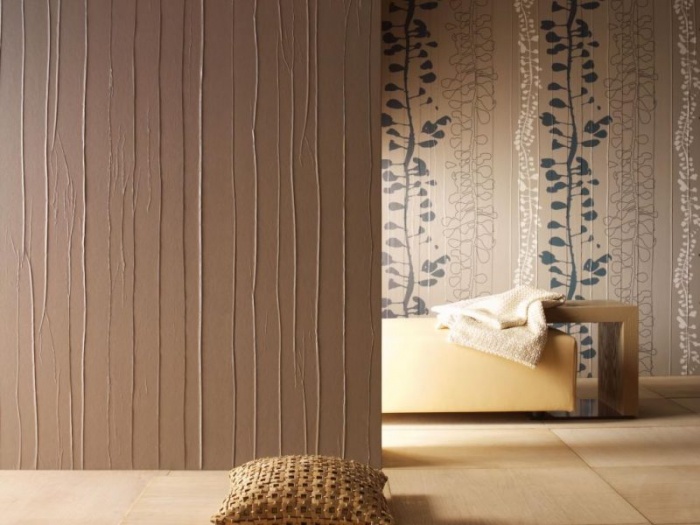
With the right approach to finishing works, paper materials can be used to decorate not only the walls, but also the ceiling.
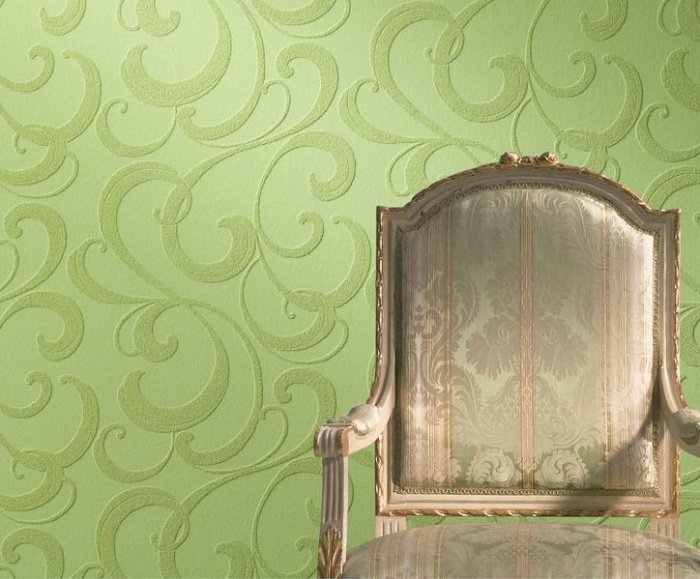
Nonwoven materials have a high density in comparison with paper wallpaper for painting. Among other advantages of such finishing materials, we also distinguish their mechanical strength. The non-woven base is applied with special stencils foamed vinyl, which makes the cloths embossed, with interesting textures.
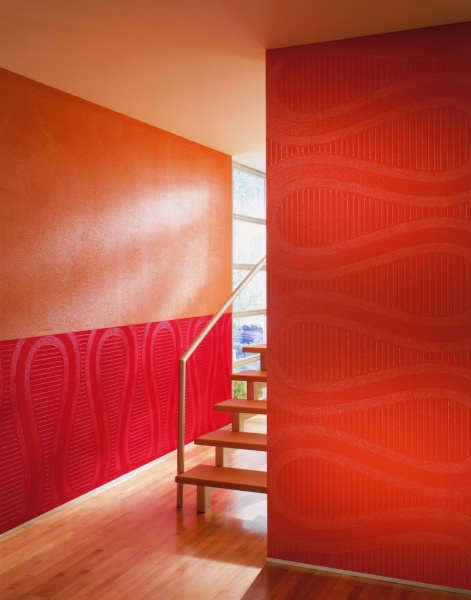
Advice! When selecting non-woven fleece liners for painting, professionals recommend paying special attention to the quality of vinyl. Given the fragility of this coating, there is a high likelihood of scratching it during gluing or painting.
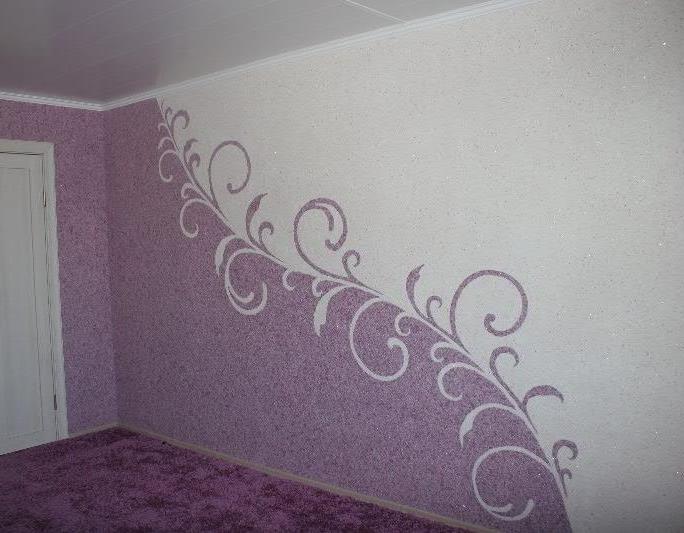
Among the main advantages of such finishing materials are their high strength, smoothing of unevennesses on the walls, cracks restraint. Interior professionals strongly recommend this option of decorative coatings for repair in new buildings. In the photo, a sample of the use of non-woven materials in a residential interior. The dense structure of this kind of trellis makes them an excellent option for decoration.
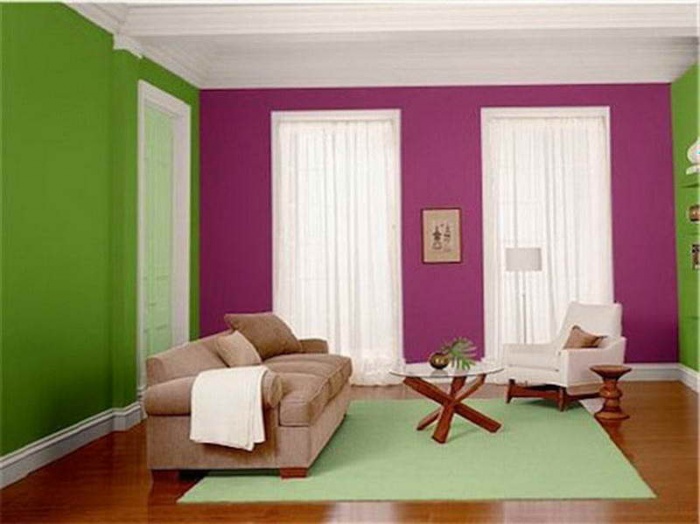
Wallpaper based on fiberglass began to be used in interior decoration relatively recently. Fiberglass yarns are in demand in the manufacture of bulk photo wallpapers.
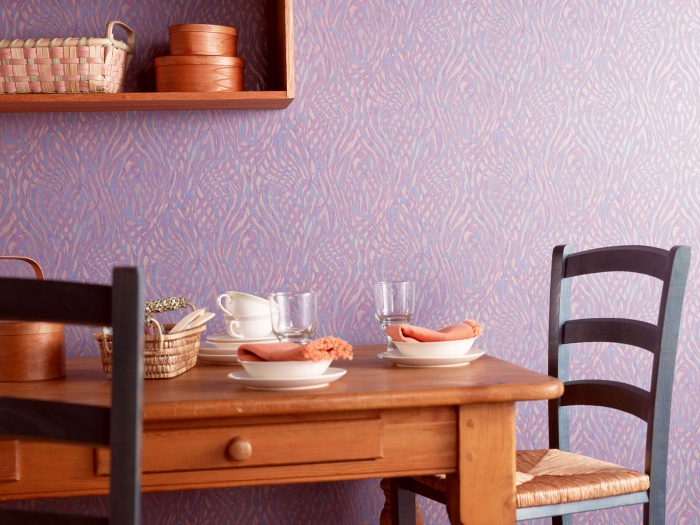
Quartz sand, lime, soda, dolomite are used in the production of glass walls. This composition is applied to a thick paper substrate. The resulting patterns have different structure and density. The interlacing of threads is possible in different reliefs and combinations, which makes it possible to use such materials for the practical implementation of any, even the most daring design fantasies in its interior.
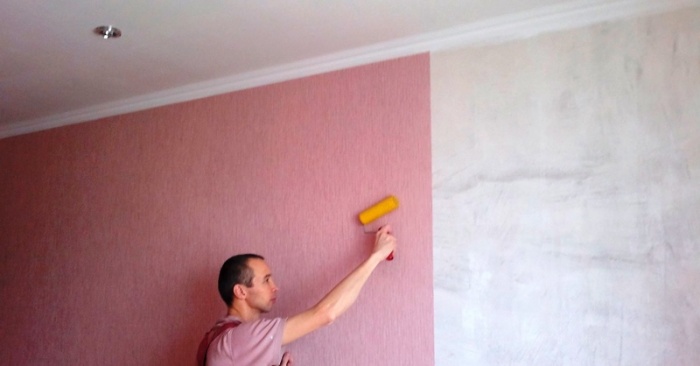
These finishing materials are one of the most durable and durable types of wallpaper. Despite the relatively high cost, a long operational life of their use will help pay back all costs.
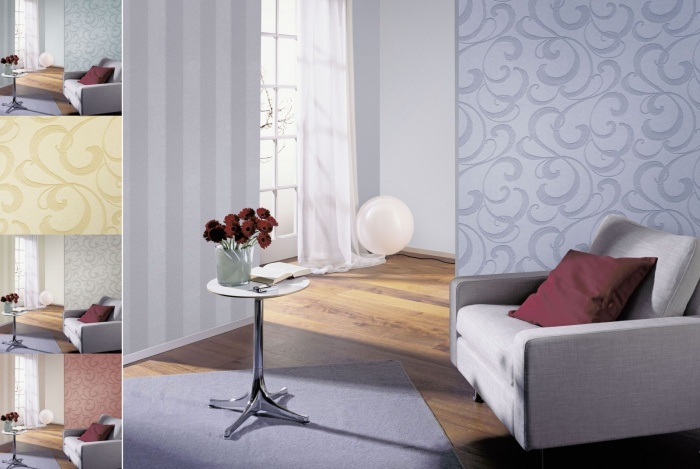
Steklooboi are resistant to the action of ultraviolet rays, they do not change their aesthetic characteristics even after the application of abrasive agents.
Advice! Steklooboi can be used not only for decoration of living rooms, but also for design in the office.
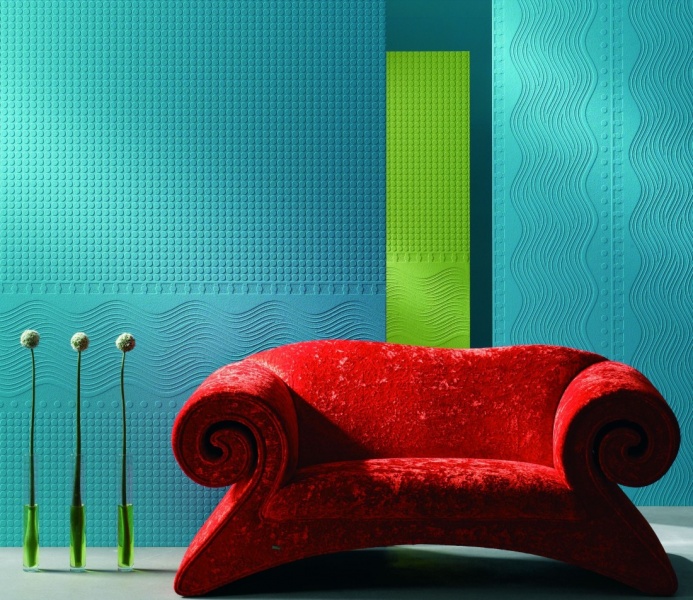
Such materials do not require you to have special skills when sticking. Among the minuses, in addition to the high cost, one should also mention the difficulty of tearing off the wall surface.
Rules of interior decoration with wallpaper for painting
There is nothing in the design that it would be impossible to do on its own. It is quite possible to cope on their own and with the question concerning the use of wallpaper in the interior for painting. In addition to substantial savings in material resources, you will be absolutely sure of the result.
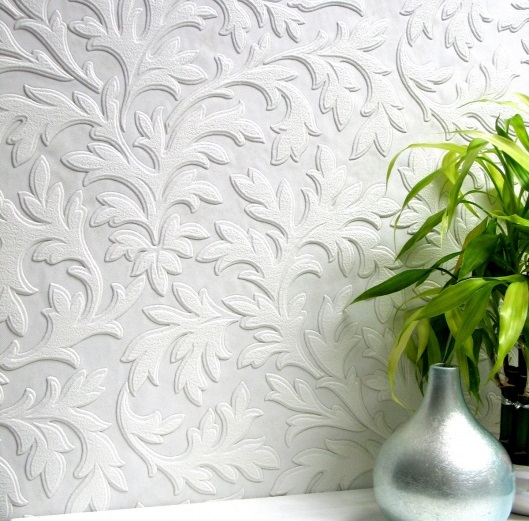
In order to independently paste walls with trellises for painting, you need to stock up with certain materials and tools: building scotch, brushes, roller. When choosing a paint, it is important to consider the characteristics of individual materials.
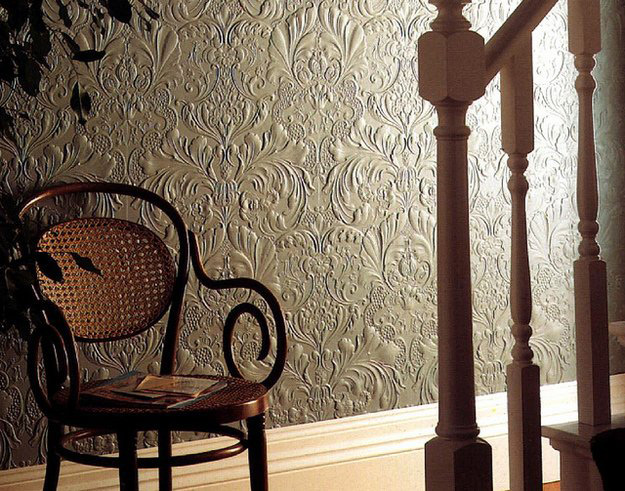
For example, for paper linens and wallpaper based on nonwoven, water-based paint is suitable. Wallpaper based on fiberglass is covered with latex or acrylic paint.
In addition, when choosing a paint, consider the option of servicing finished surfaces after finishing all repair work.
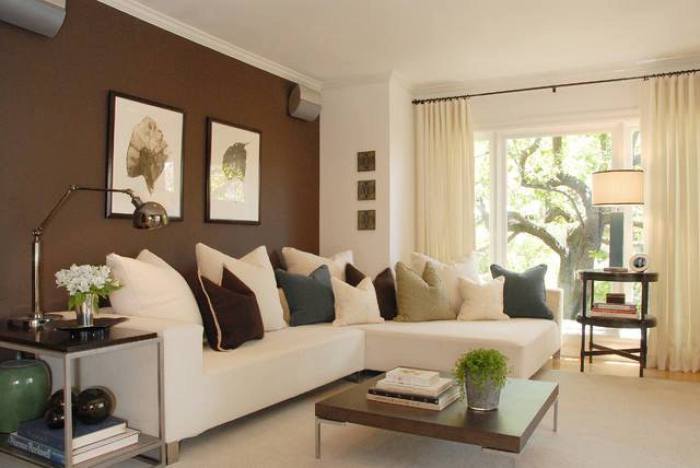
To start, the wallpaper is covered with two layers of selected paint, withstanding between painting for at least an hour.
Attention! With numerous painting, the texture on the canvas becomes less noticeable.
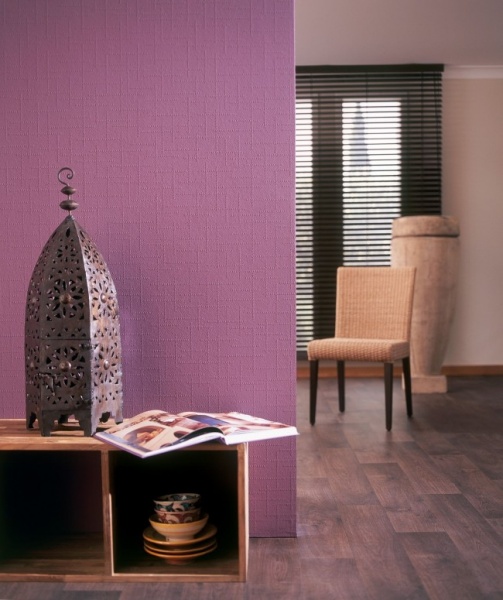
When choosing a combination of several paints for painting walls, it is desirable to use a brush when separating the boundaries. Painting is best done at an air temperature in the range of 17-22 degrees Celsius.
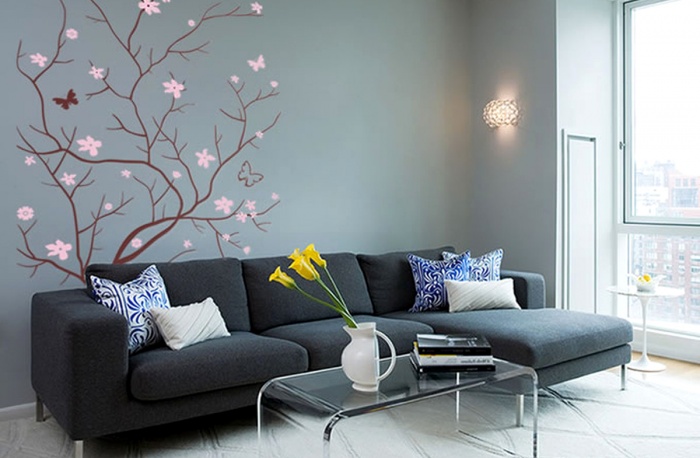
Color combination options
The use of a combination of several colors of paints is carried out for different purposes. For example, this method allows you to select individual zones within a single room. It is also possible, as a result of such a combination of several shades, to add a bright accent to the interior. Professionals often use this interior technique to create modern styles.
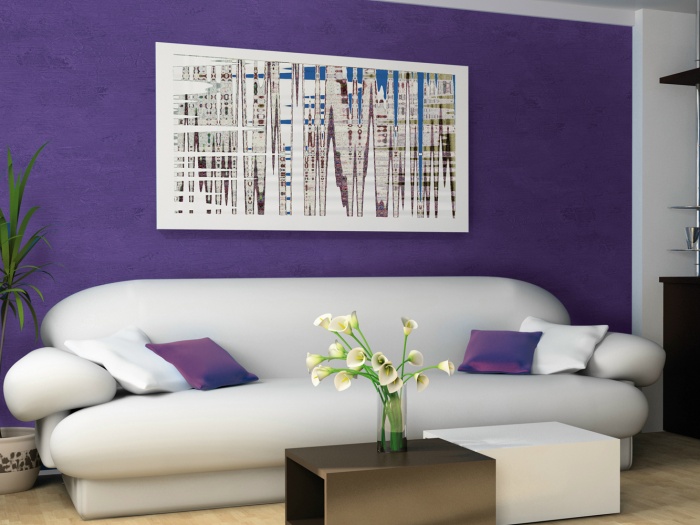
When painting the wallpaper, it is important to be careful and careful. Otherwise, instead of the desired image, you risk getting the opposite result. There are several important points that professionals of interior art advise to consider when carrying out painting jobs inside living quarters.
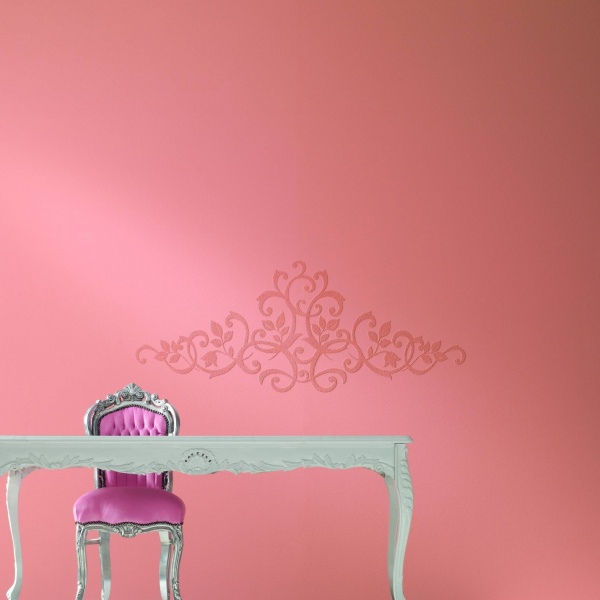
First of all, you should mention the application of no more than three colors when painting walls. Selectable shades should be similar in tone. For example, it is appropriate to use mint, gray, blue tones.
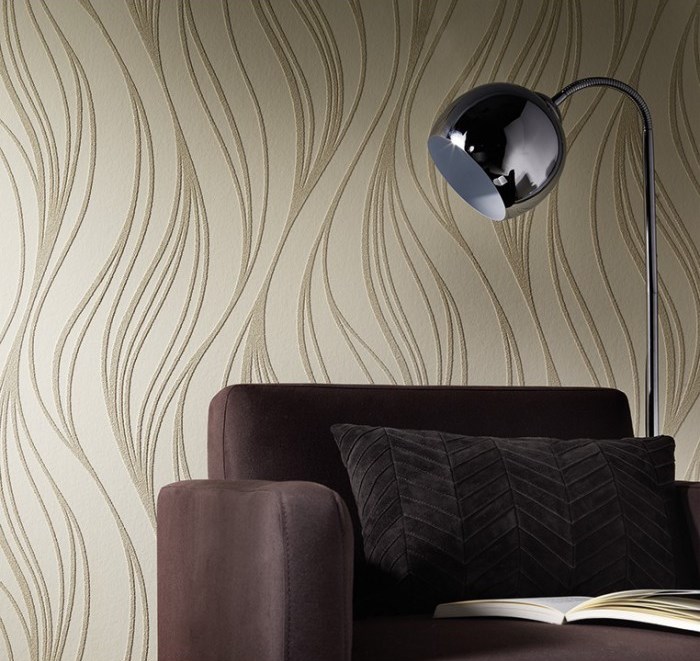
With gradient combination, choose a combination of one tone, having differences in the degree of saturation. Among the latest innovations in the coloring of wallpapers, the selection of opposite colors is of interest. For example, green is complemented with a red tone, orange is combined with a blue tone, and violet is "diluted" with a yellow tinge.
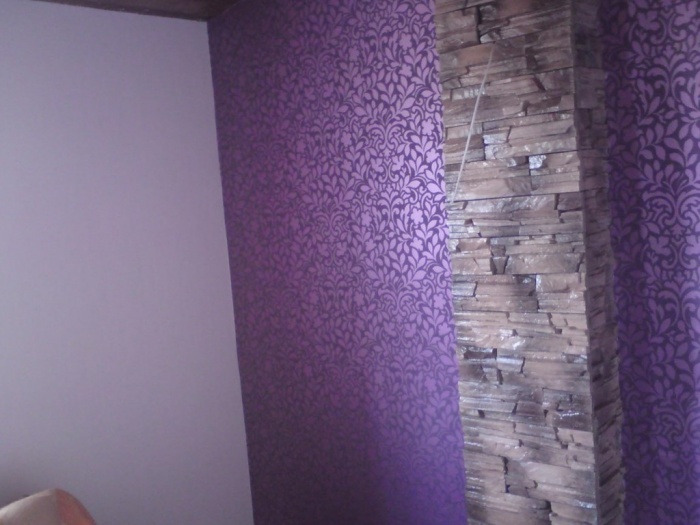
When choosing contrasting colors, interior experts advise paying attention to the saturation, temperature. Bright colors are perfectly complemented by dark colors, bringing harmony and homeliness into the finished interior.
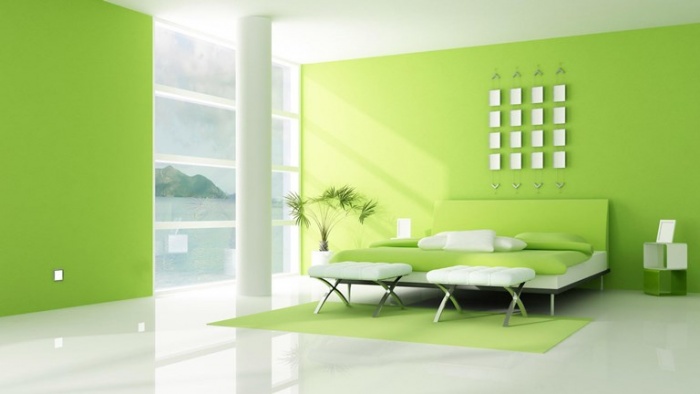
Advice! If you are not sure that you will be able to choose the best combination of colors on your own, it's better to contact professional designers right away.
A combination of colors is necessary before the beginning of finishing works. To get beautiful borders between individual elements of the wall, you will need a building scotch. If you do not have such an opportunity for various reasons, this role can be performed by an ordinary paper border, wooden slats, mosaic, molding.
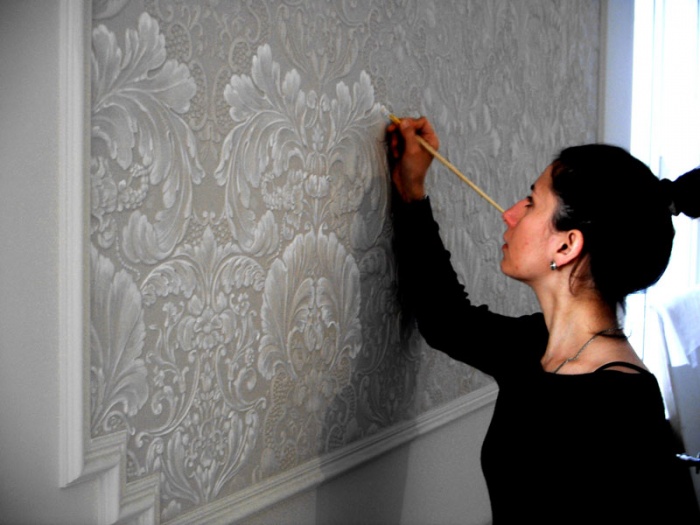
When combining the colors on the protruding corner, for an aesthetic image, interior designers advise using an aluminum profile.
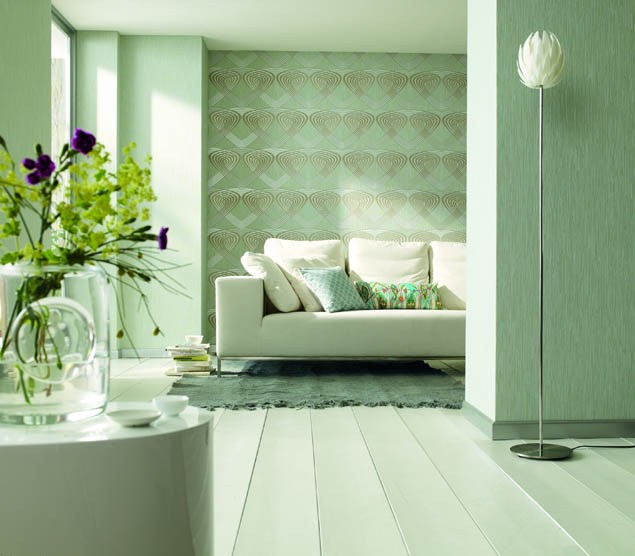
When buying paint, it is desirable to make calculations, adding to the result obtained about 30 percent (in stock). For example, if you do your own painting, it is desirable that it was slightly more than you originally planned for painting the walls. The reason for this "reserve" is that it is almost impossible to re-obtain the initial shade.
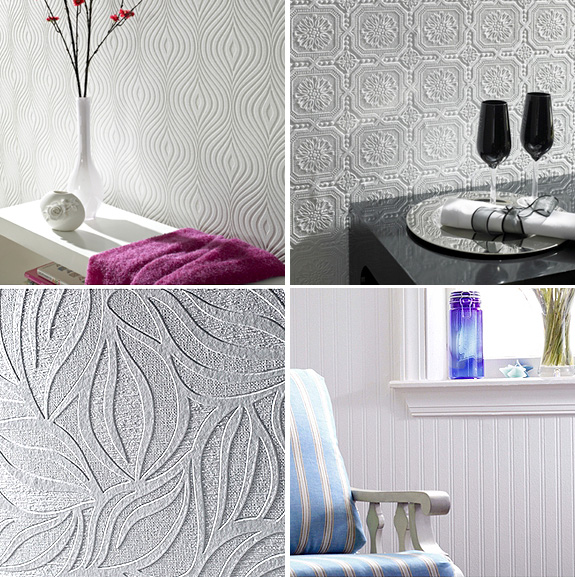
Conclusion
Depending on the structure of the finishing materials, it is necessary to approach the selection of paint responsibly. Among the numerous options for combining several colors, mainly use the separation of several colors horizontally.

